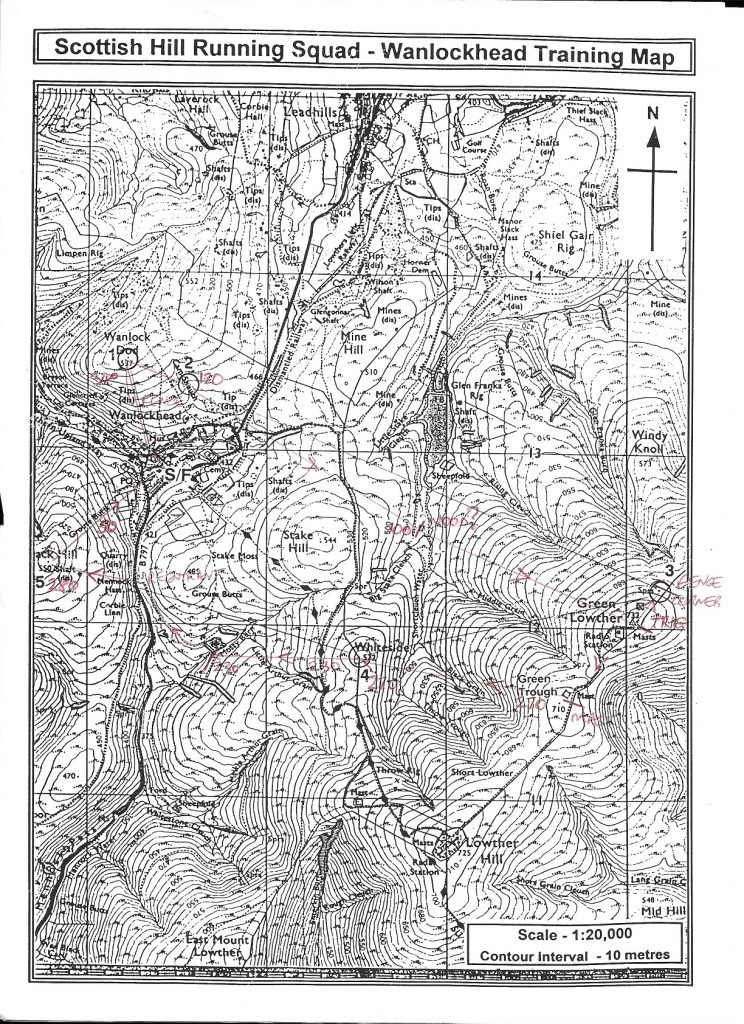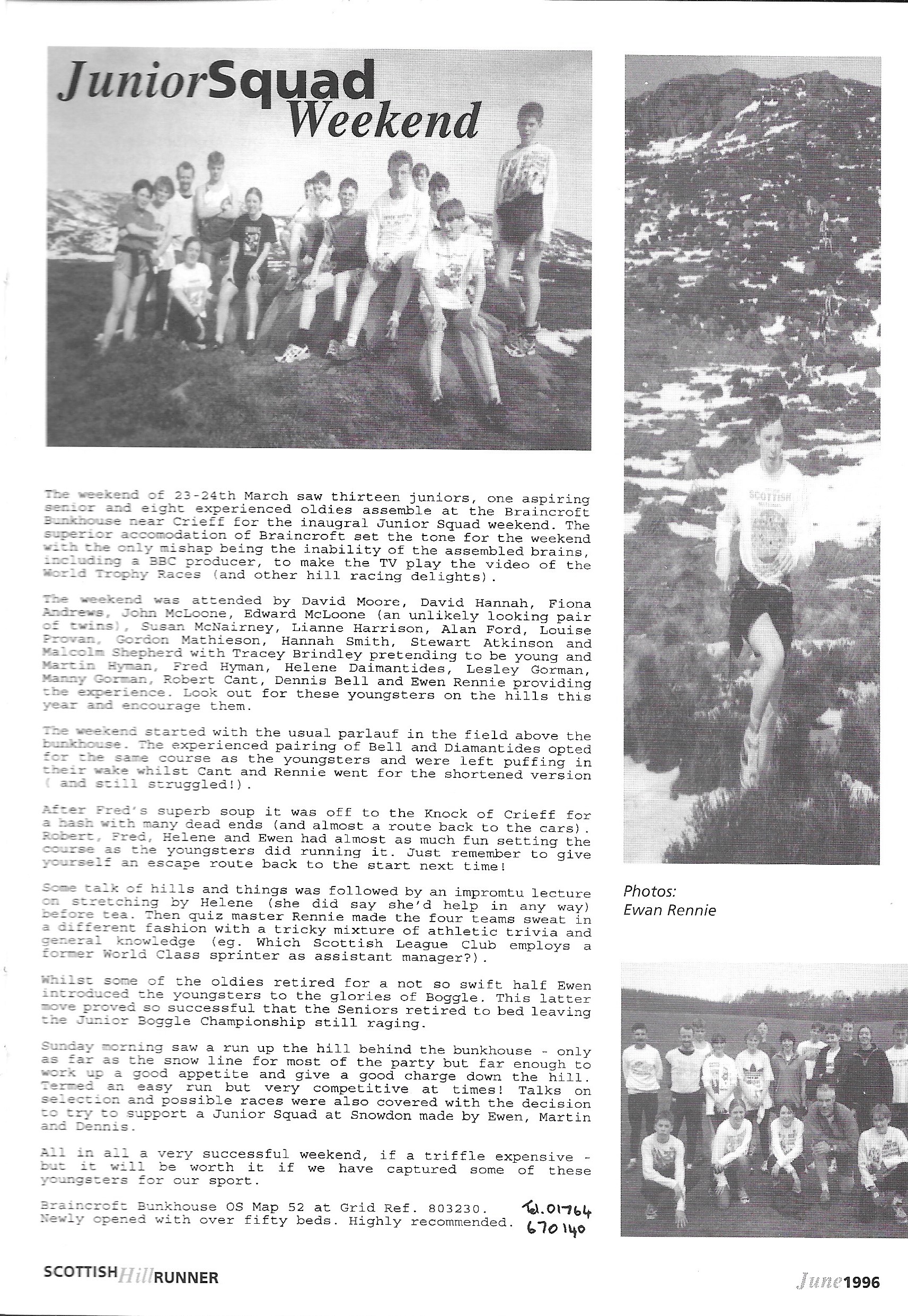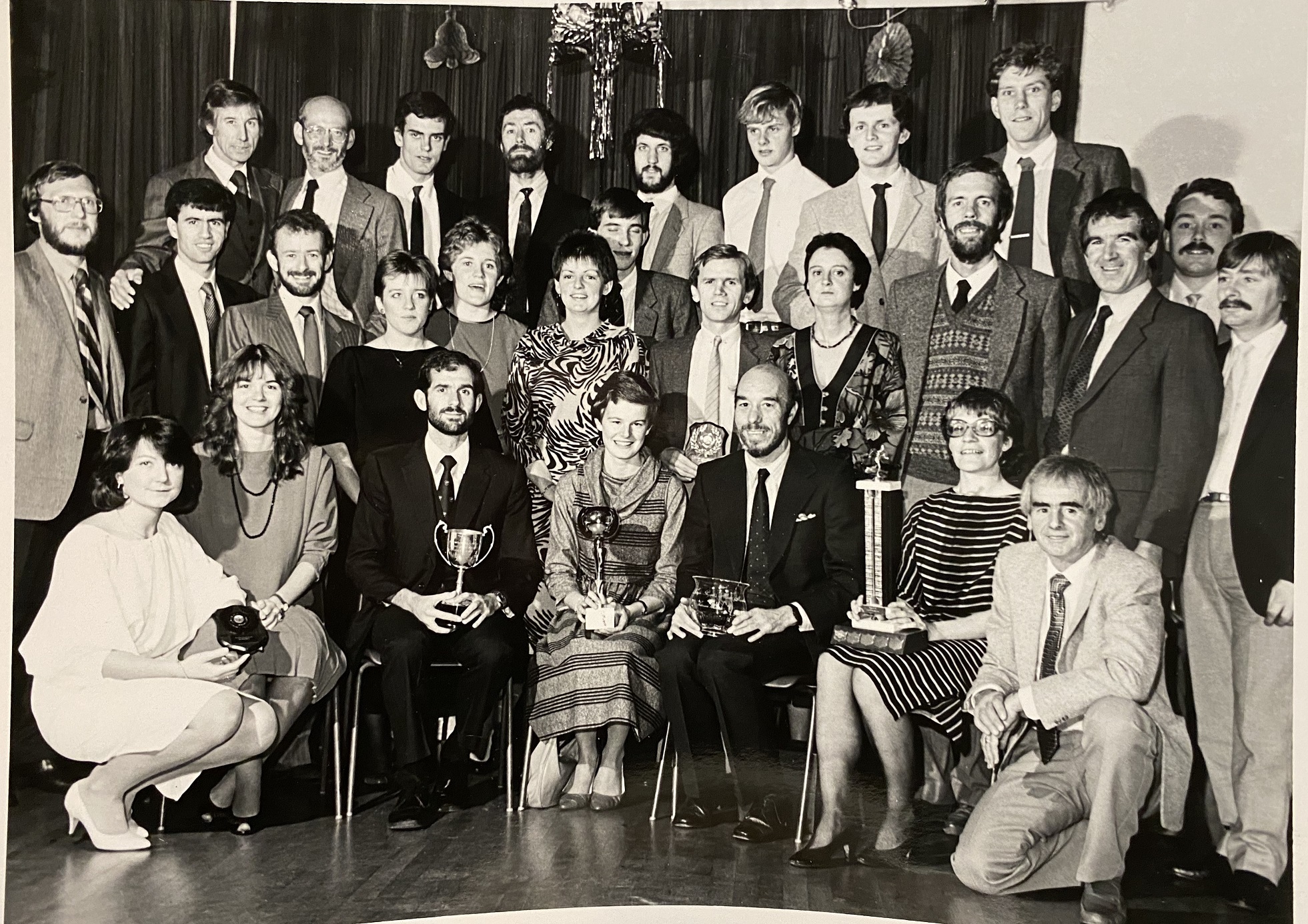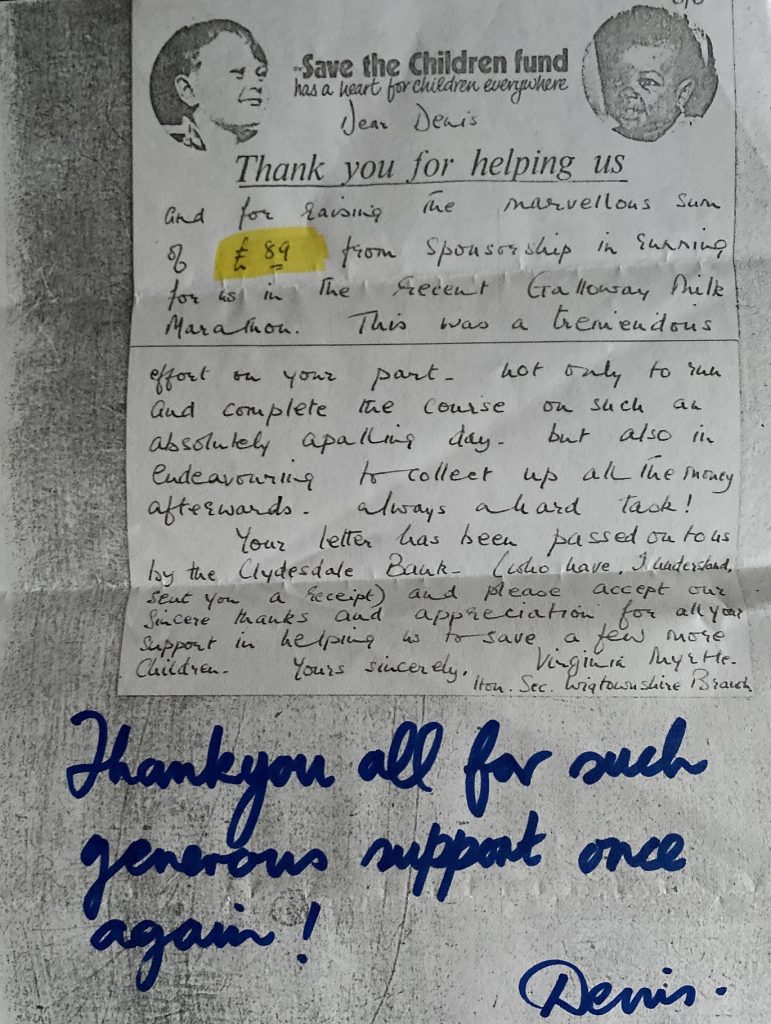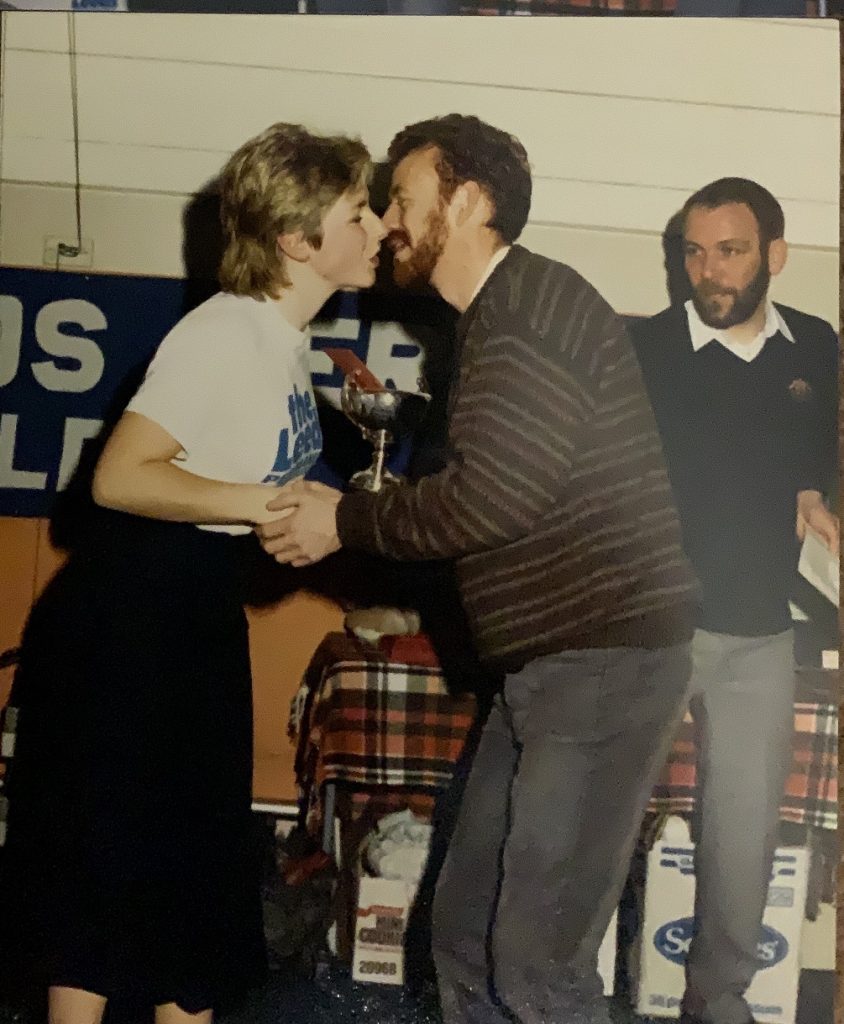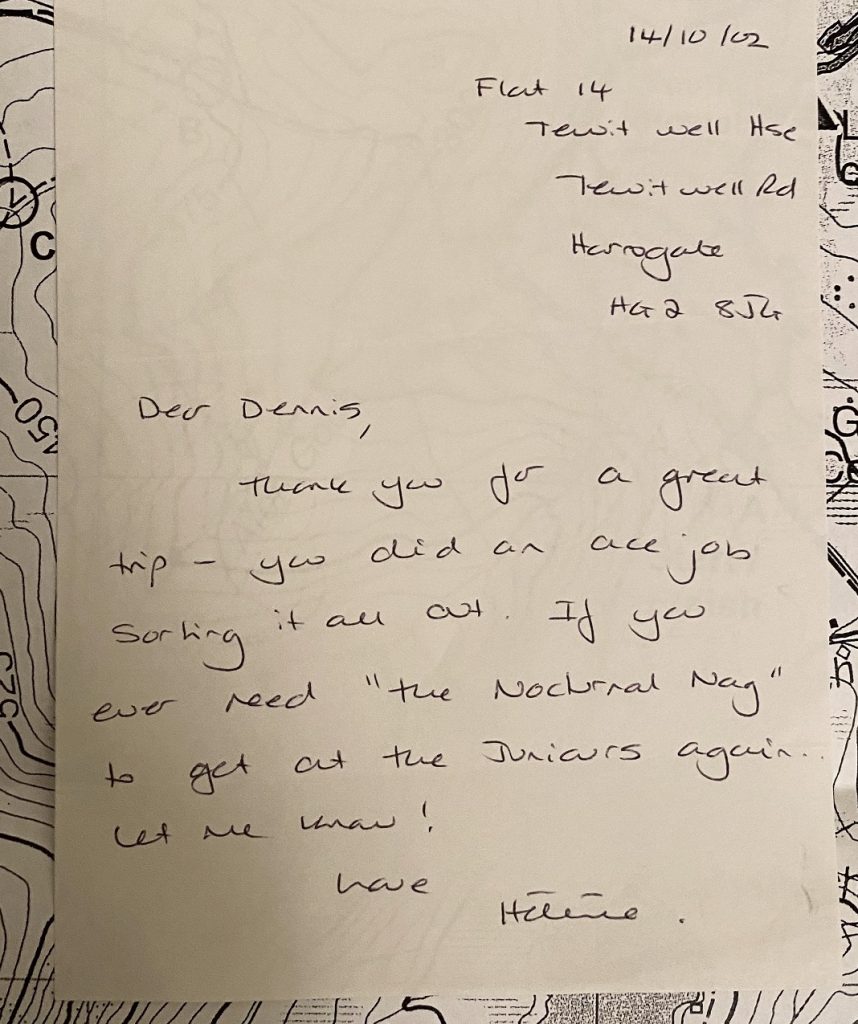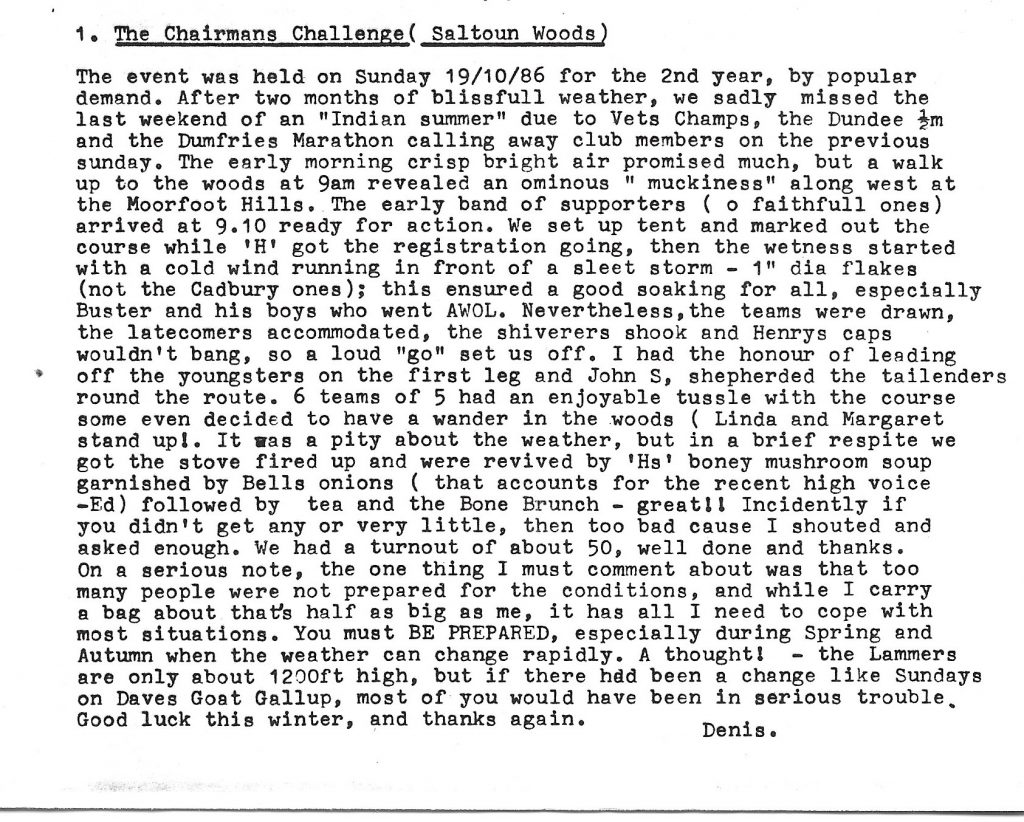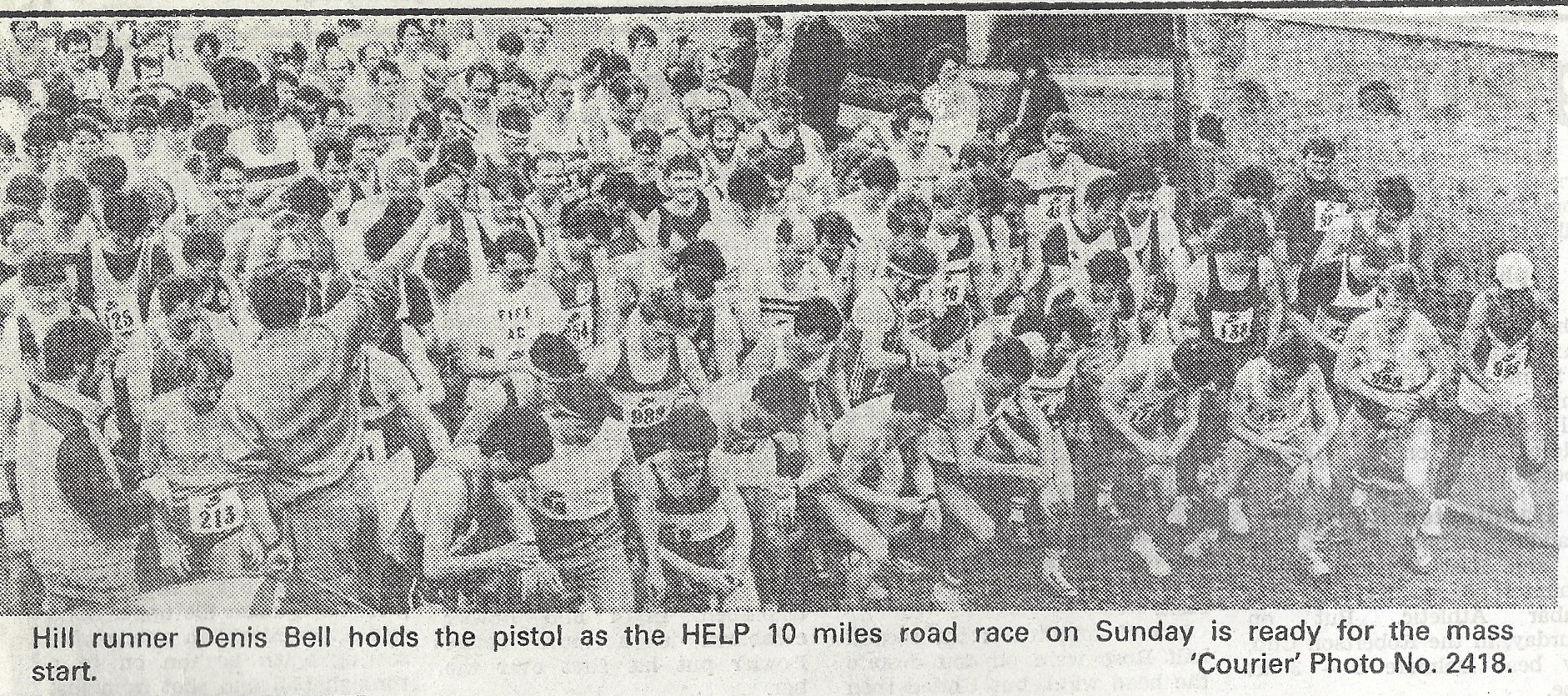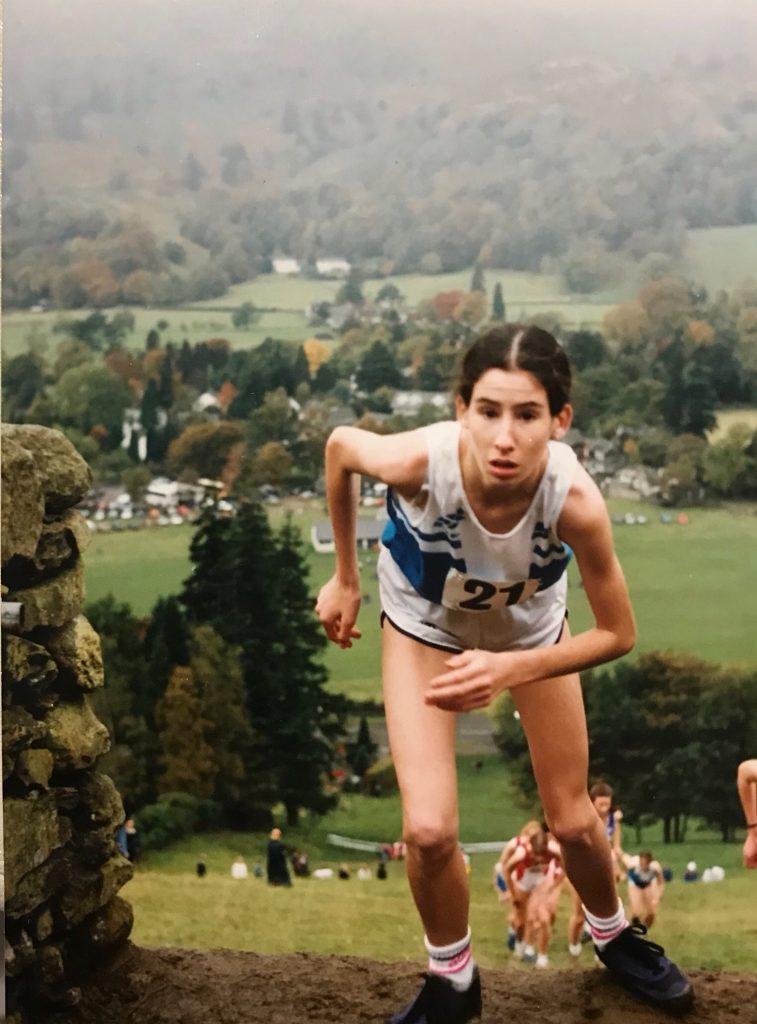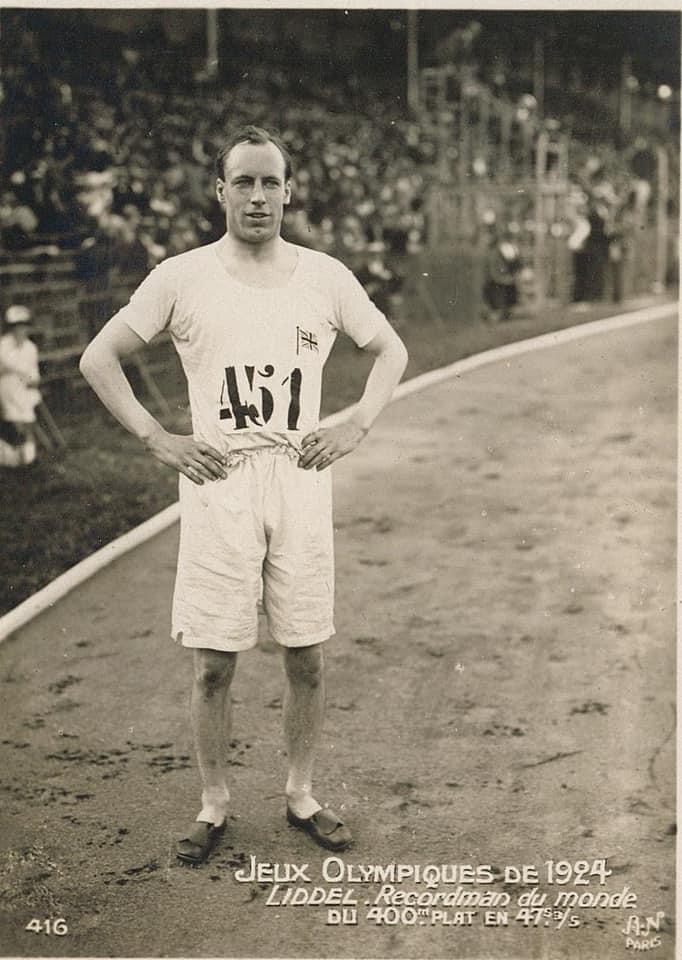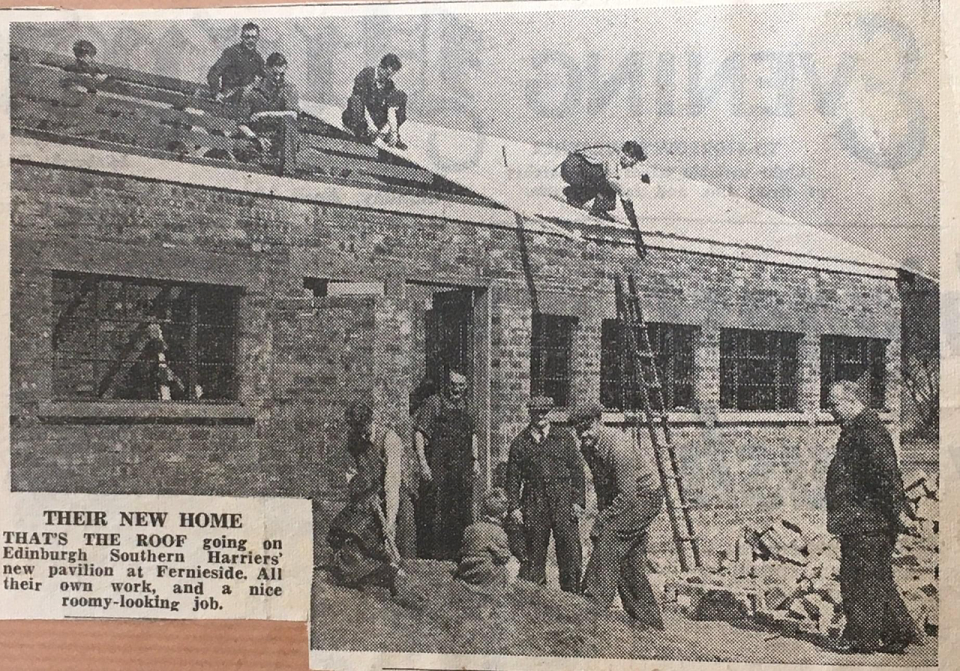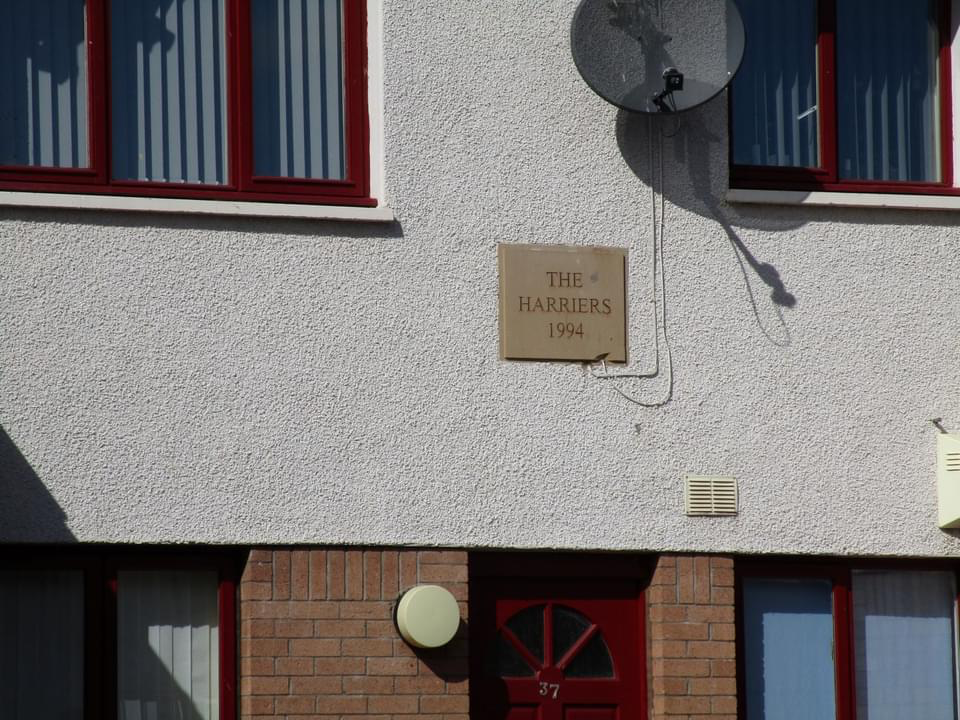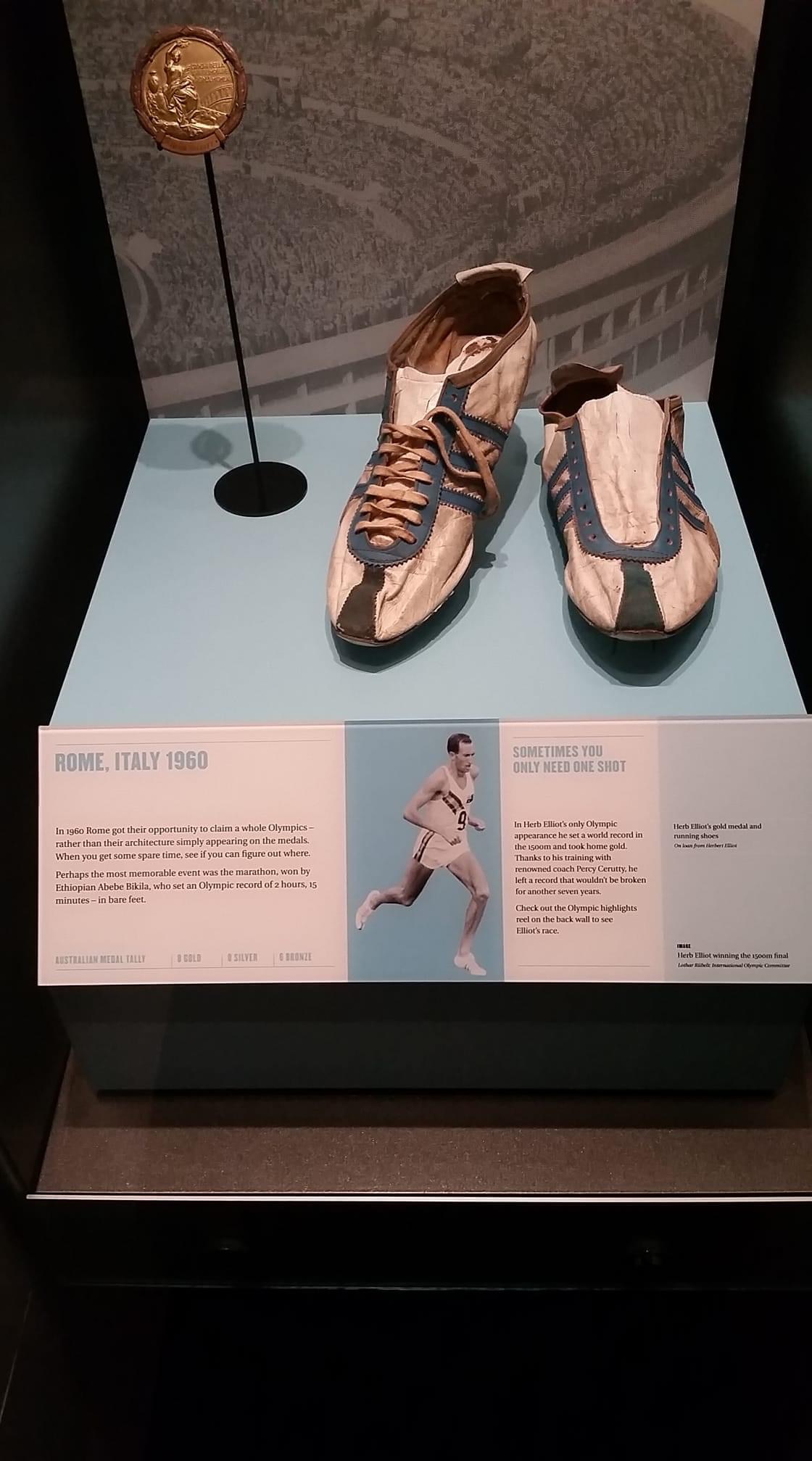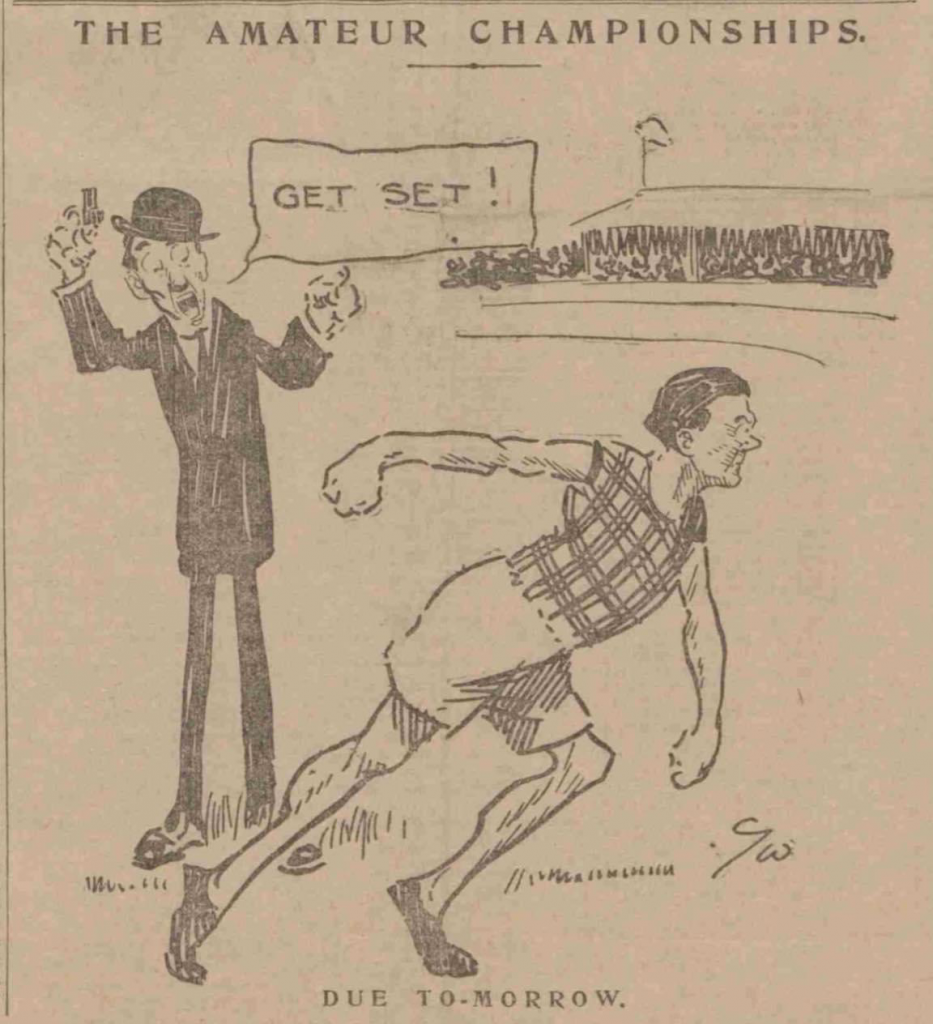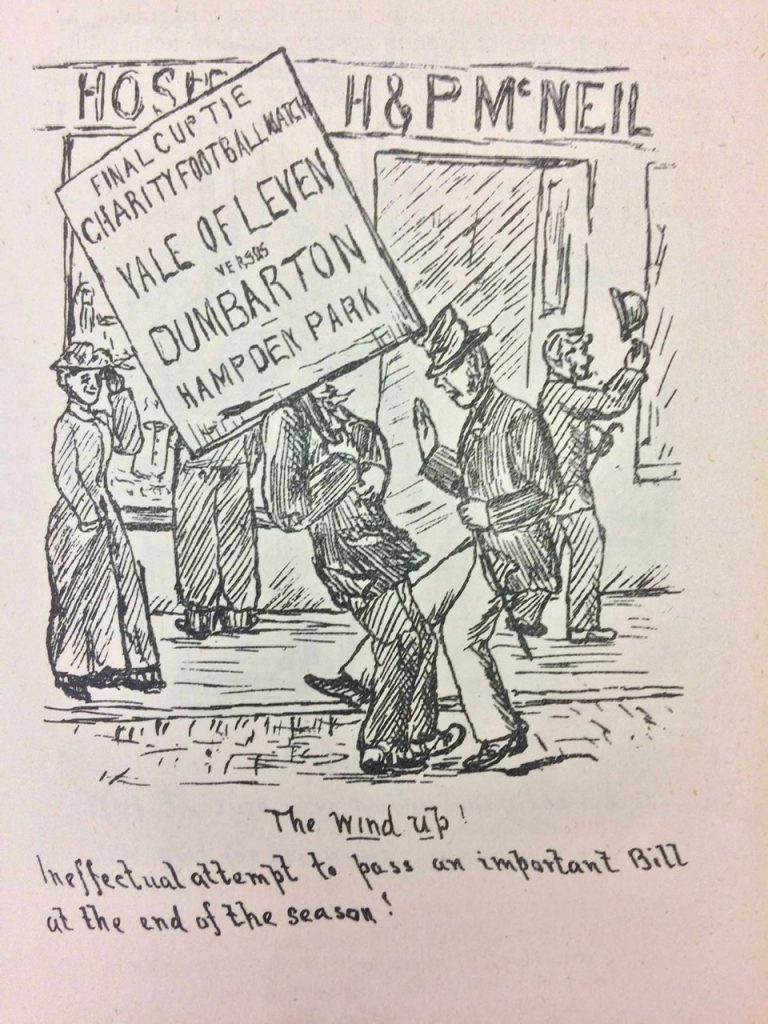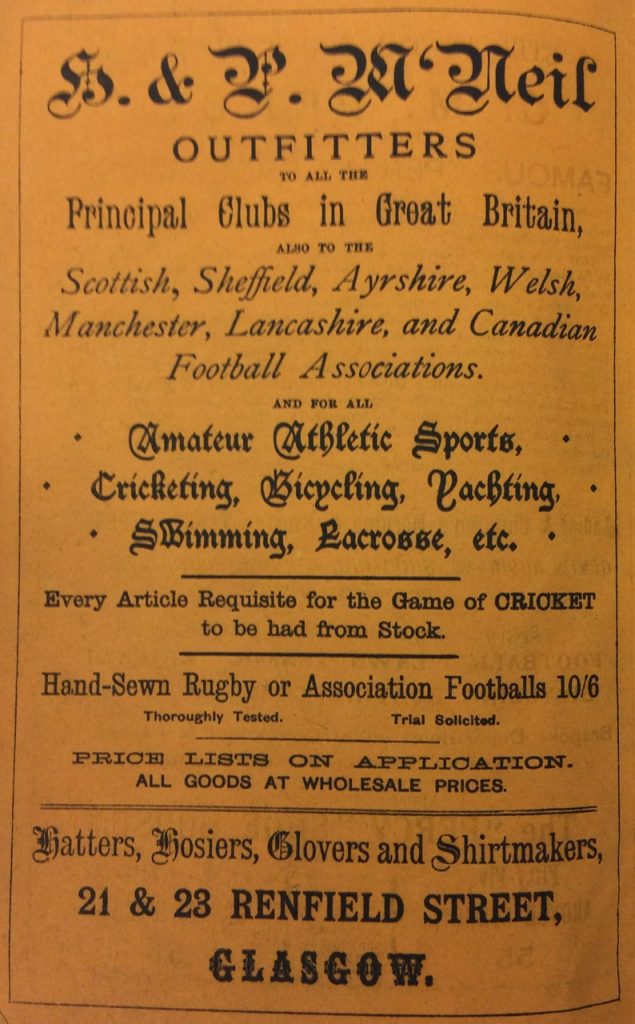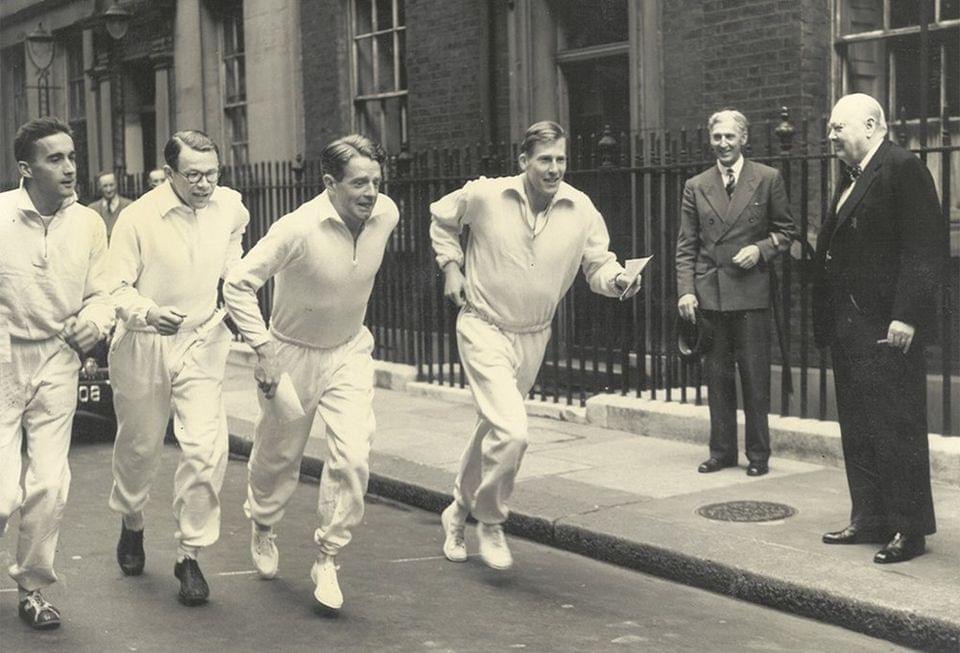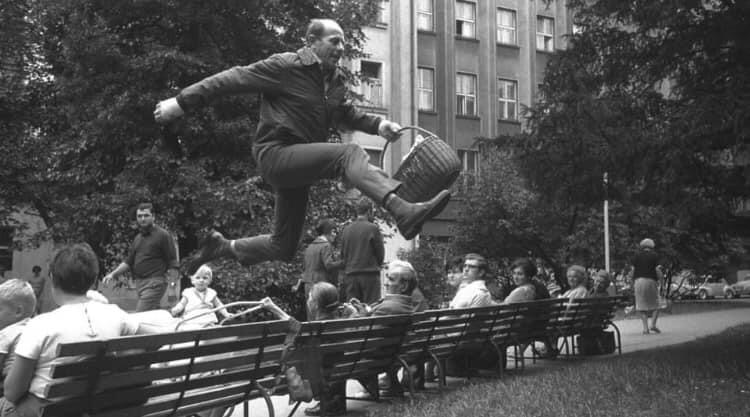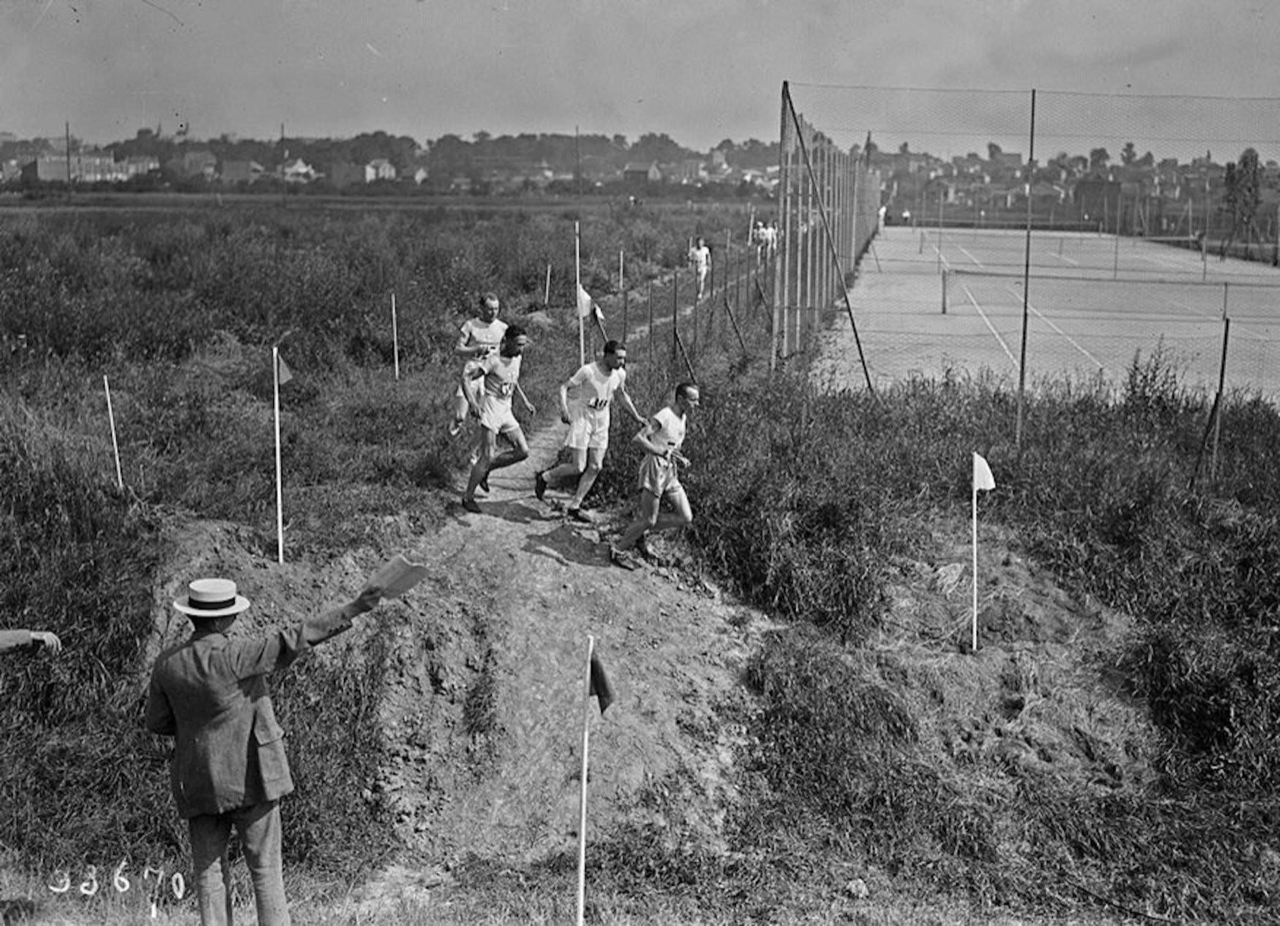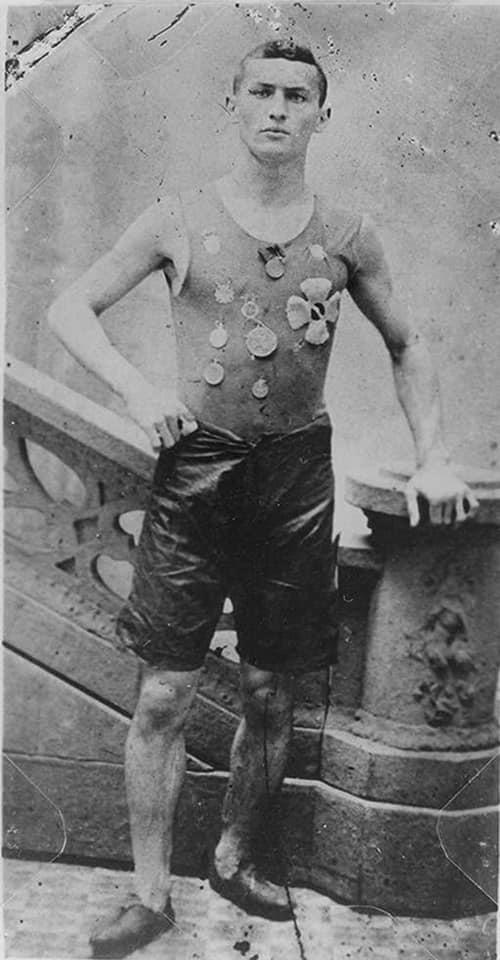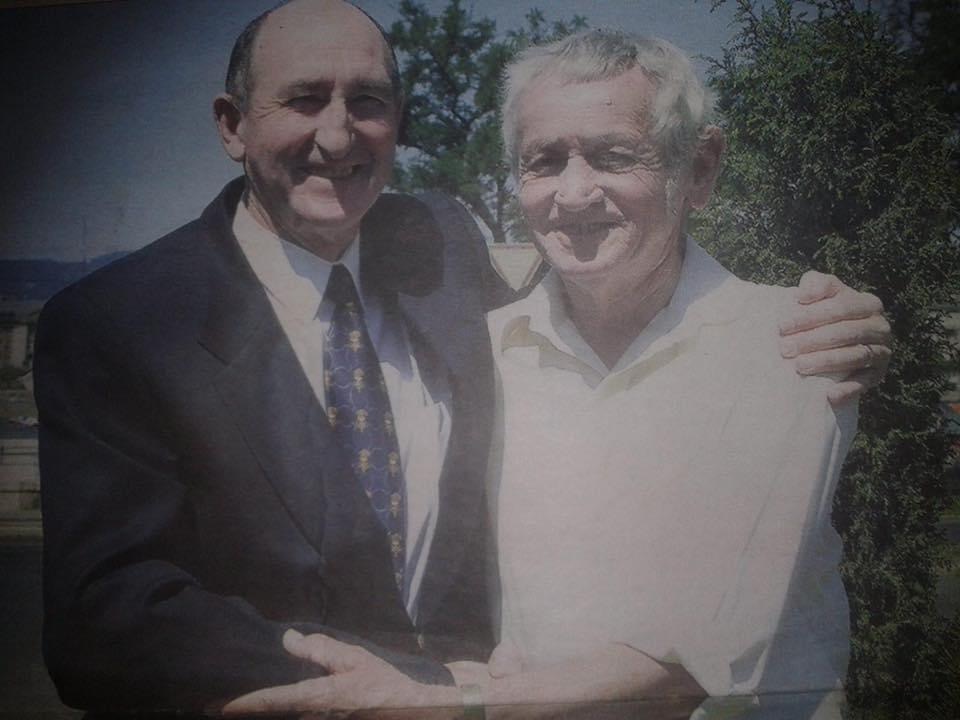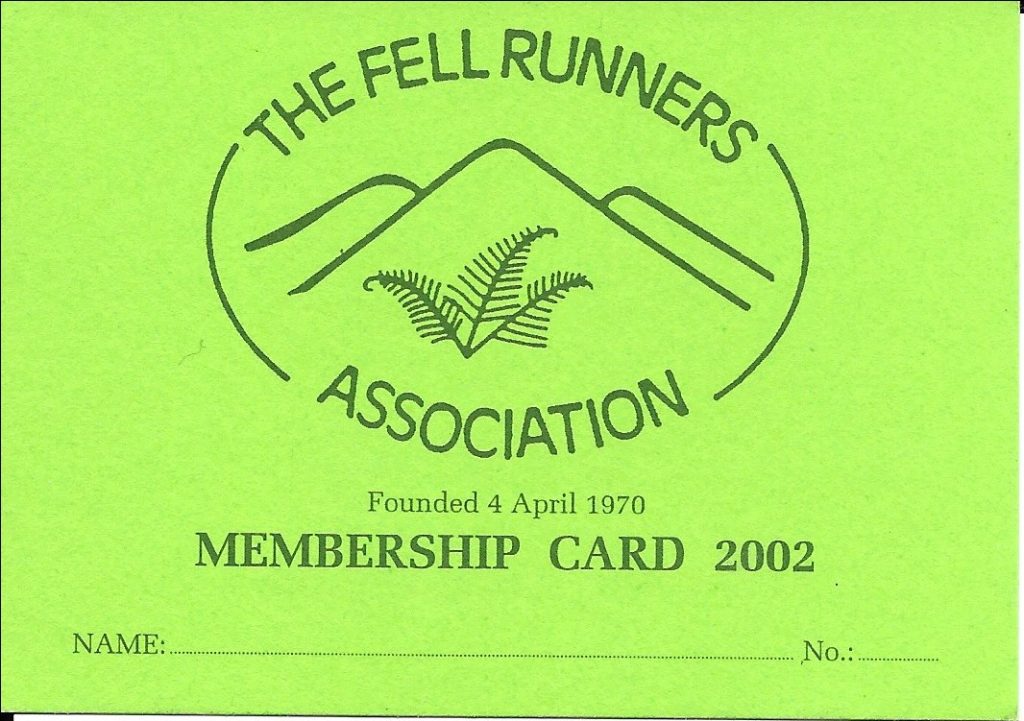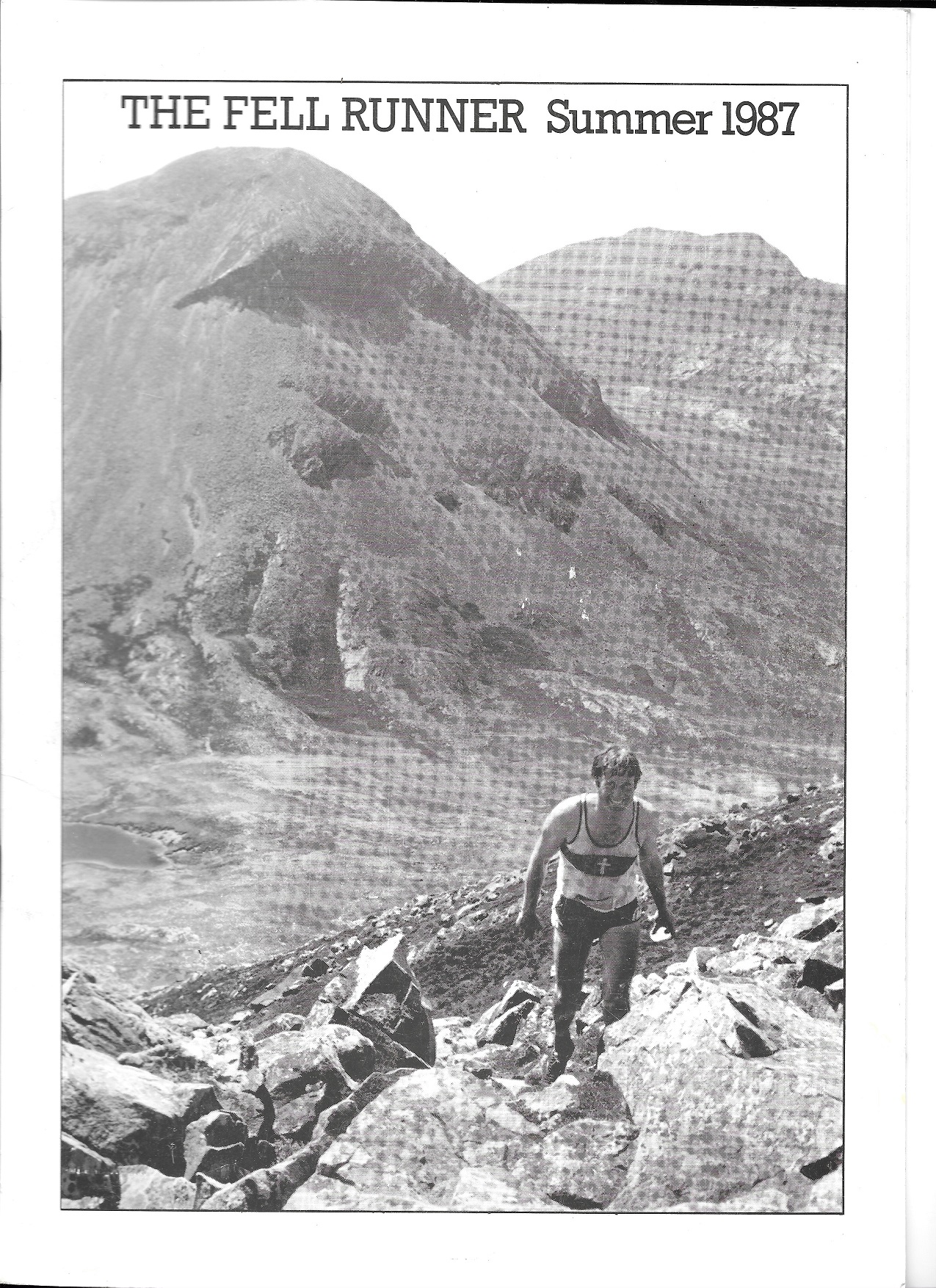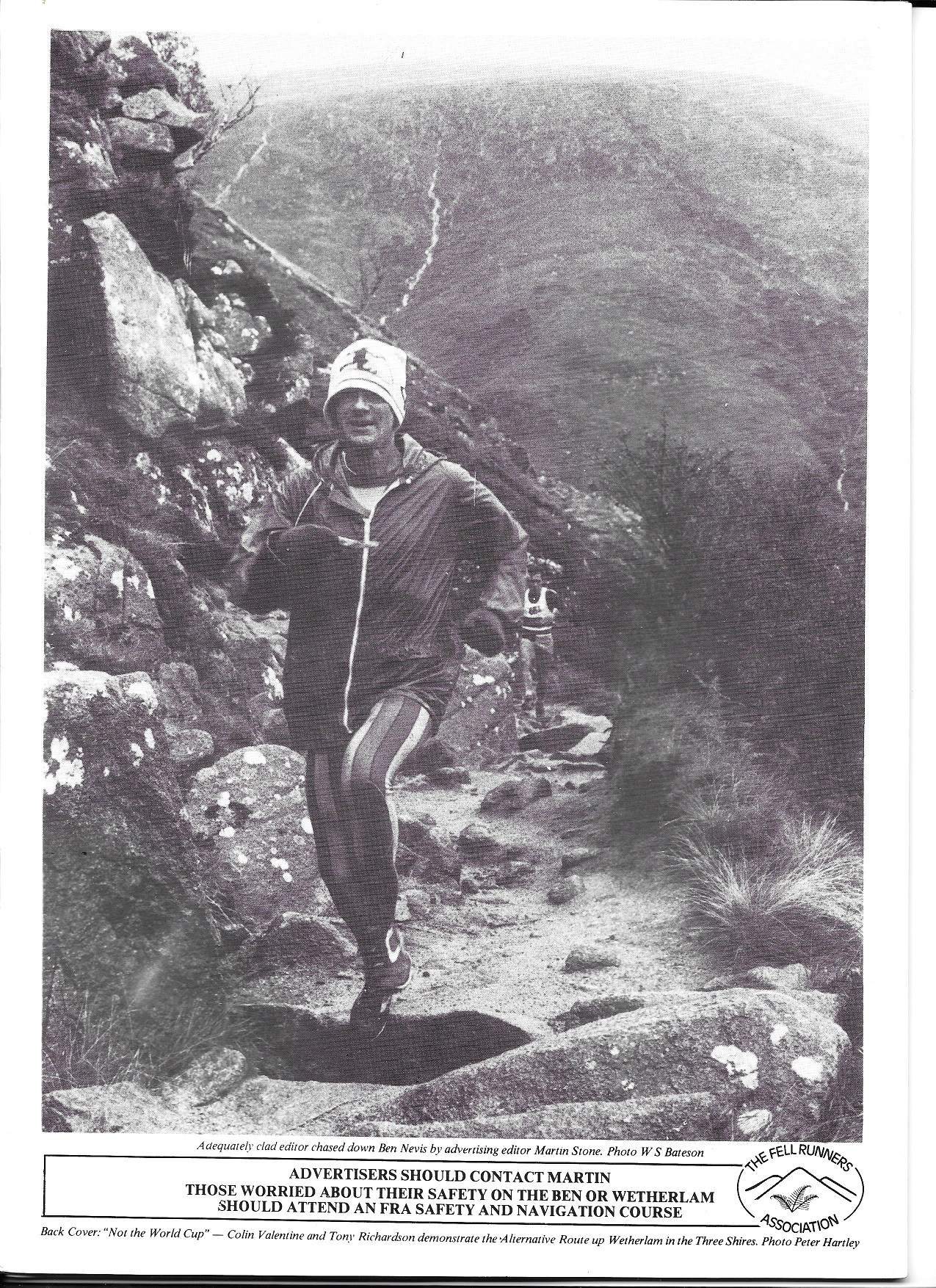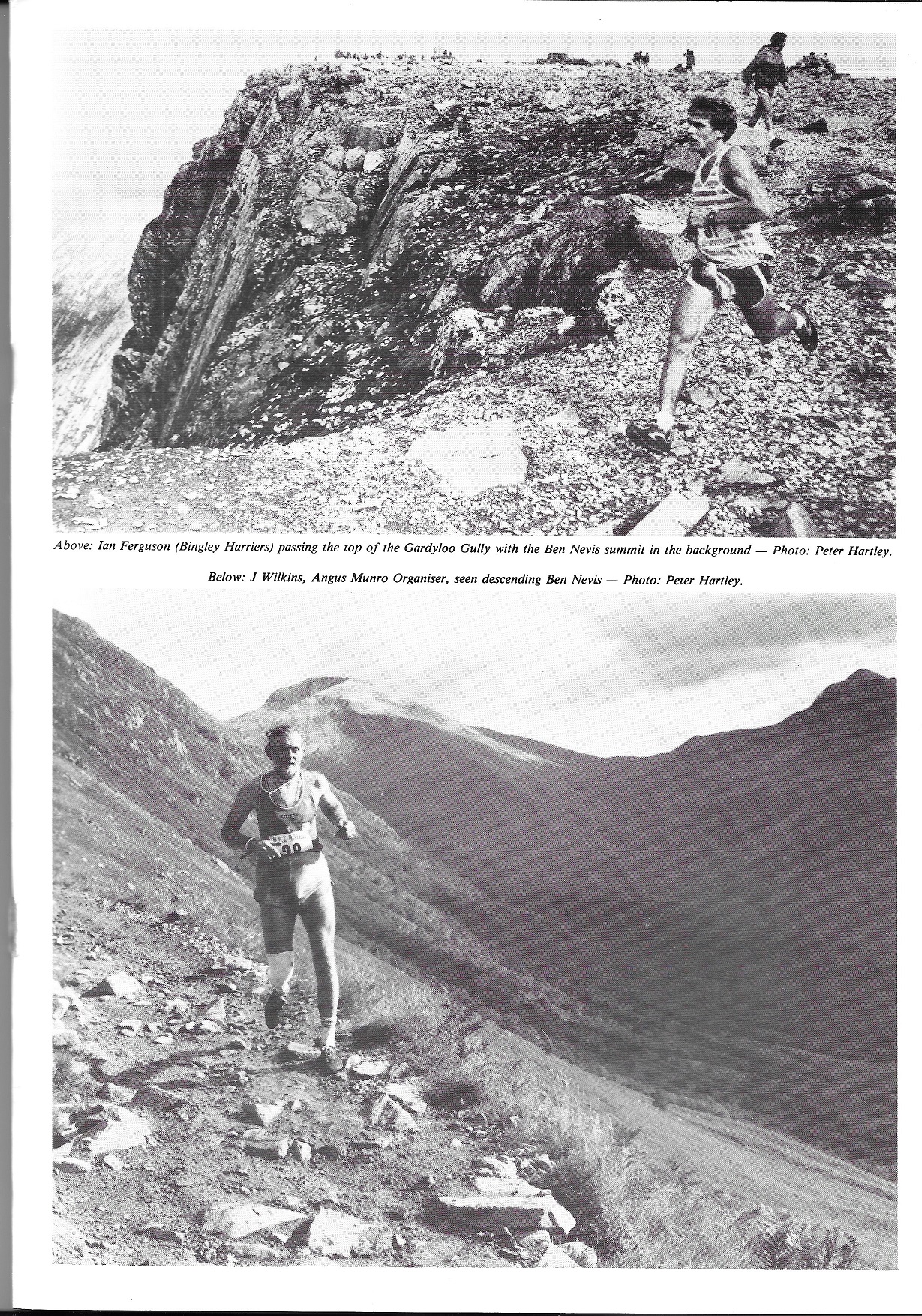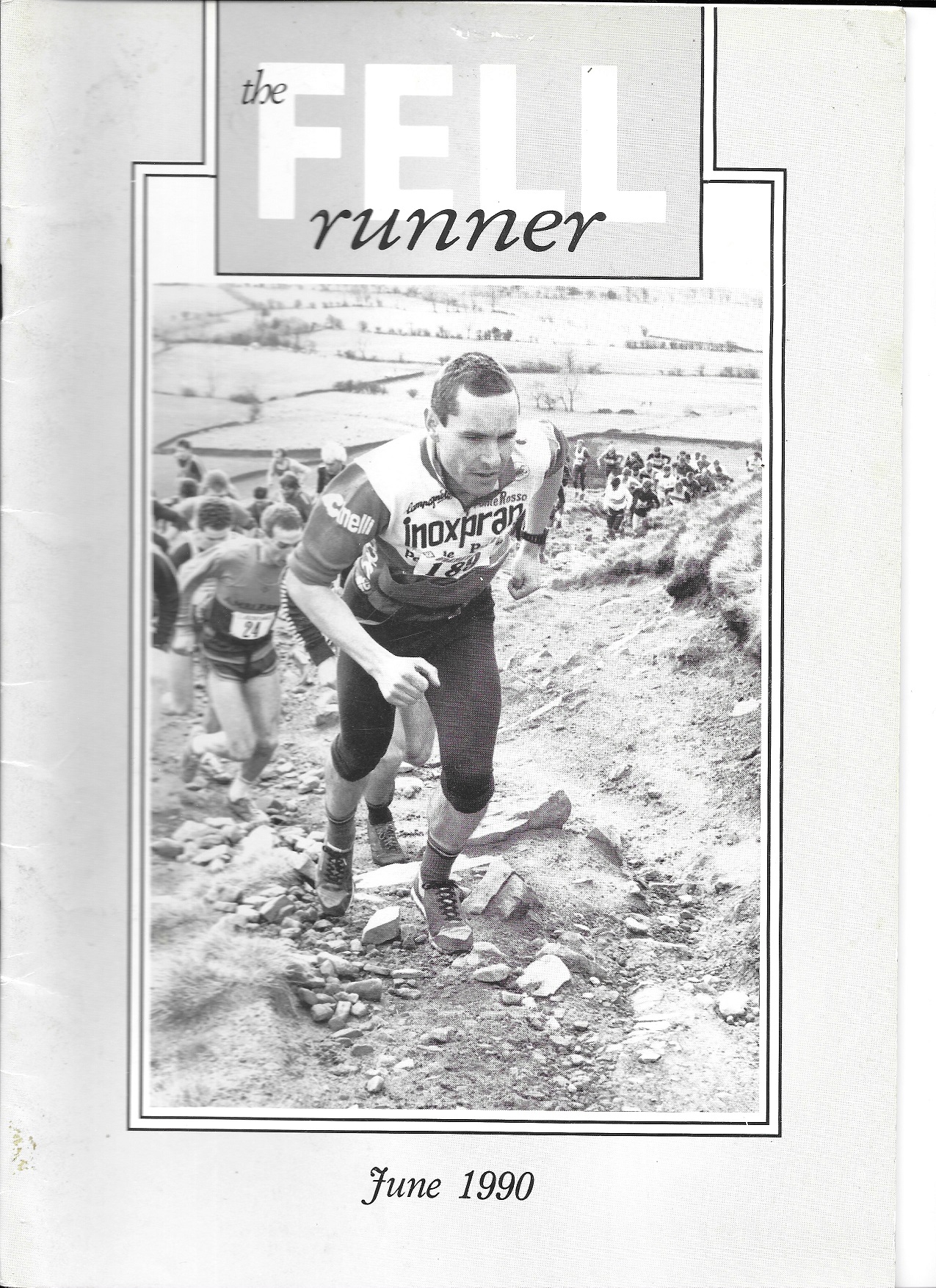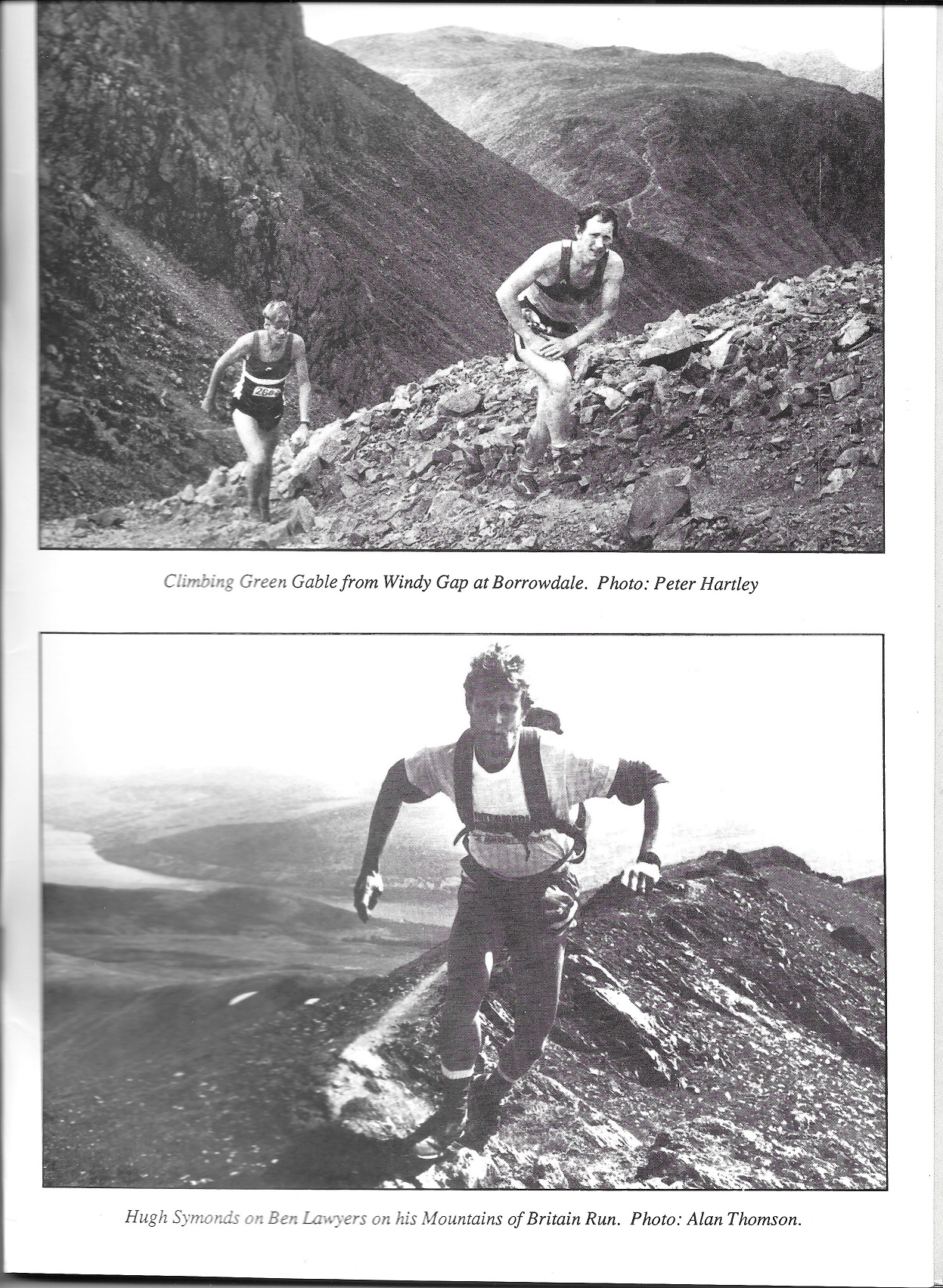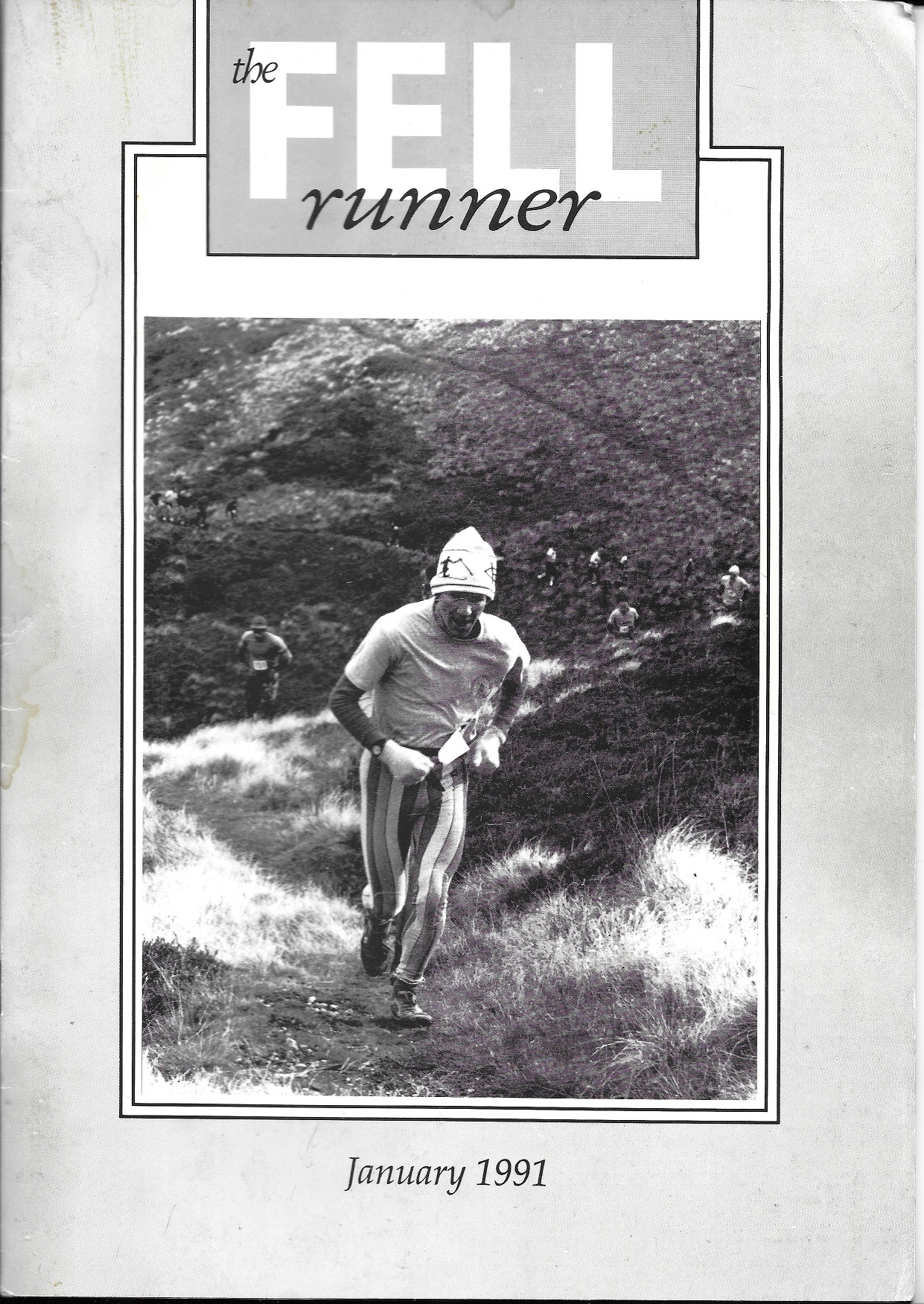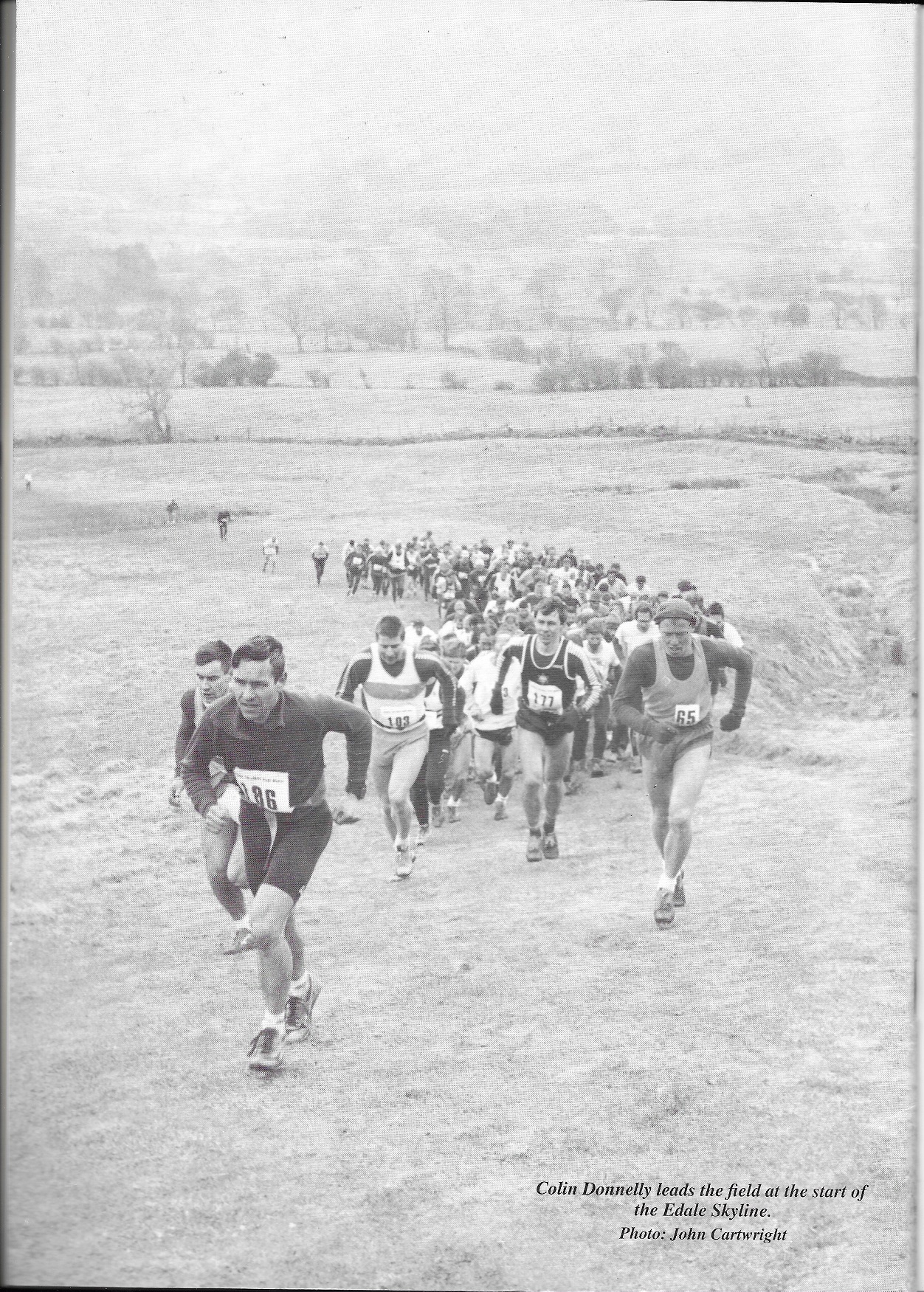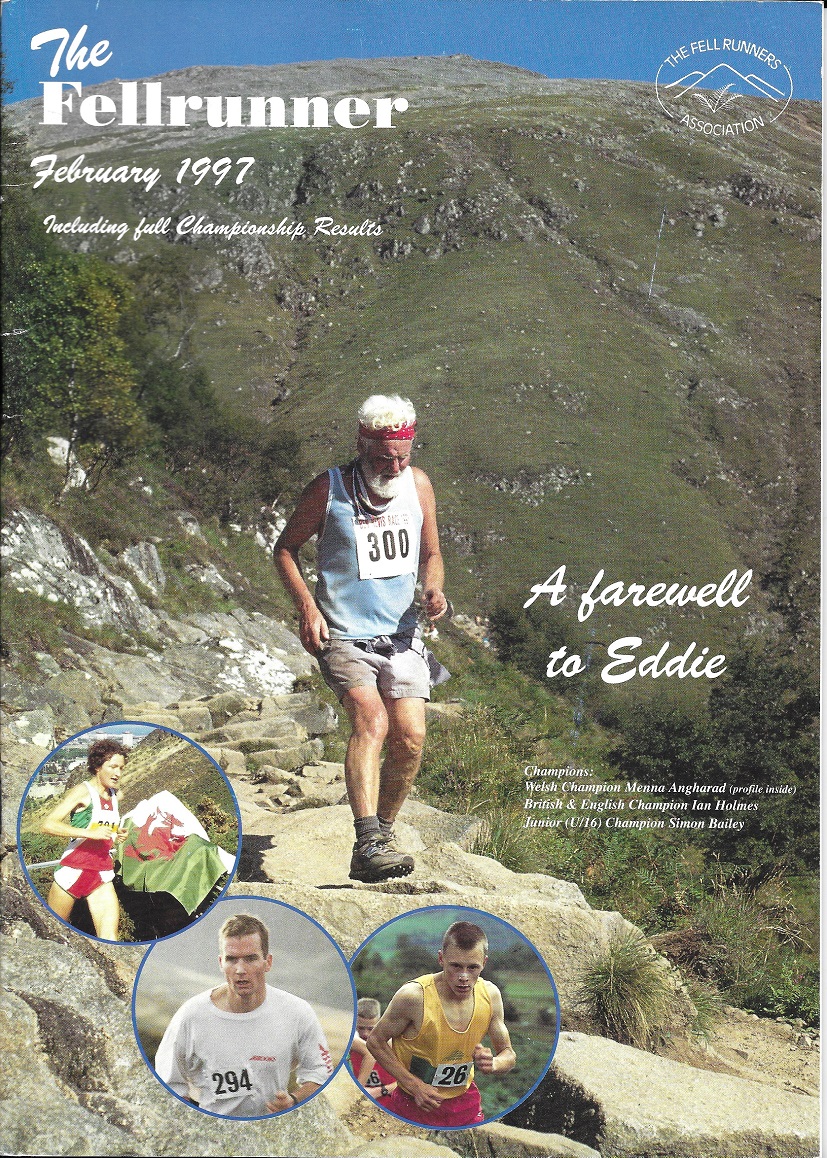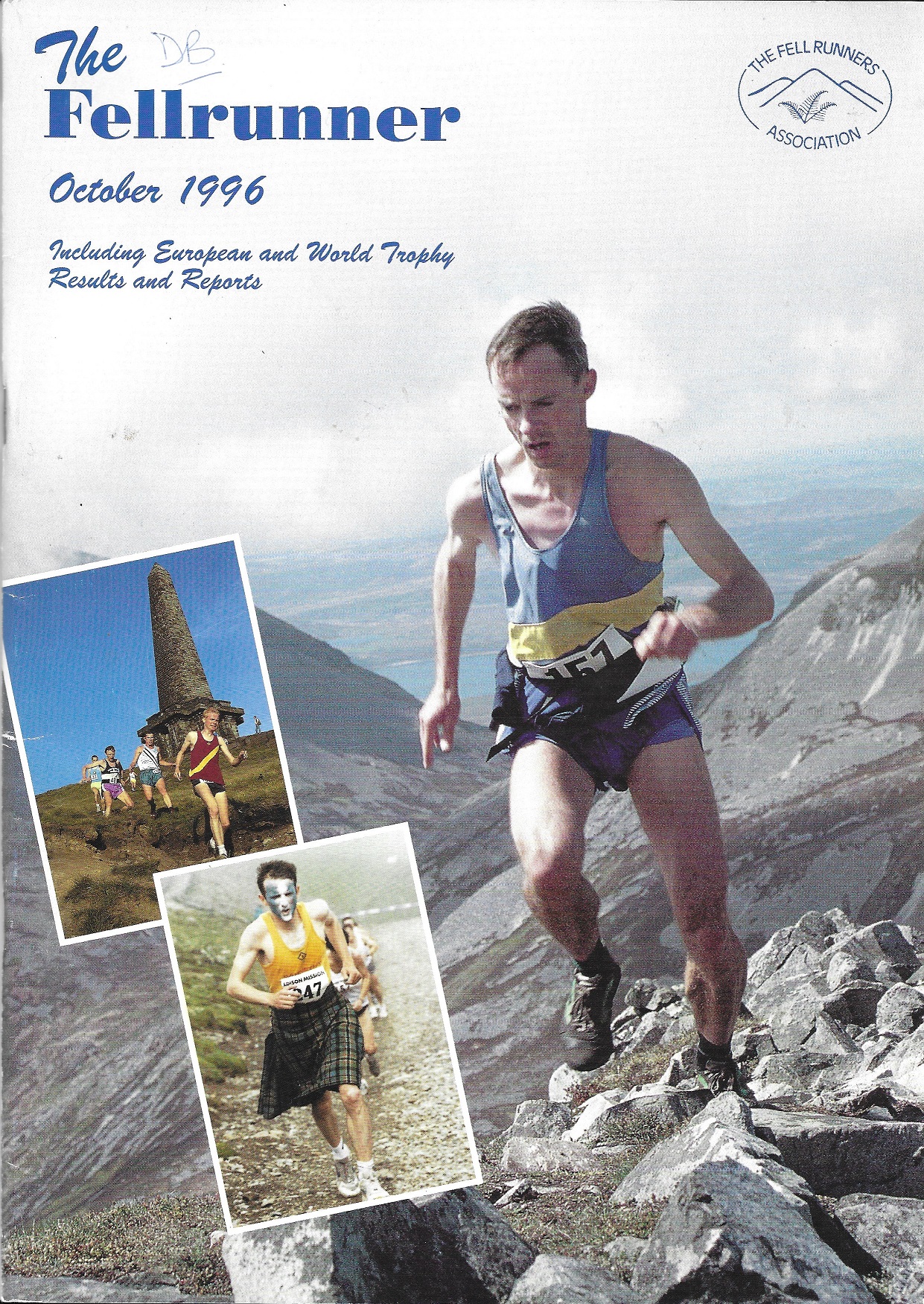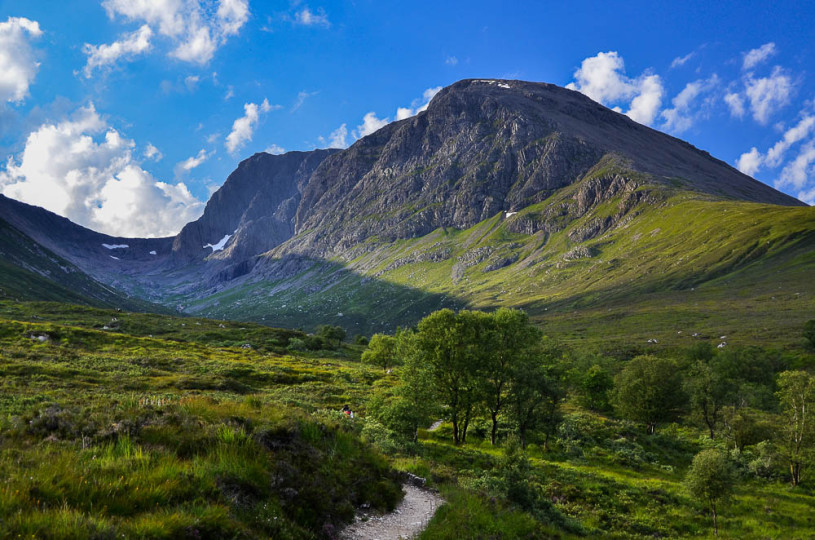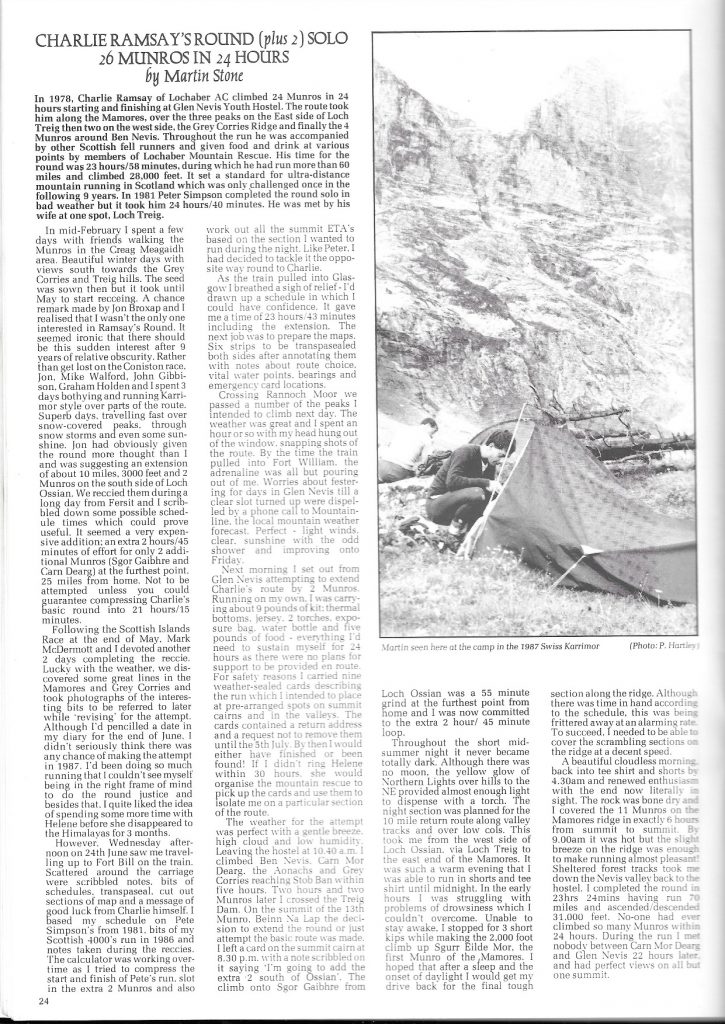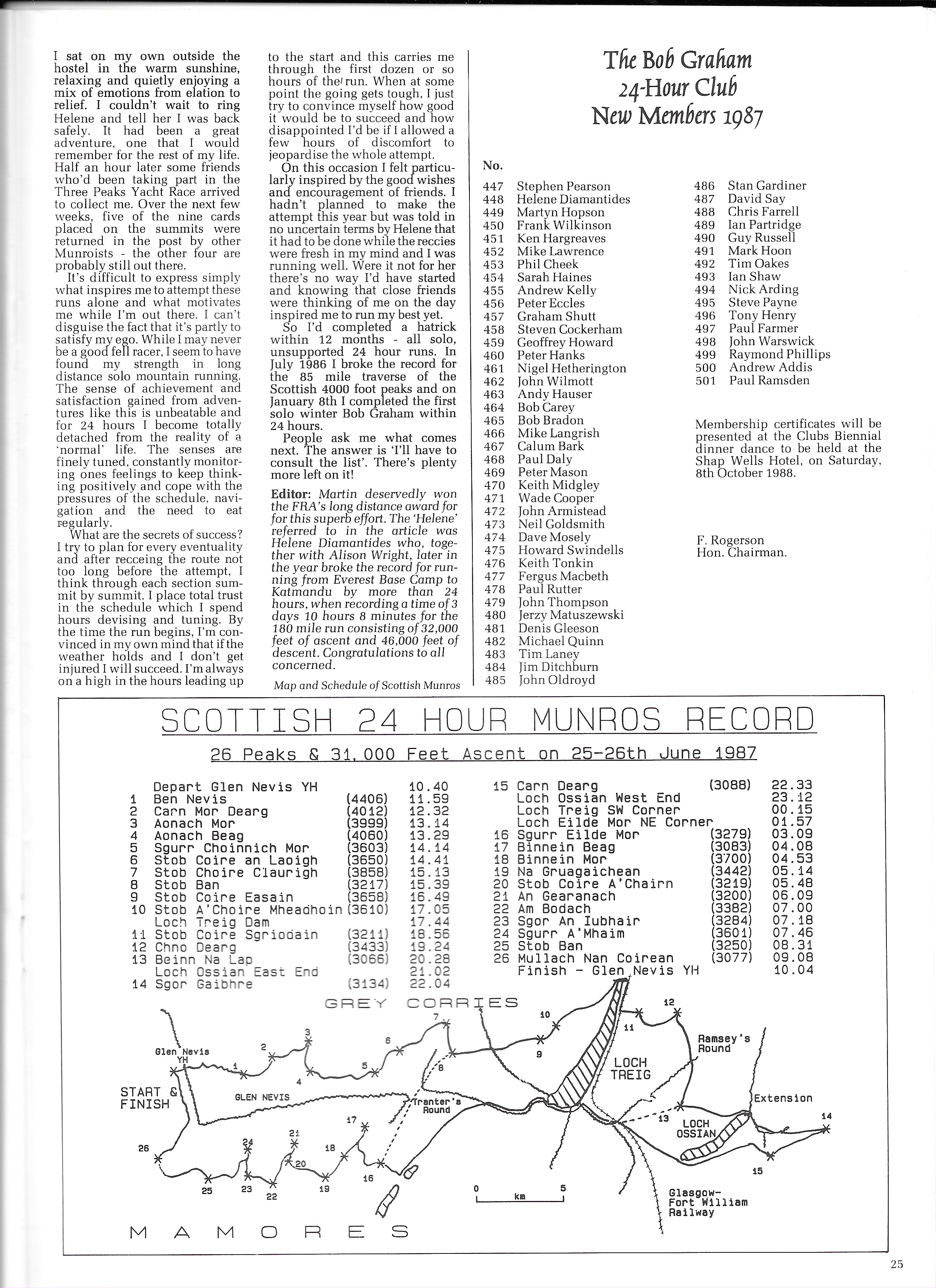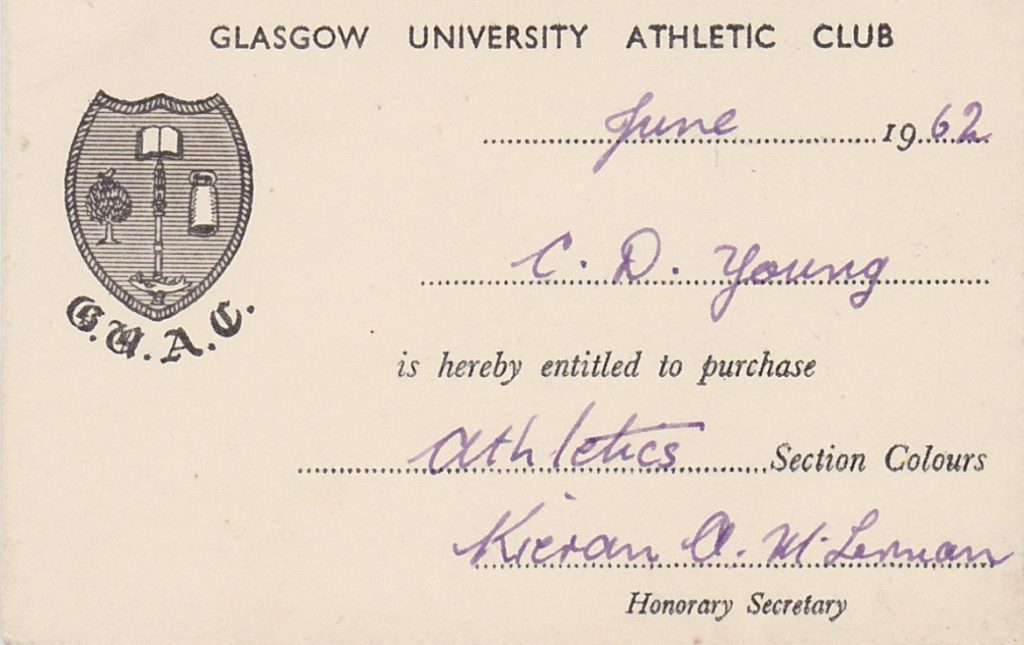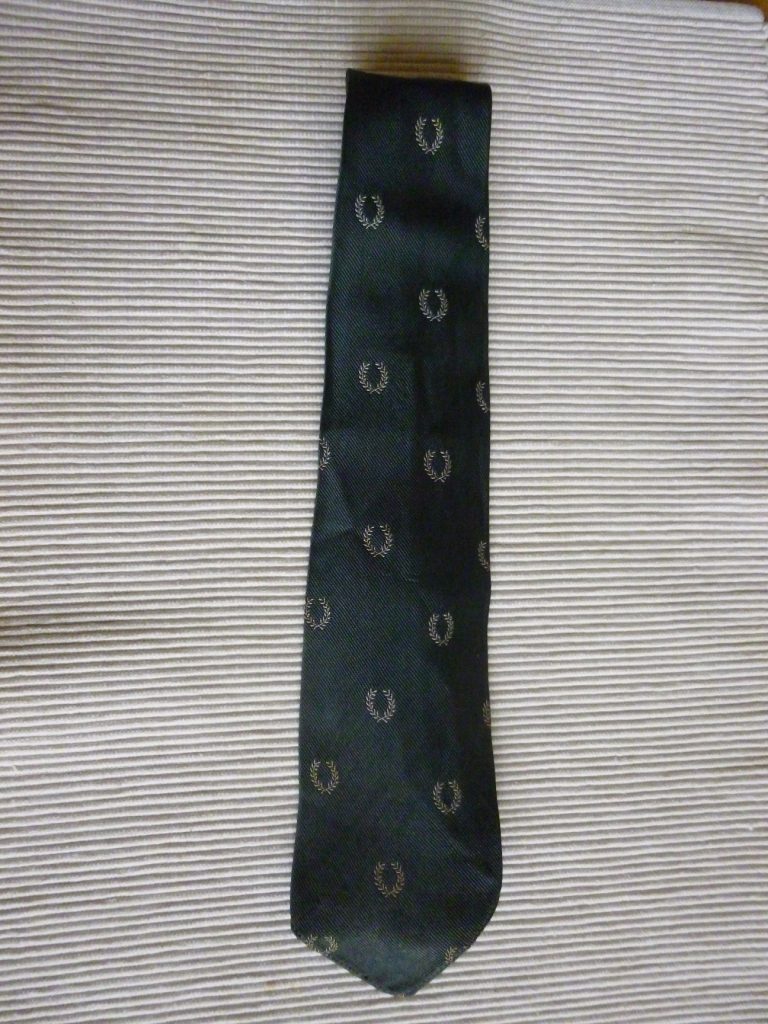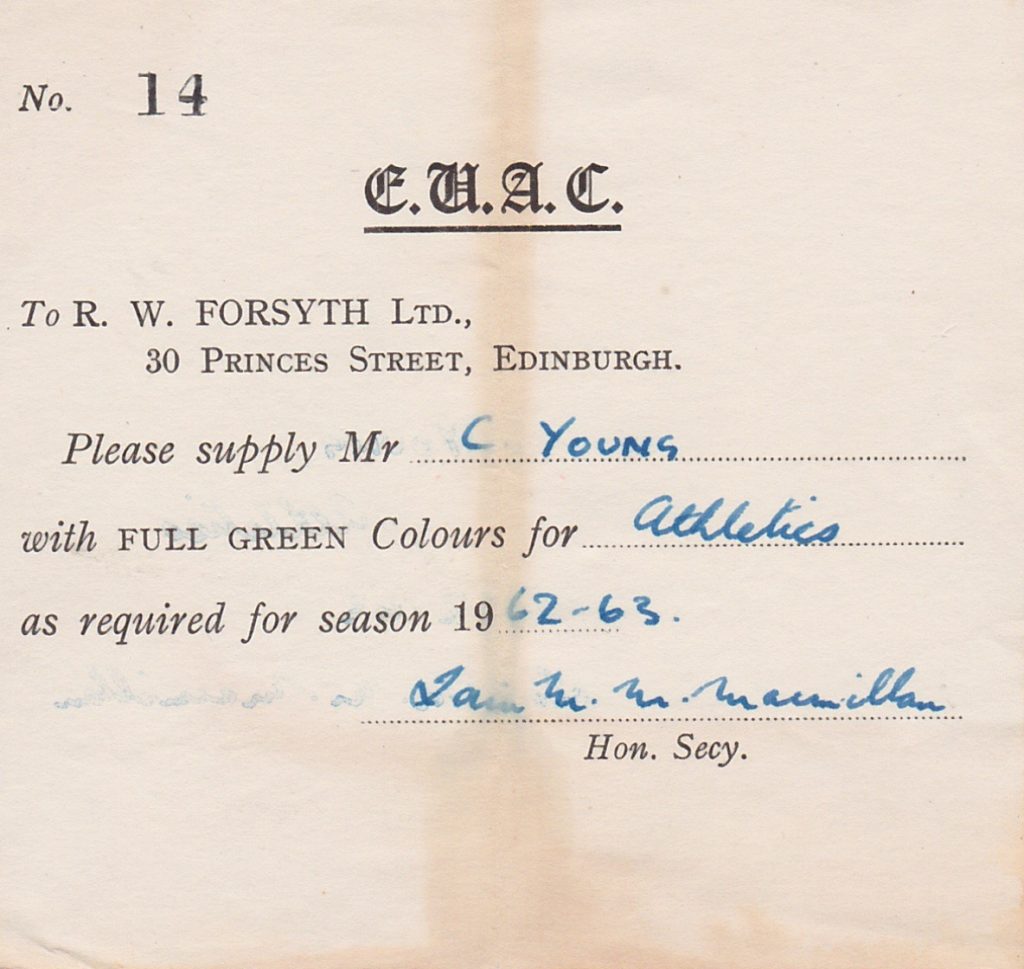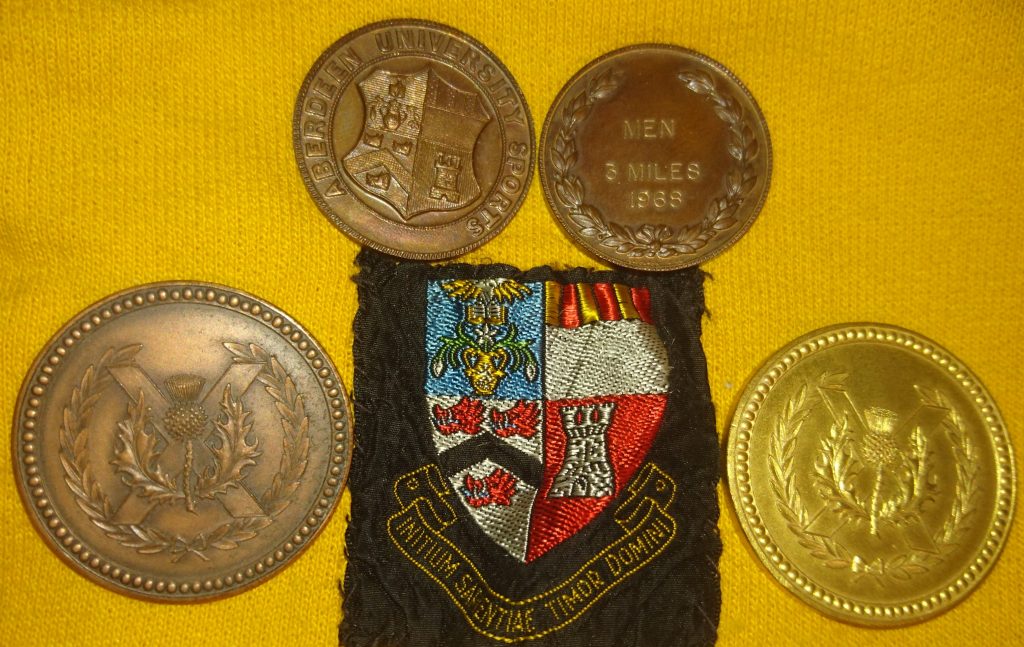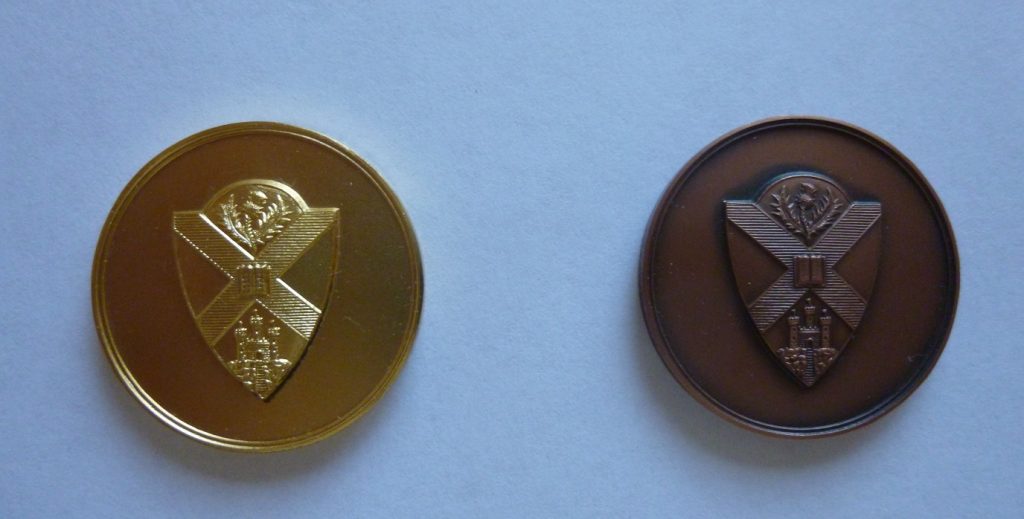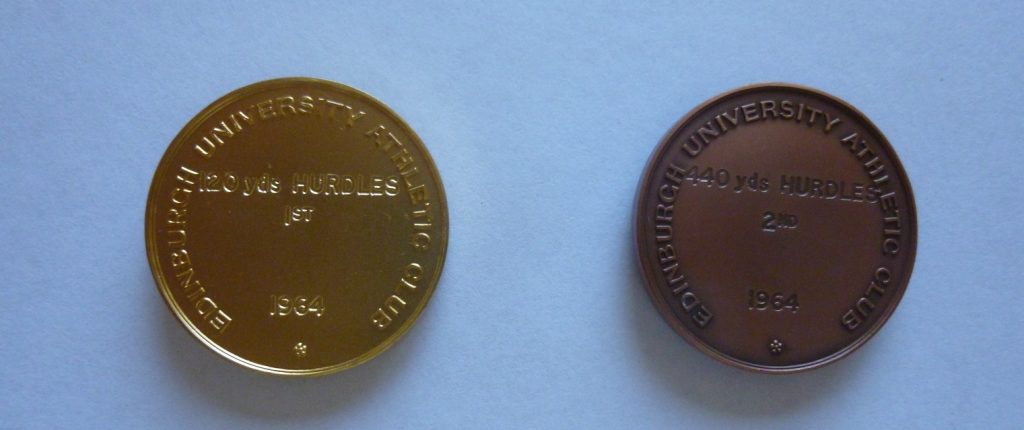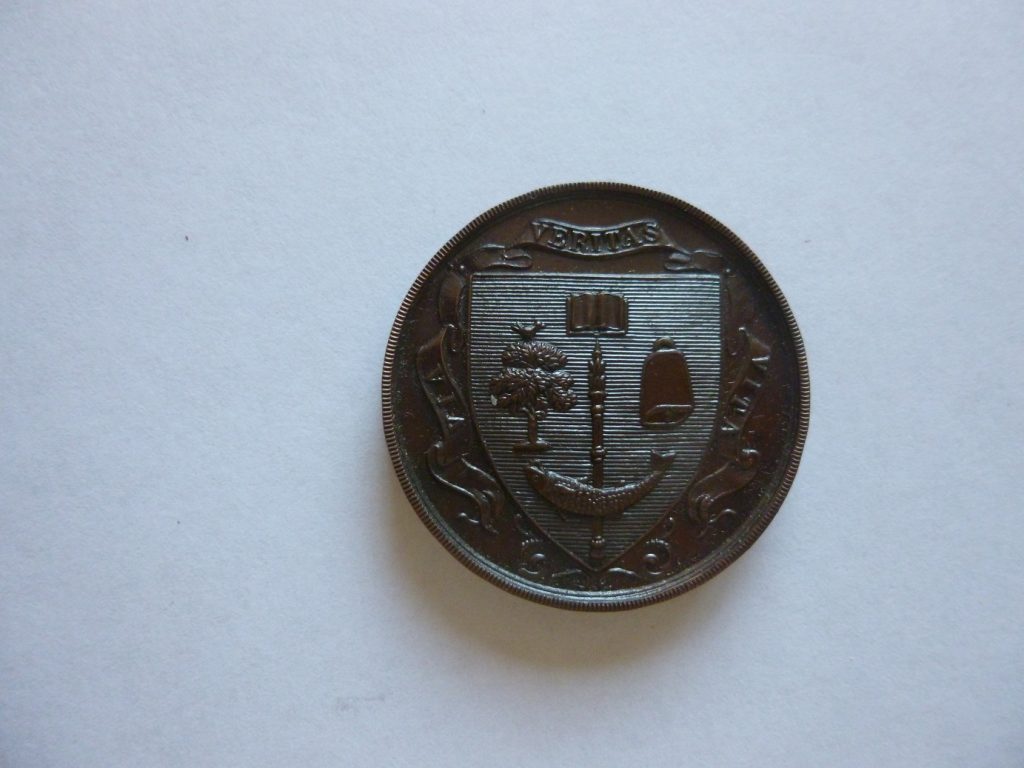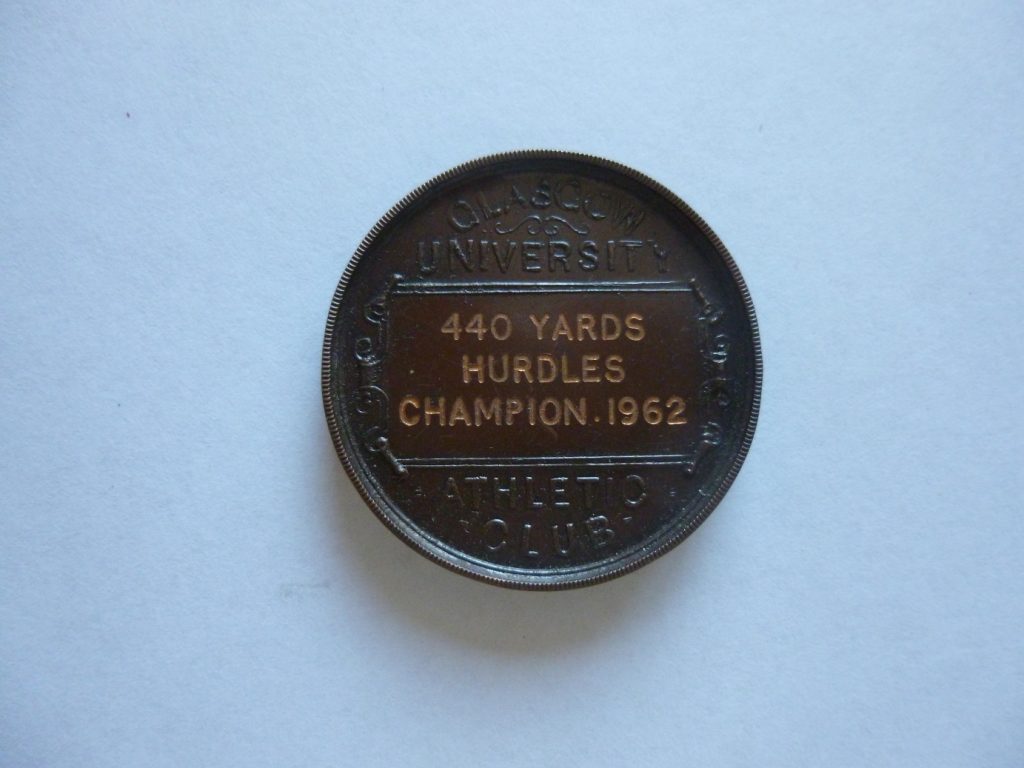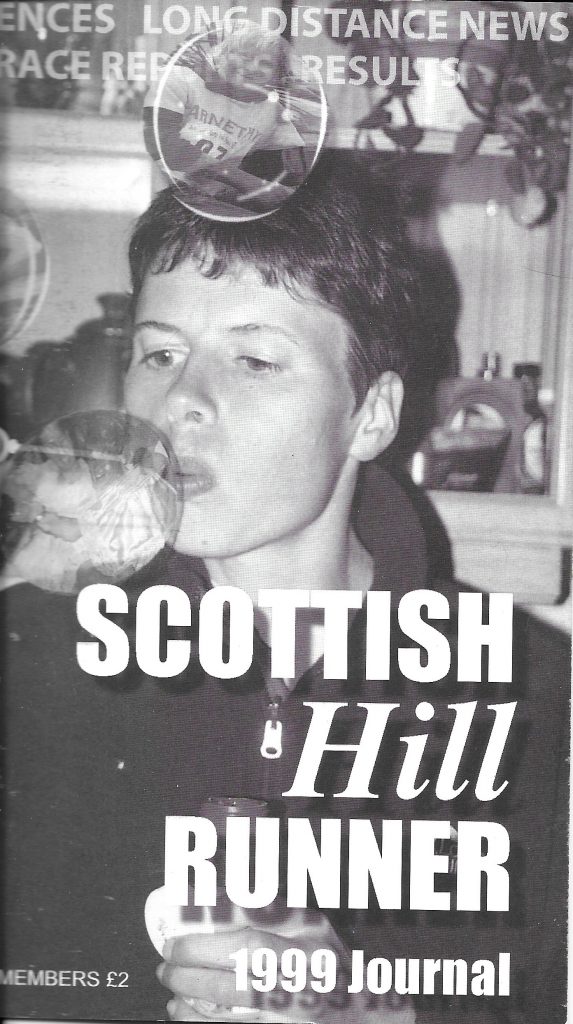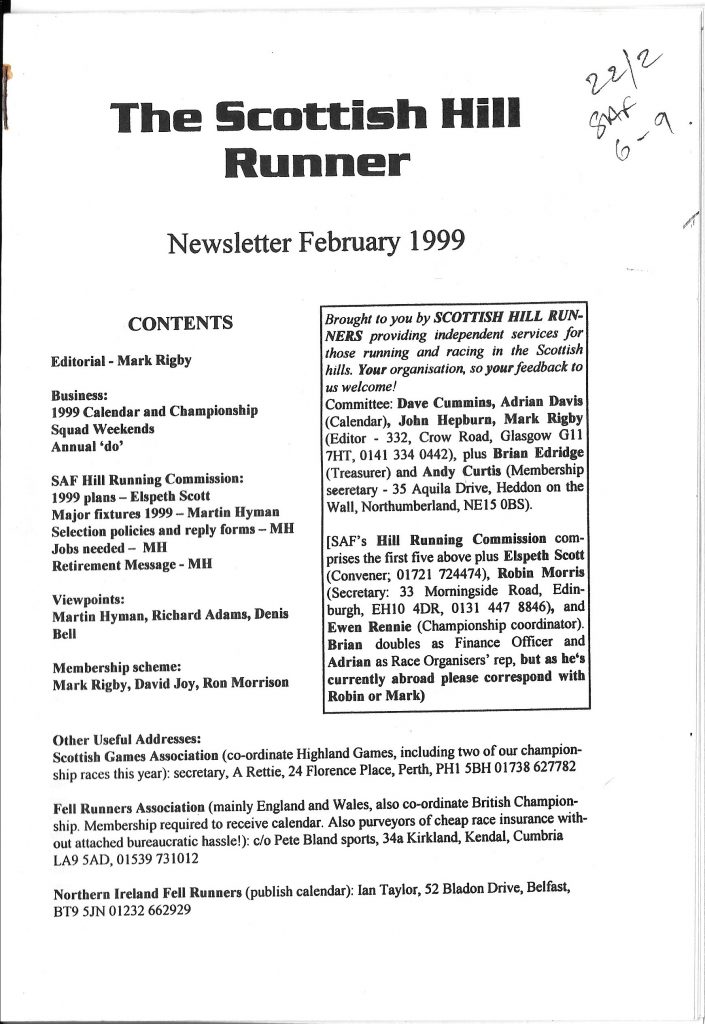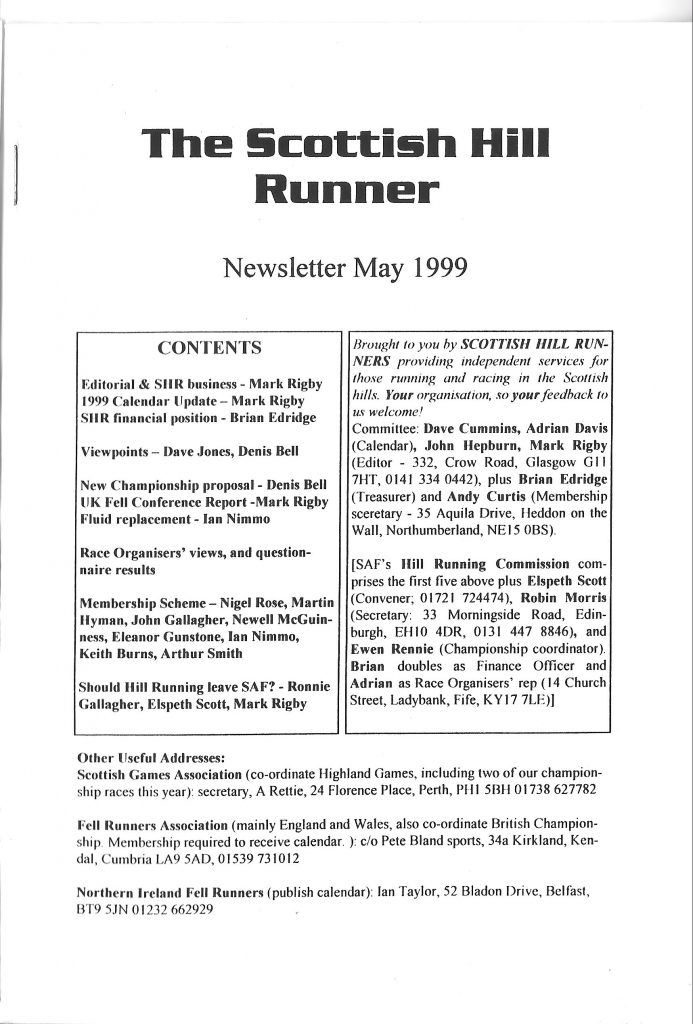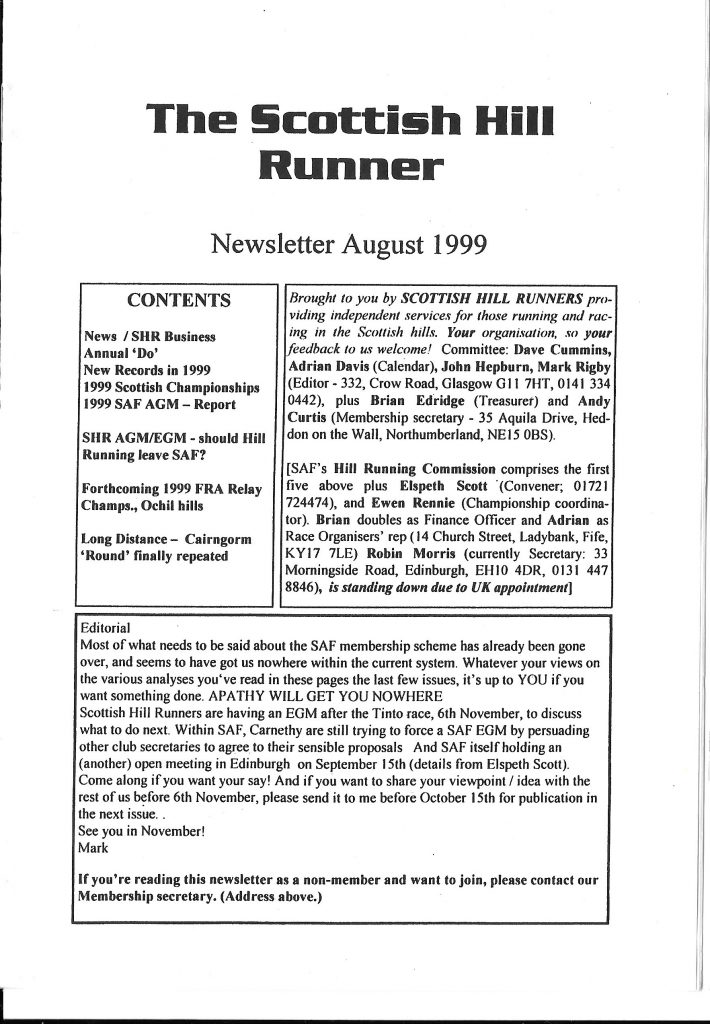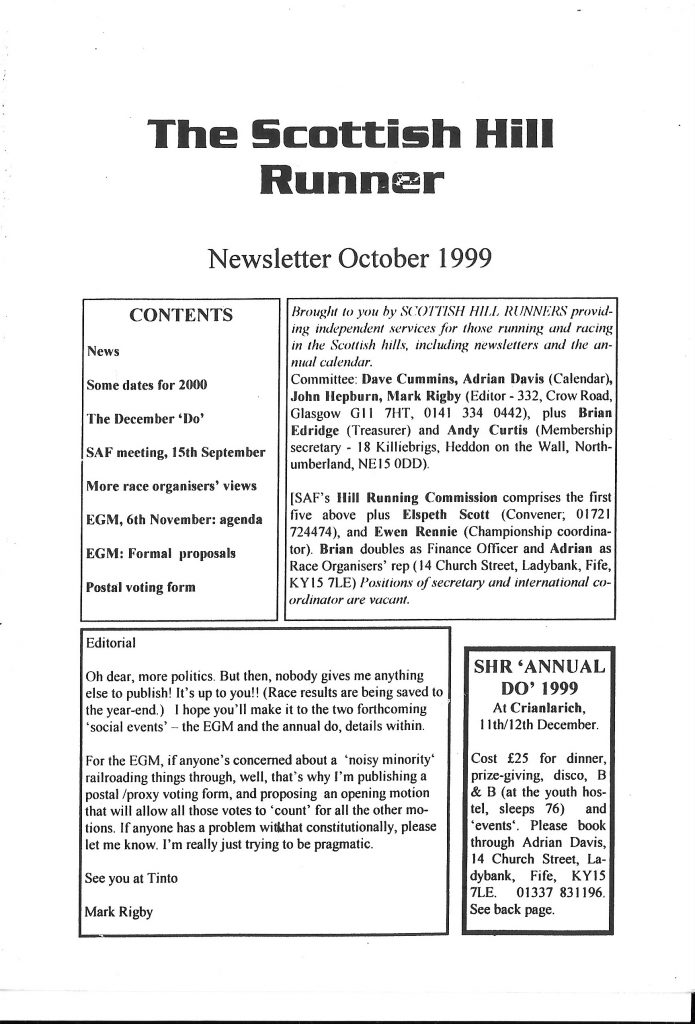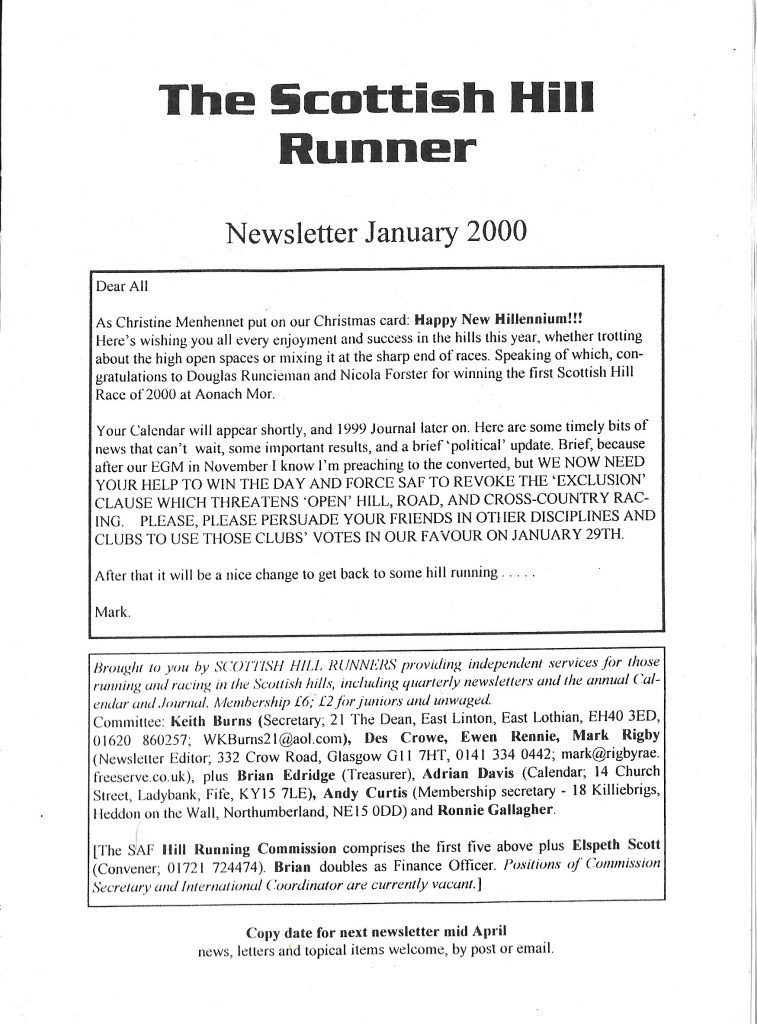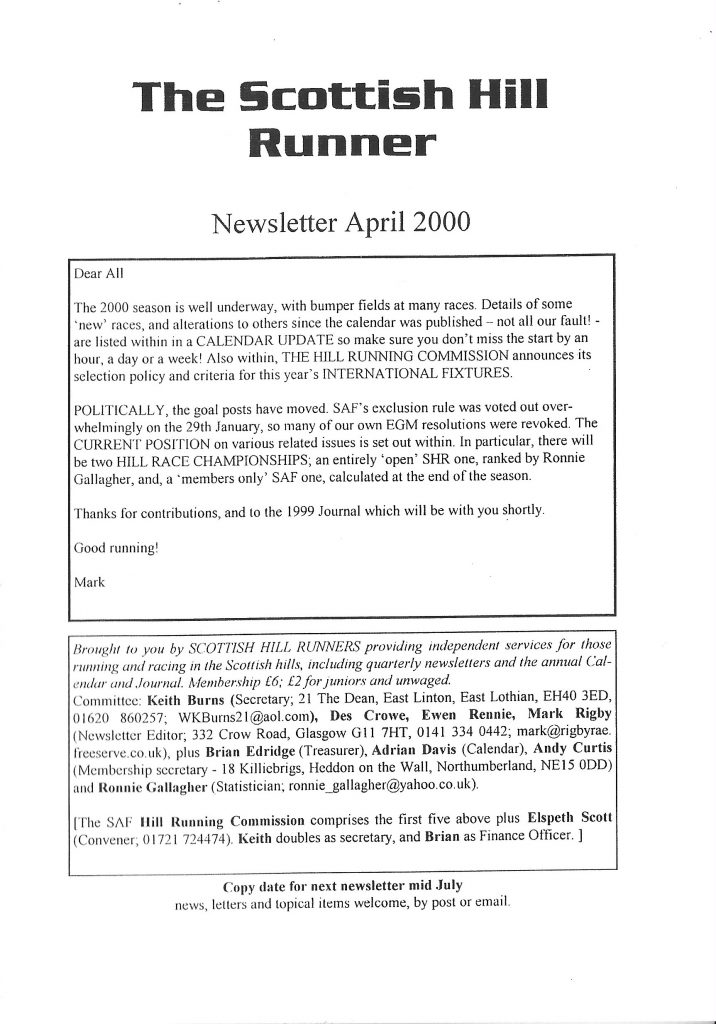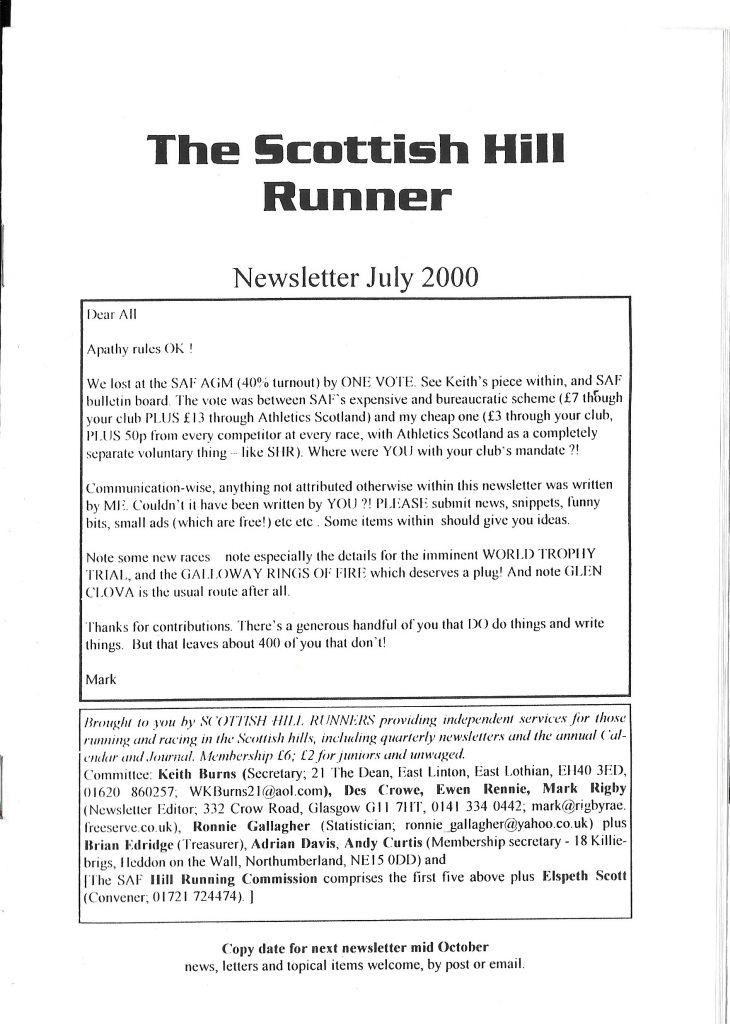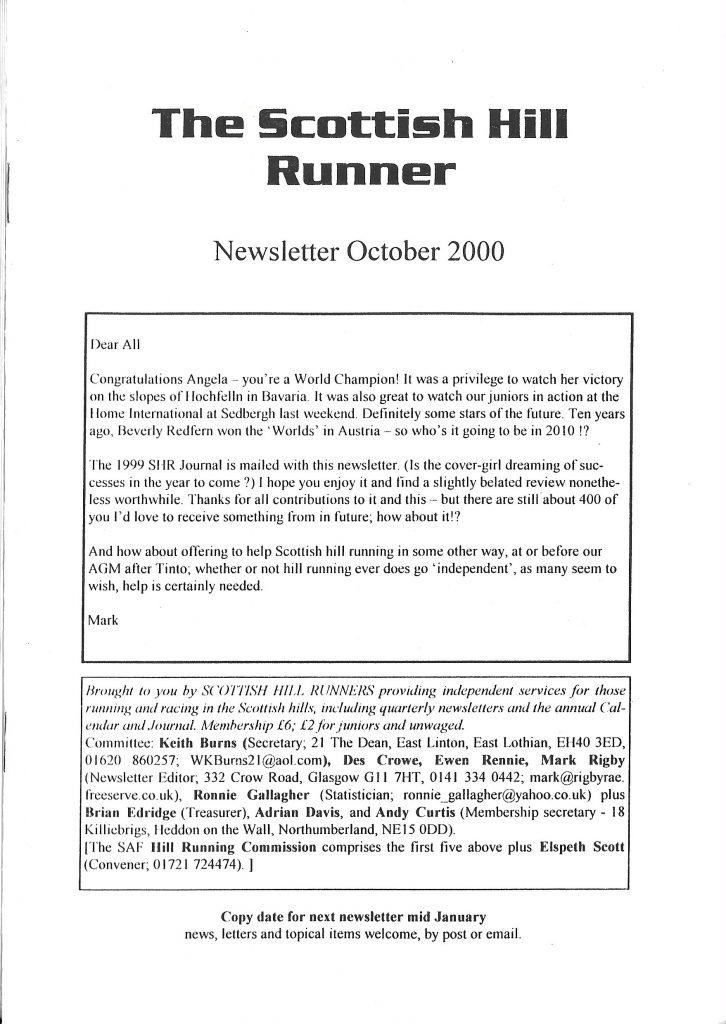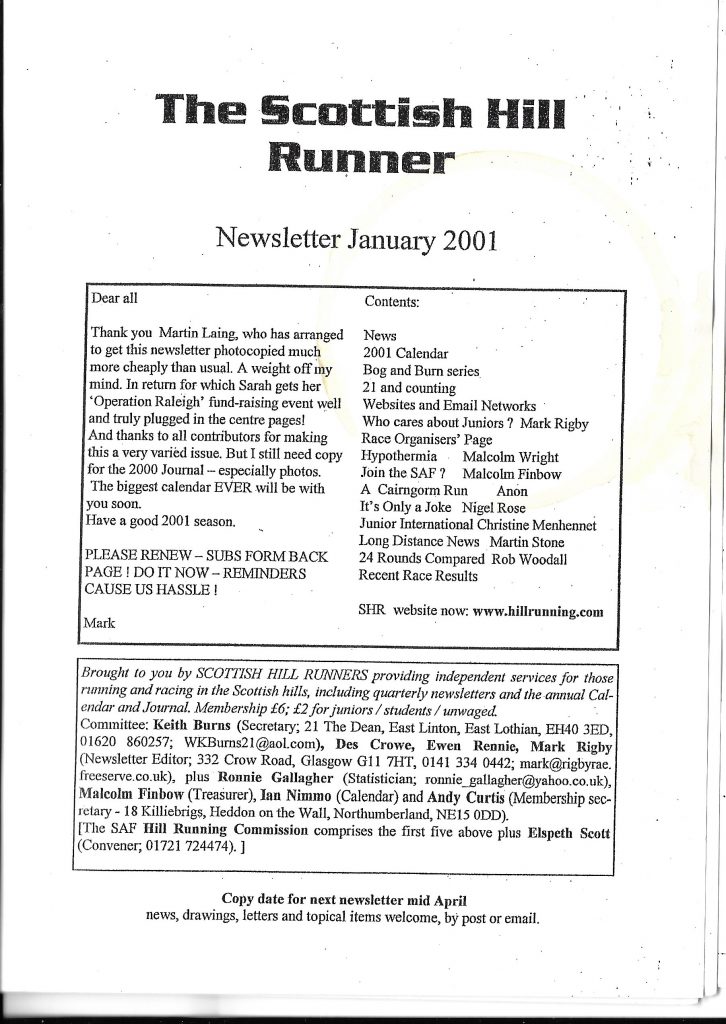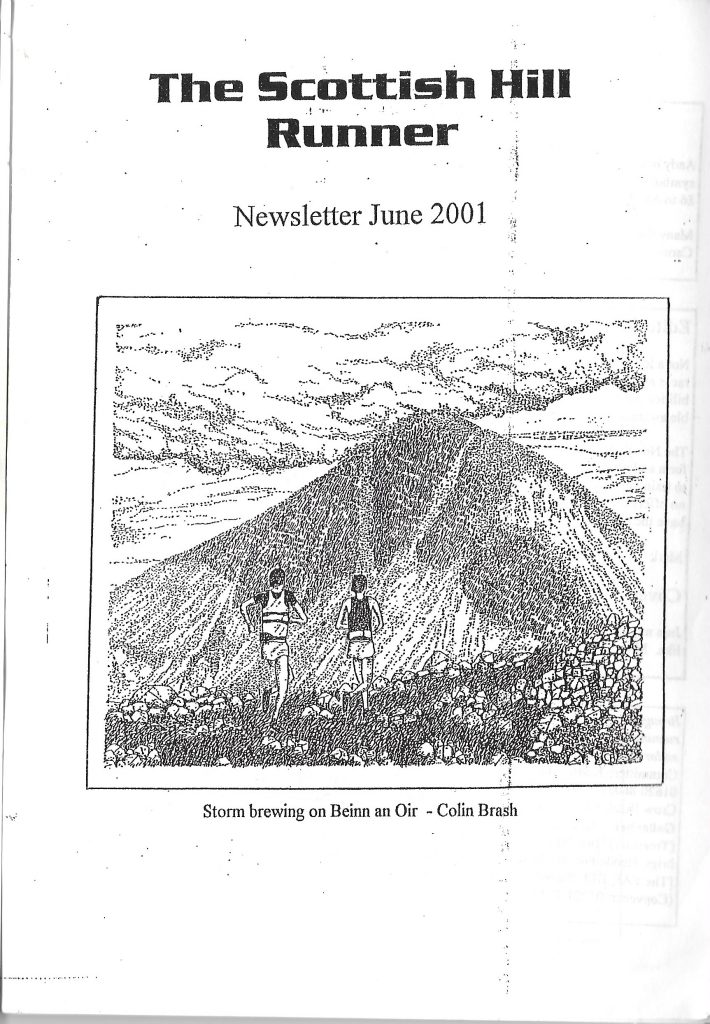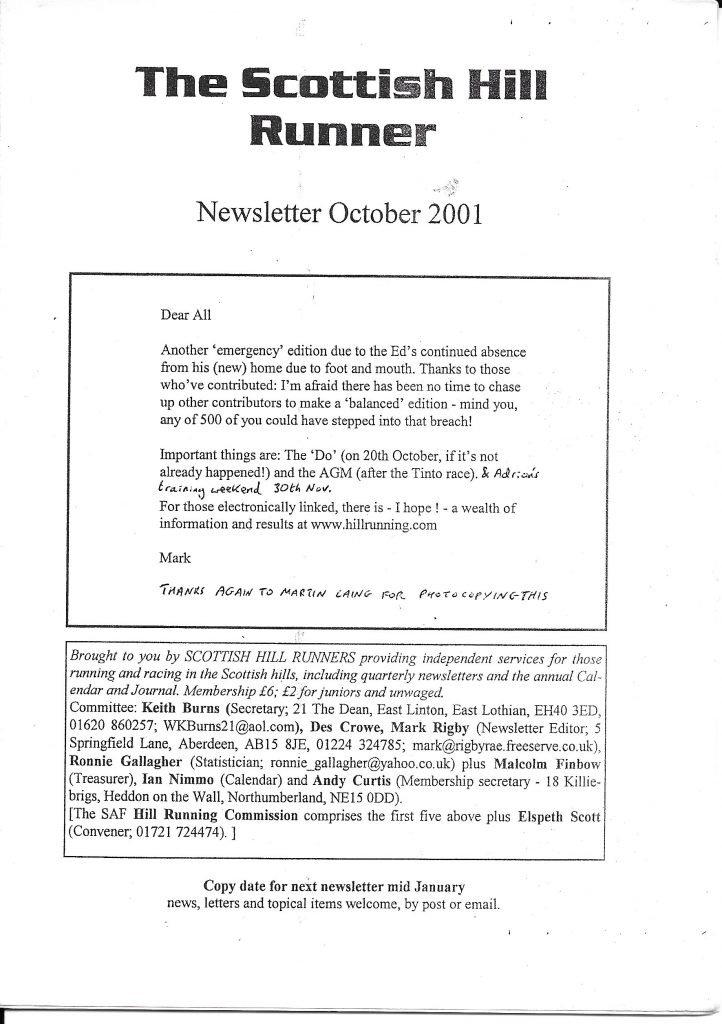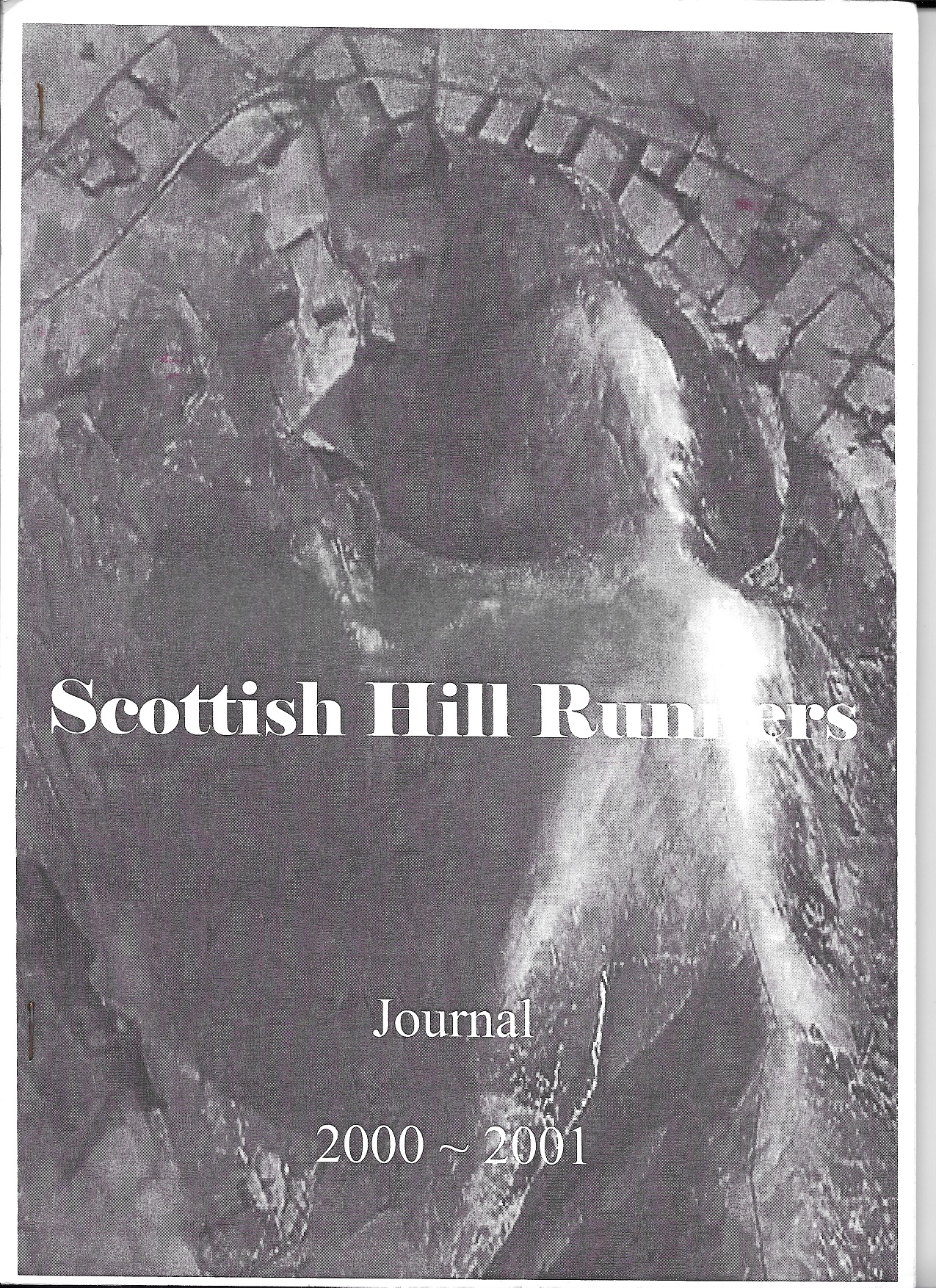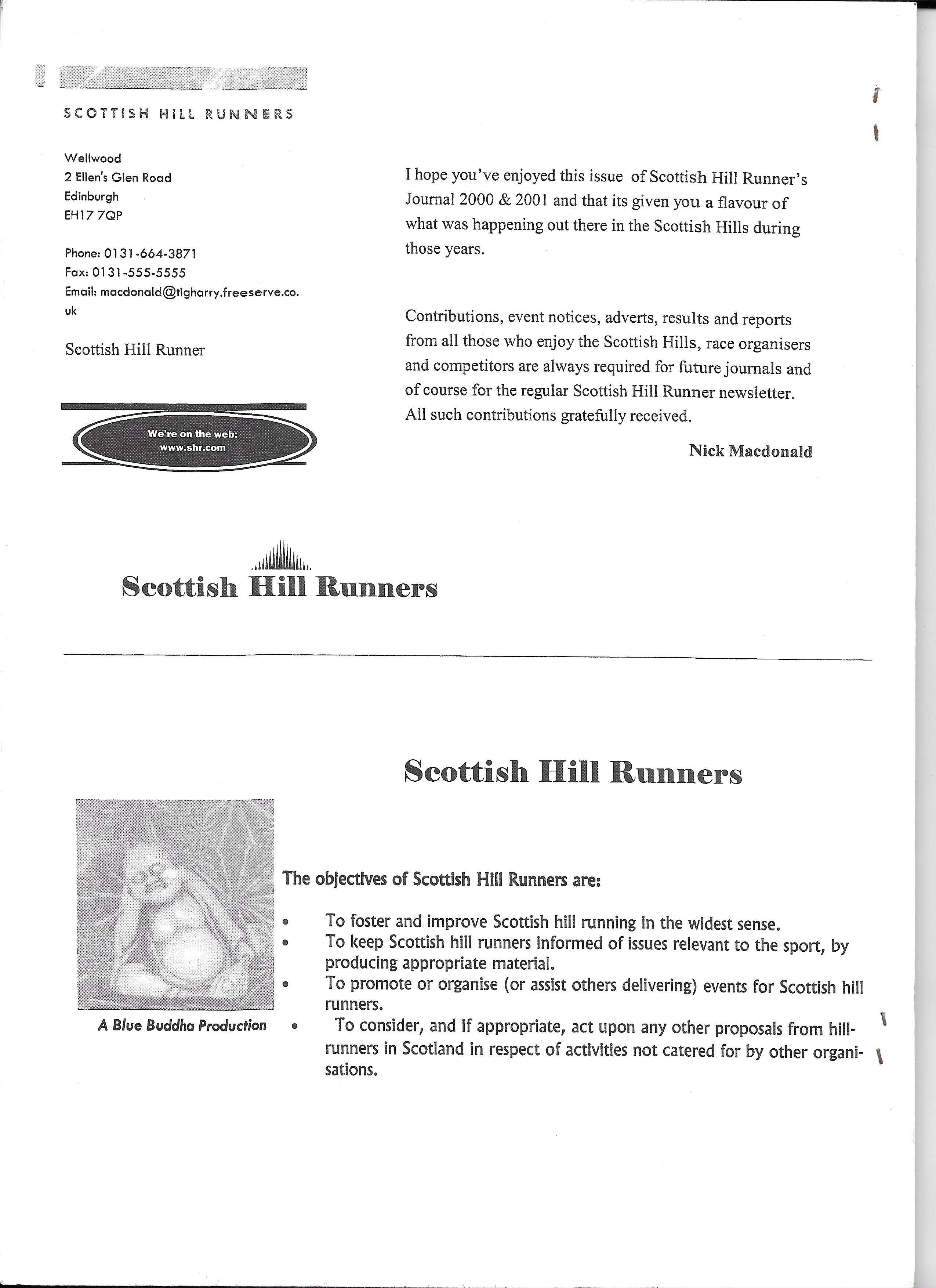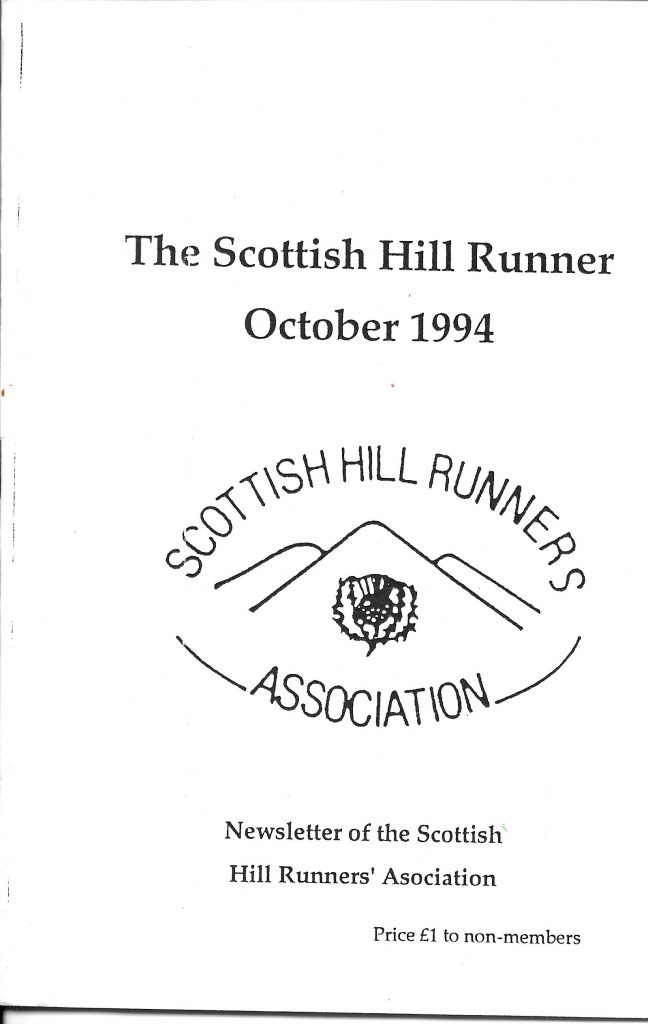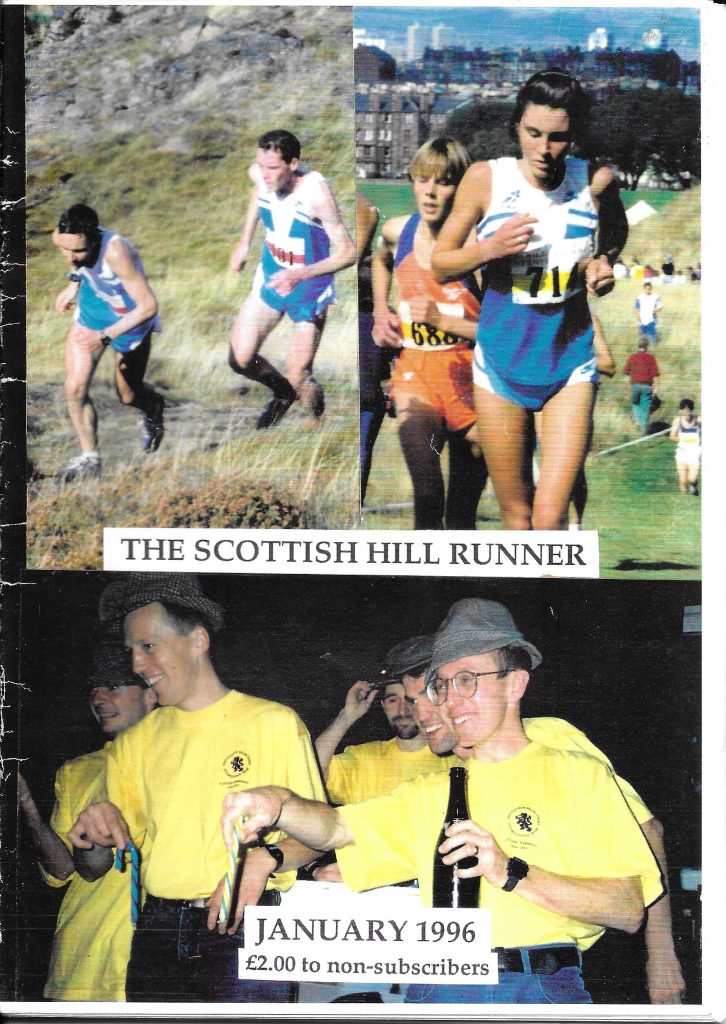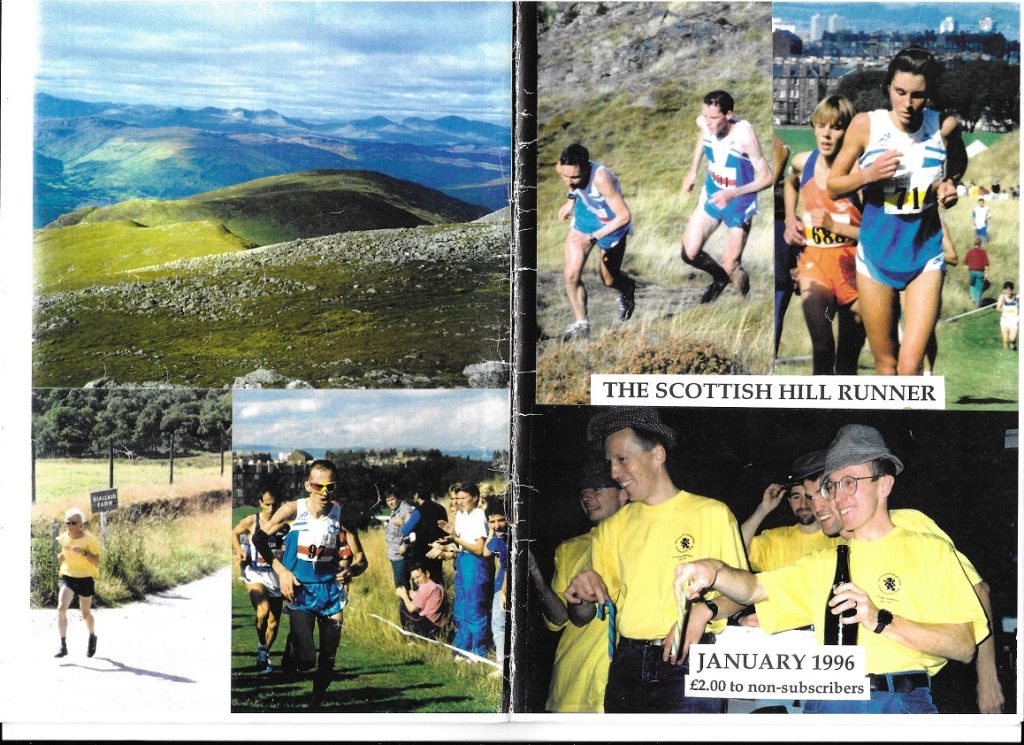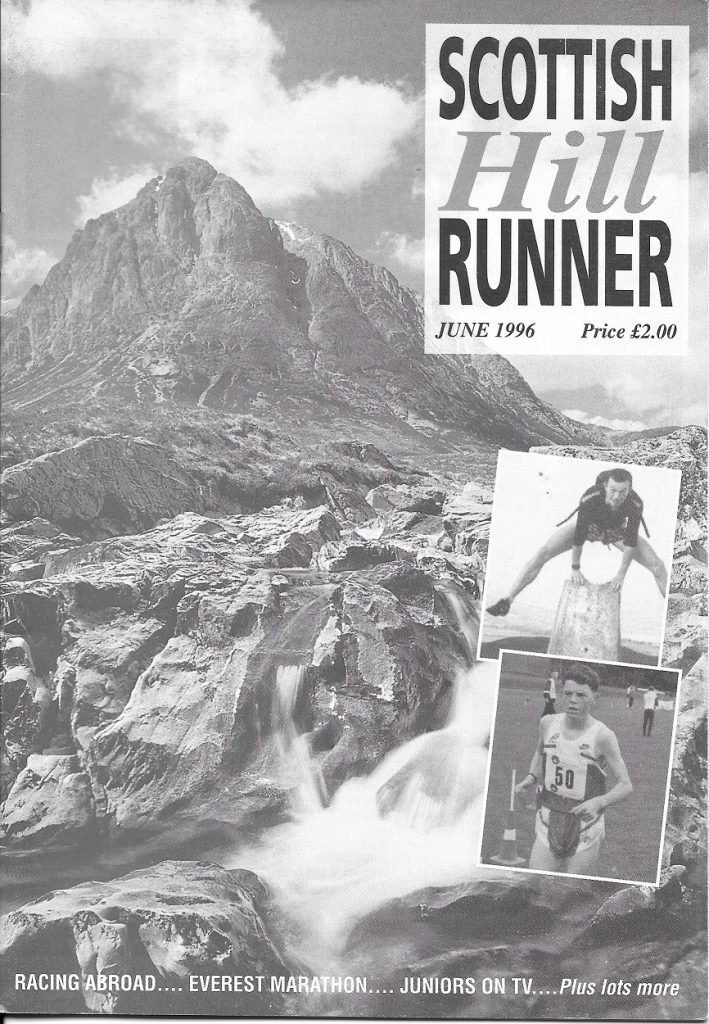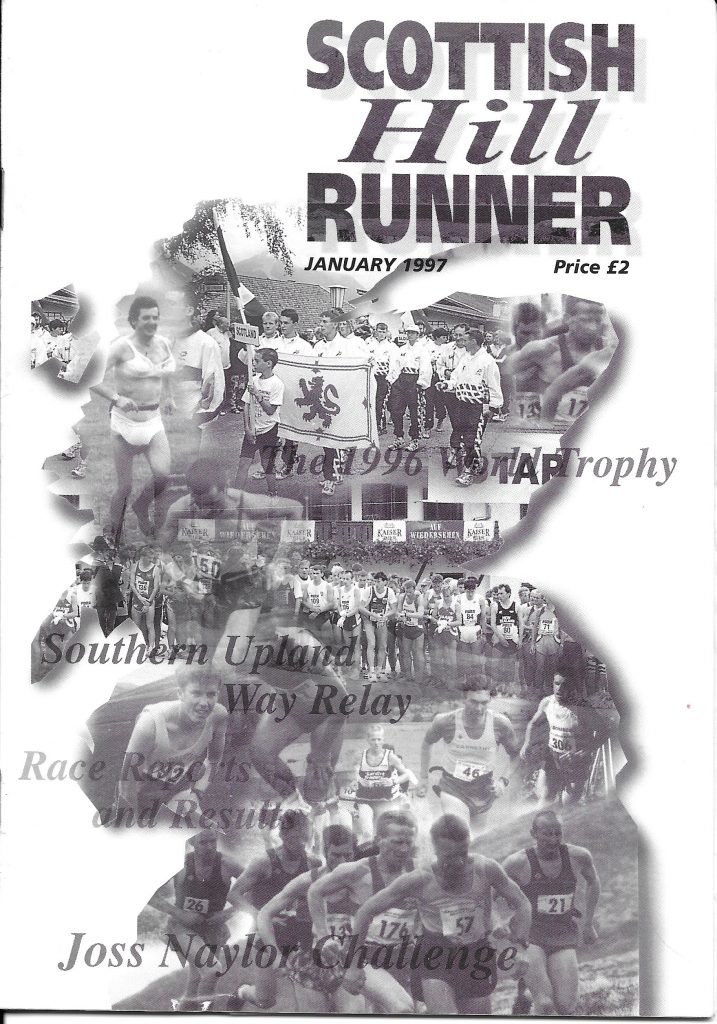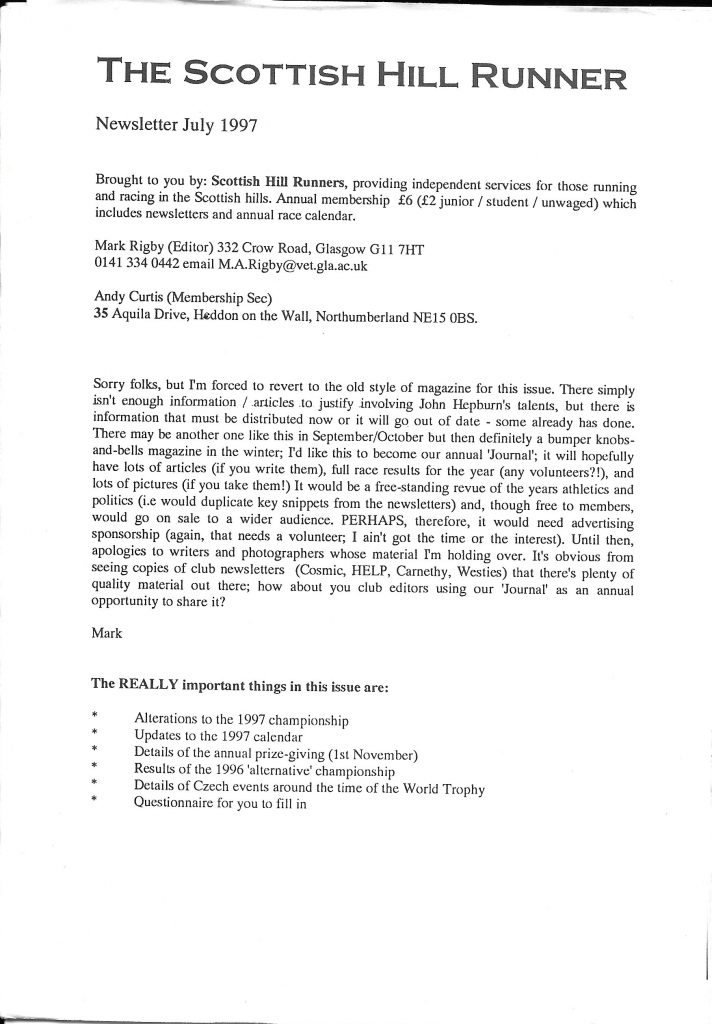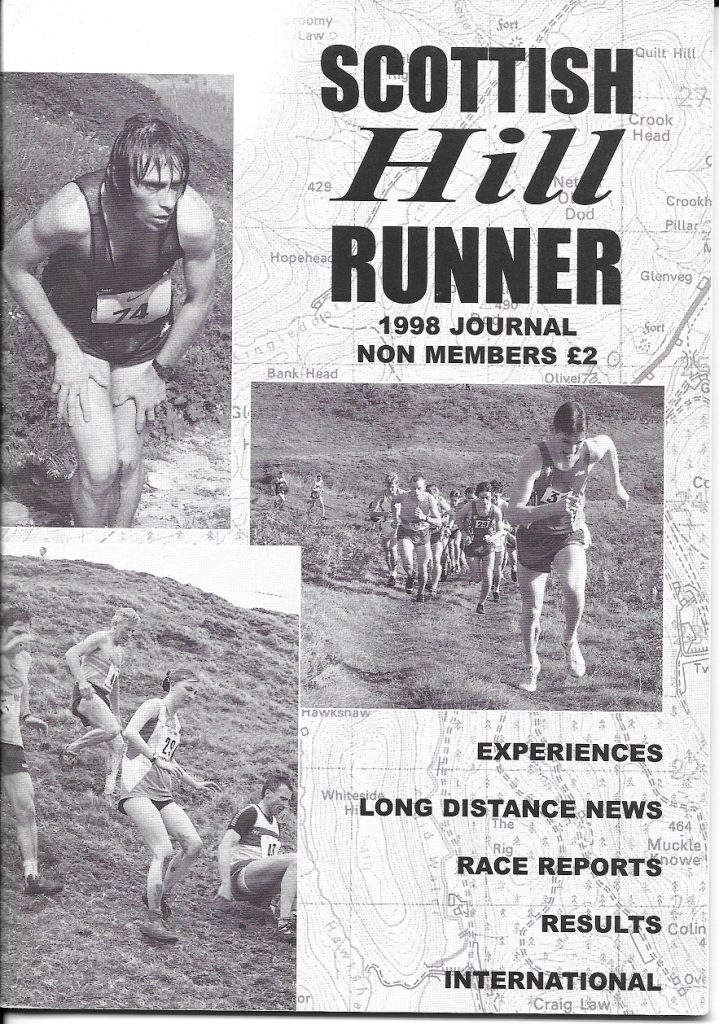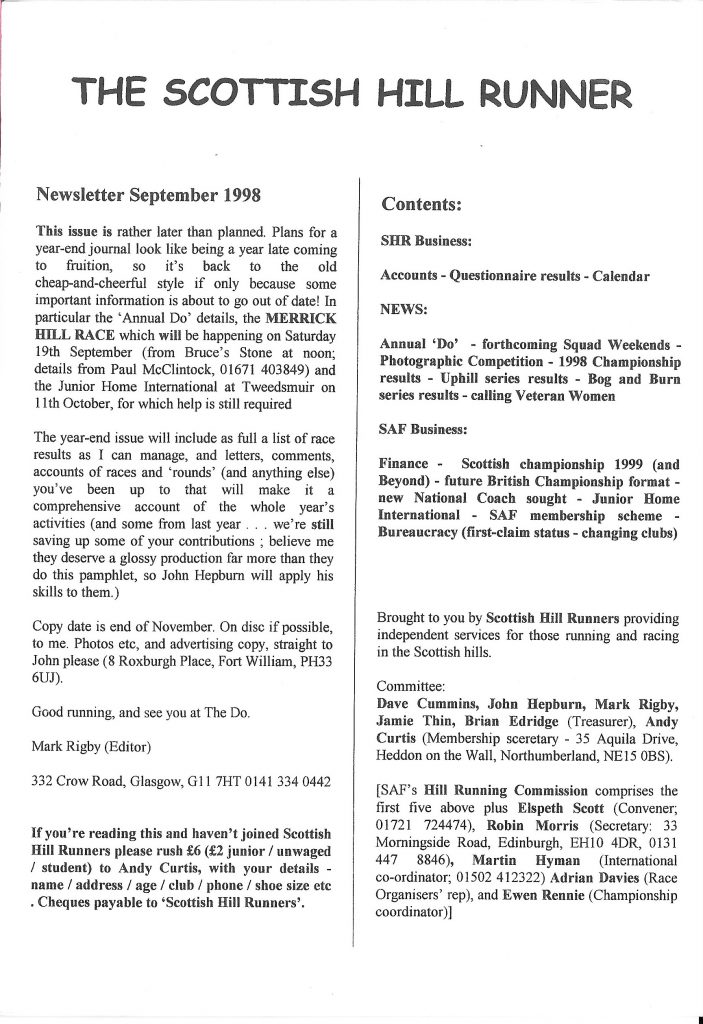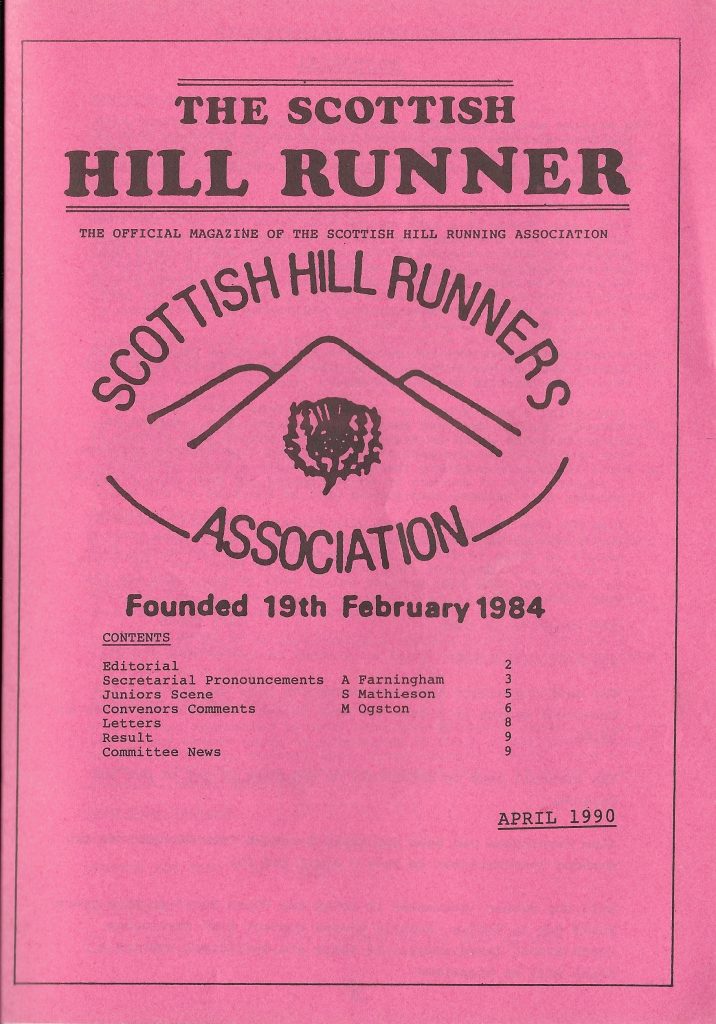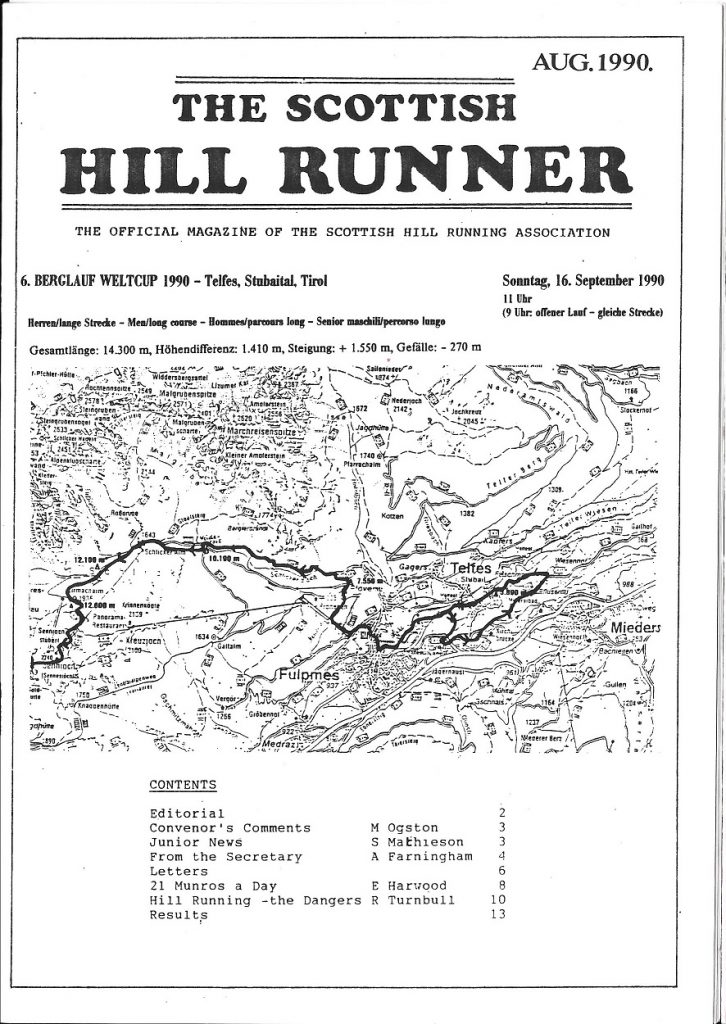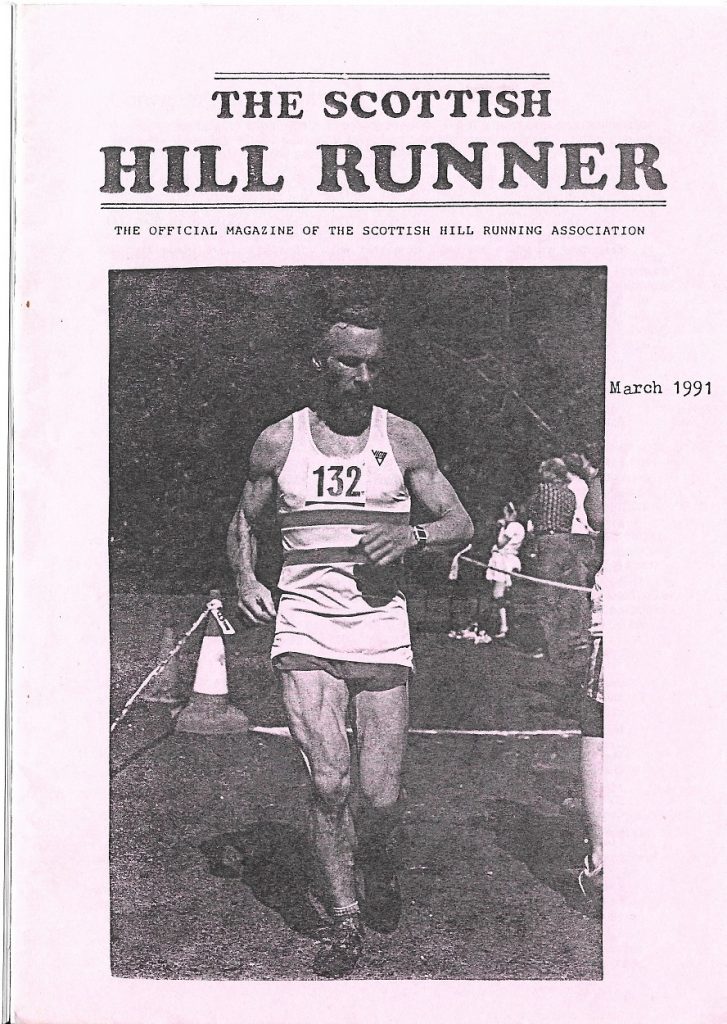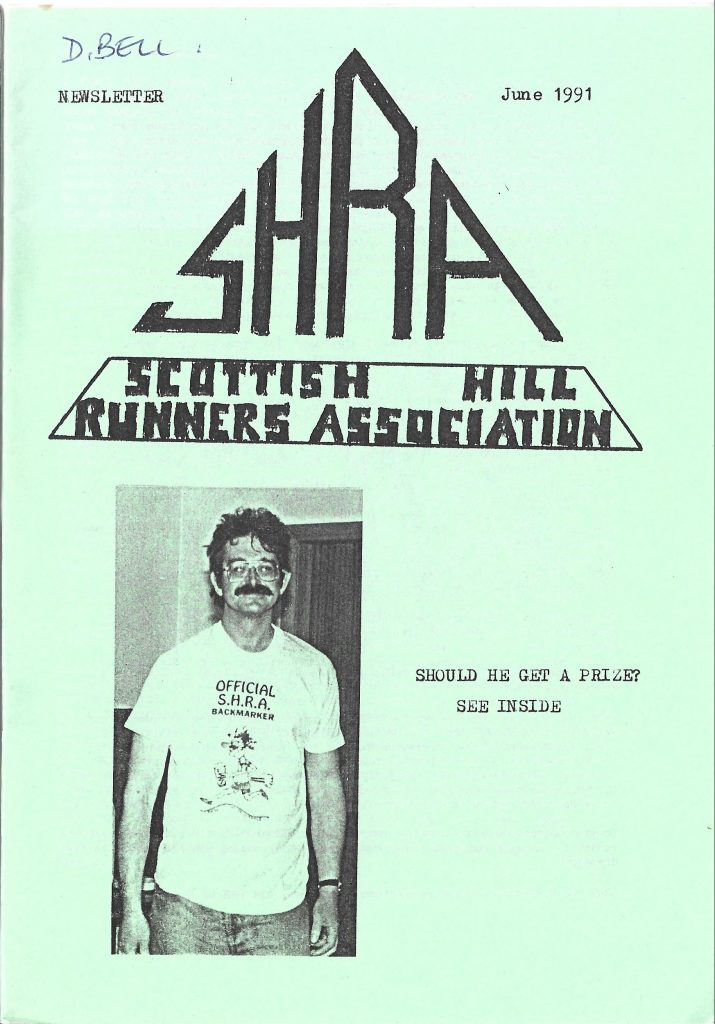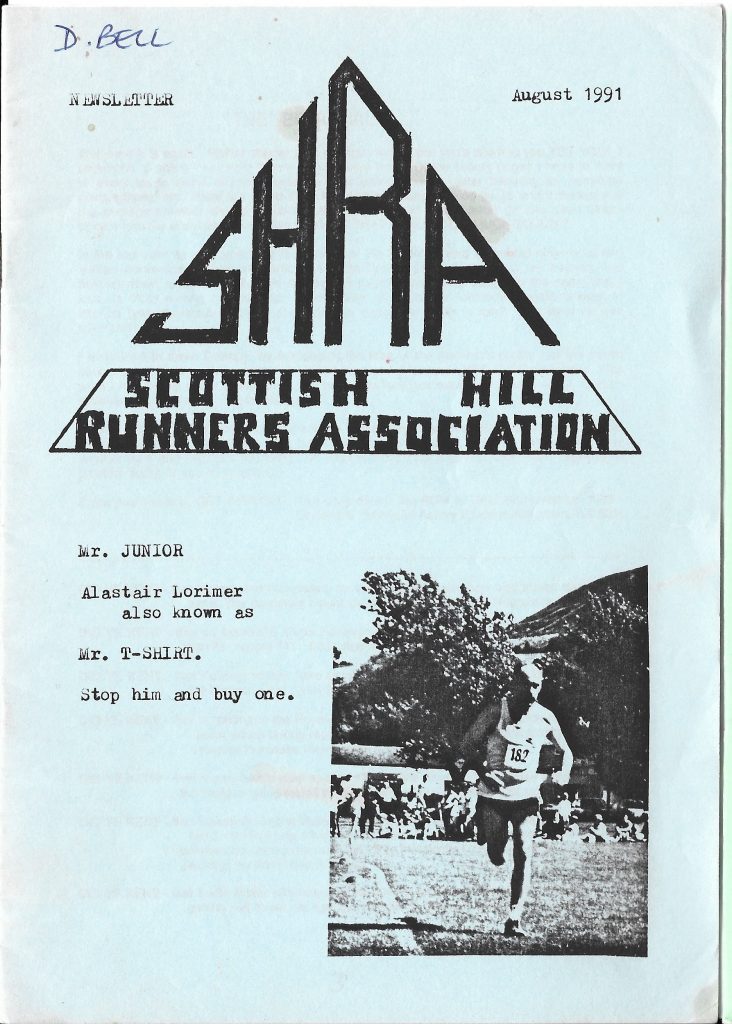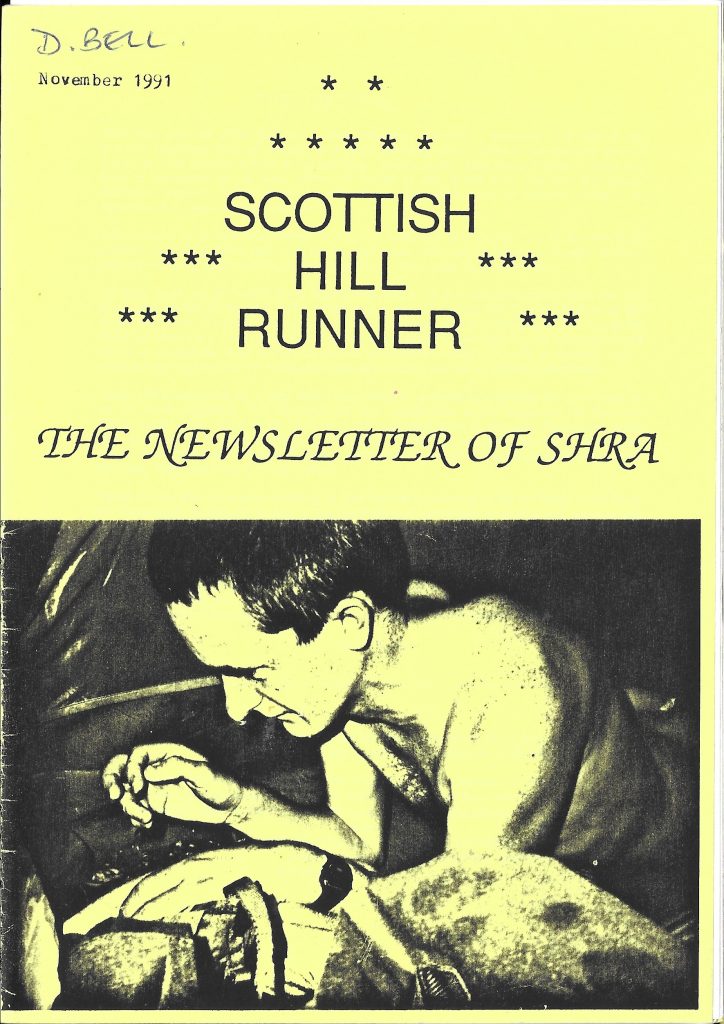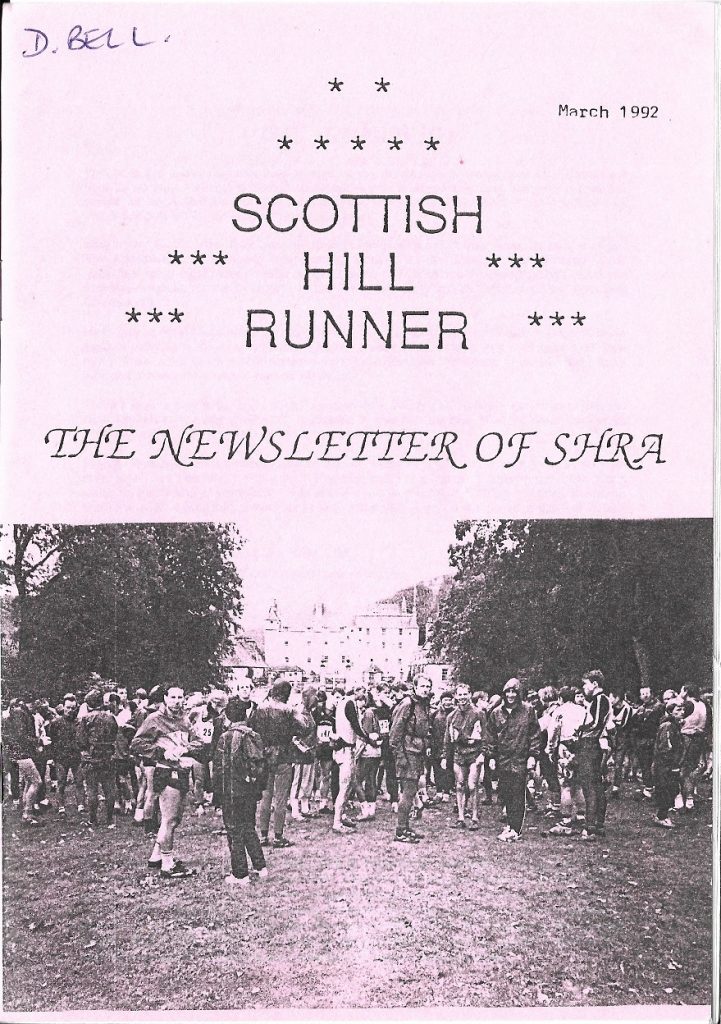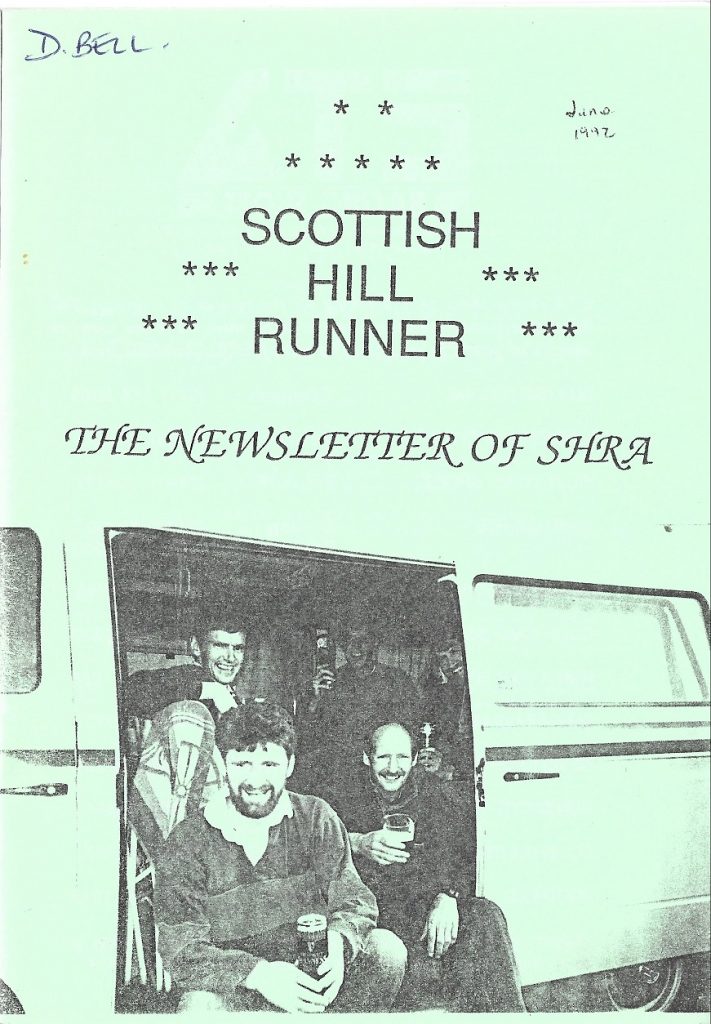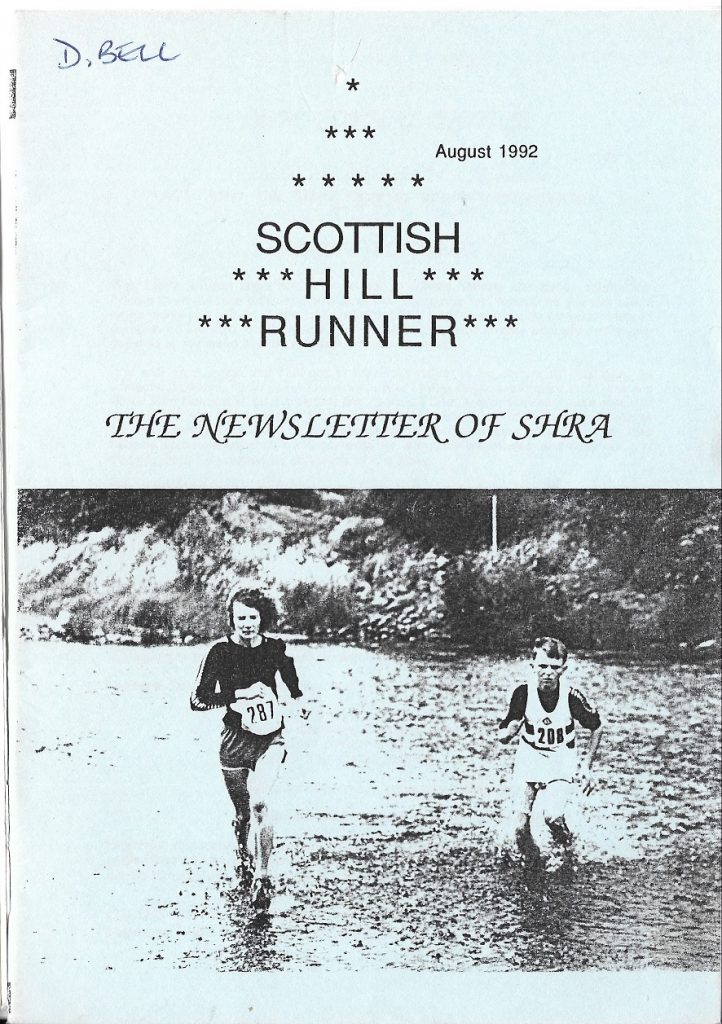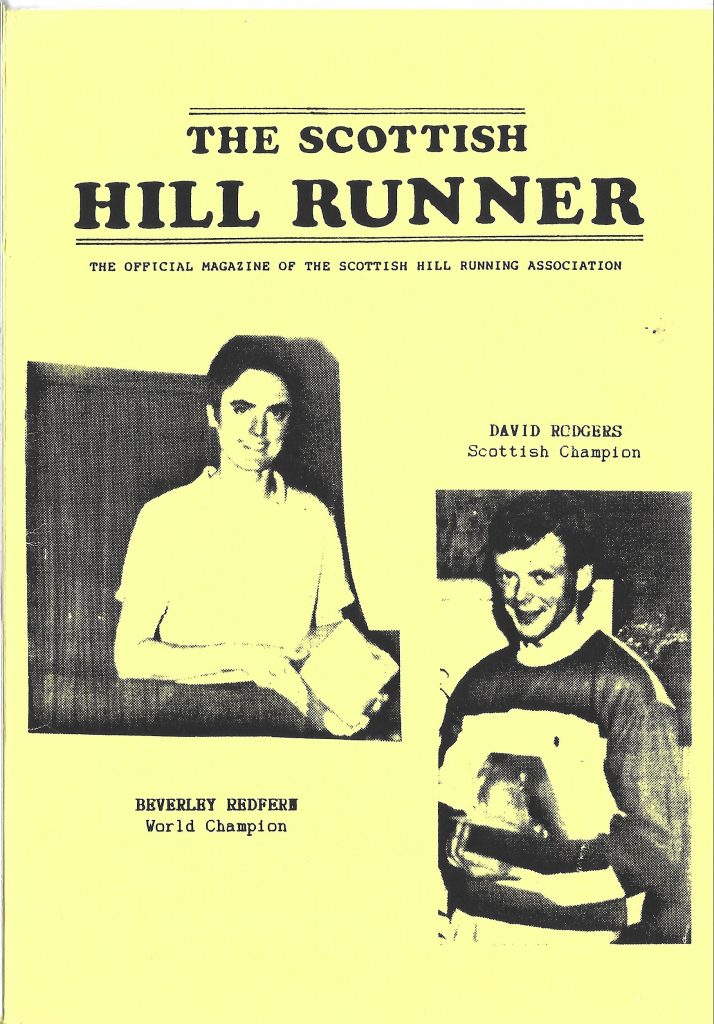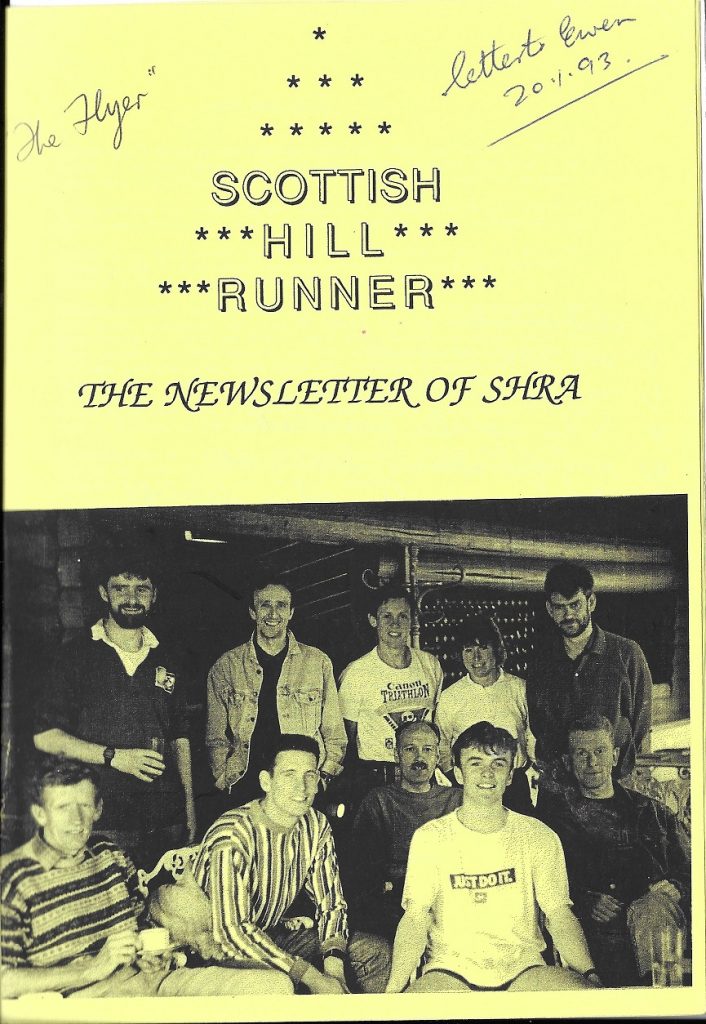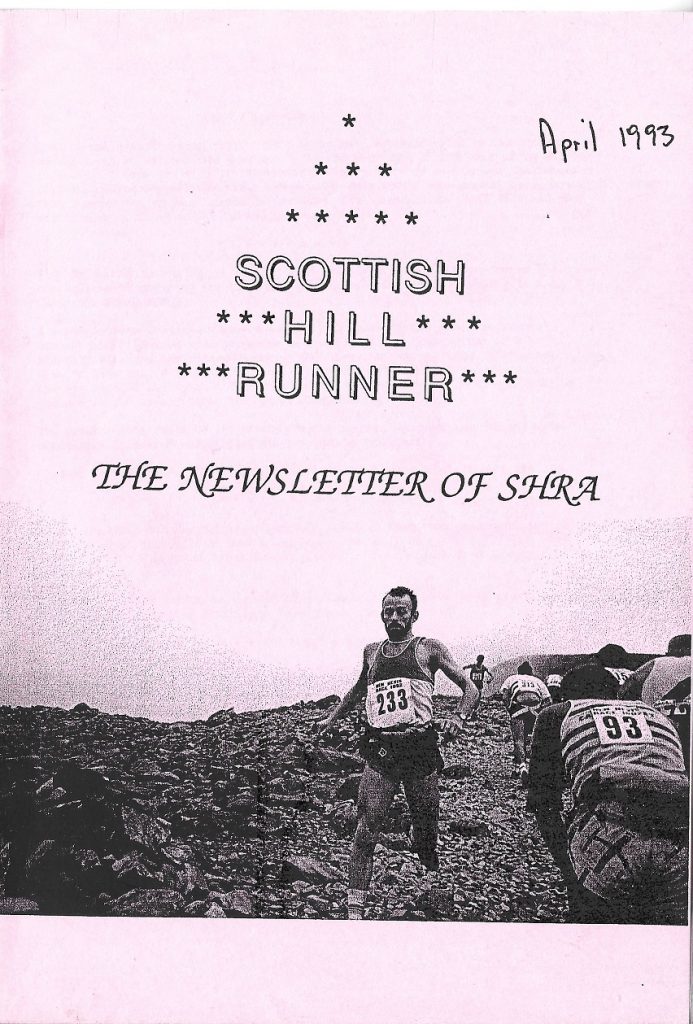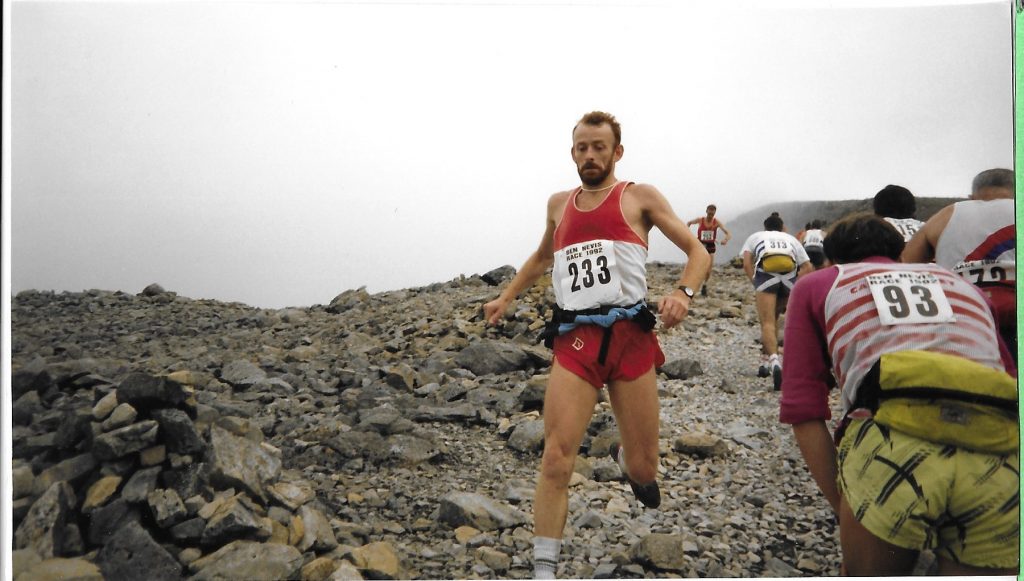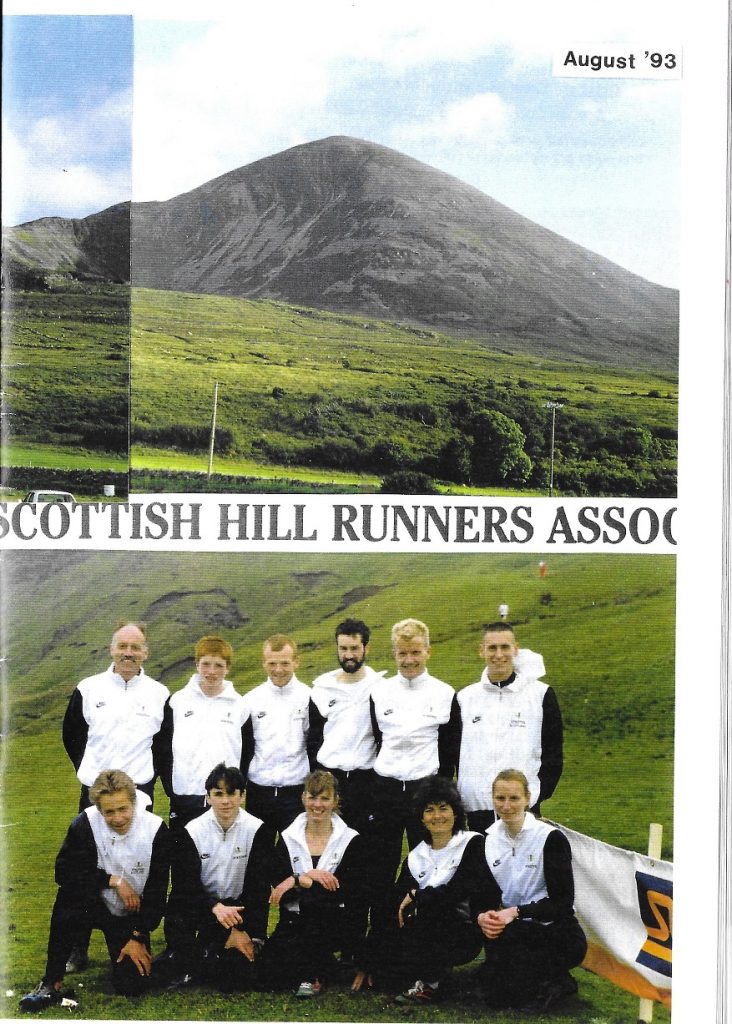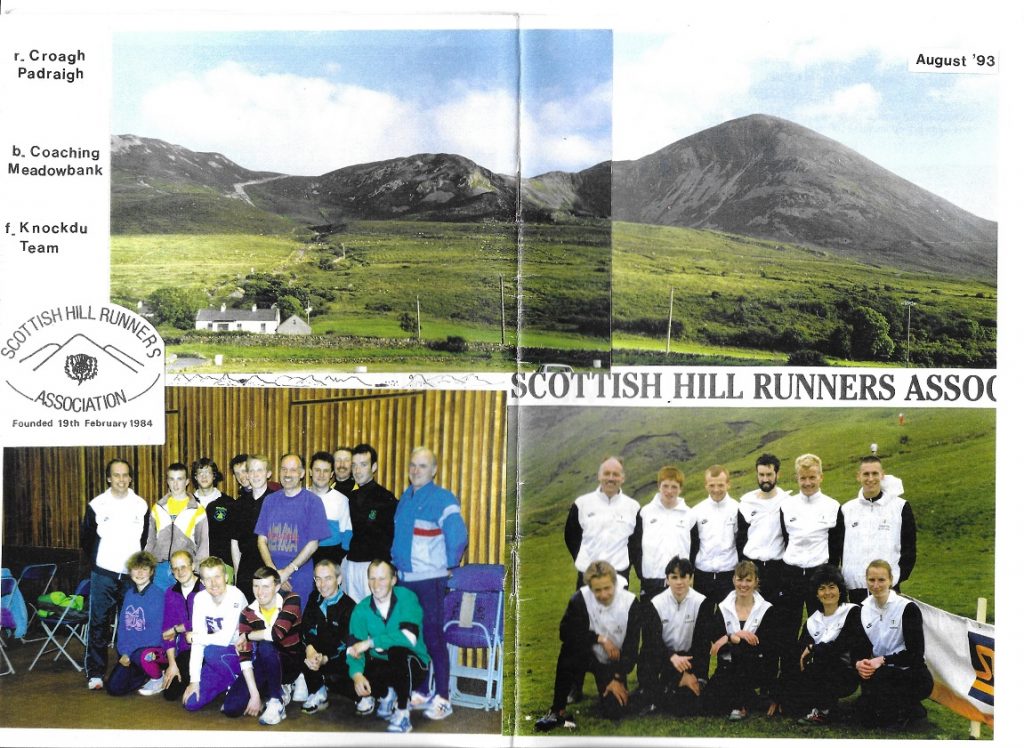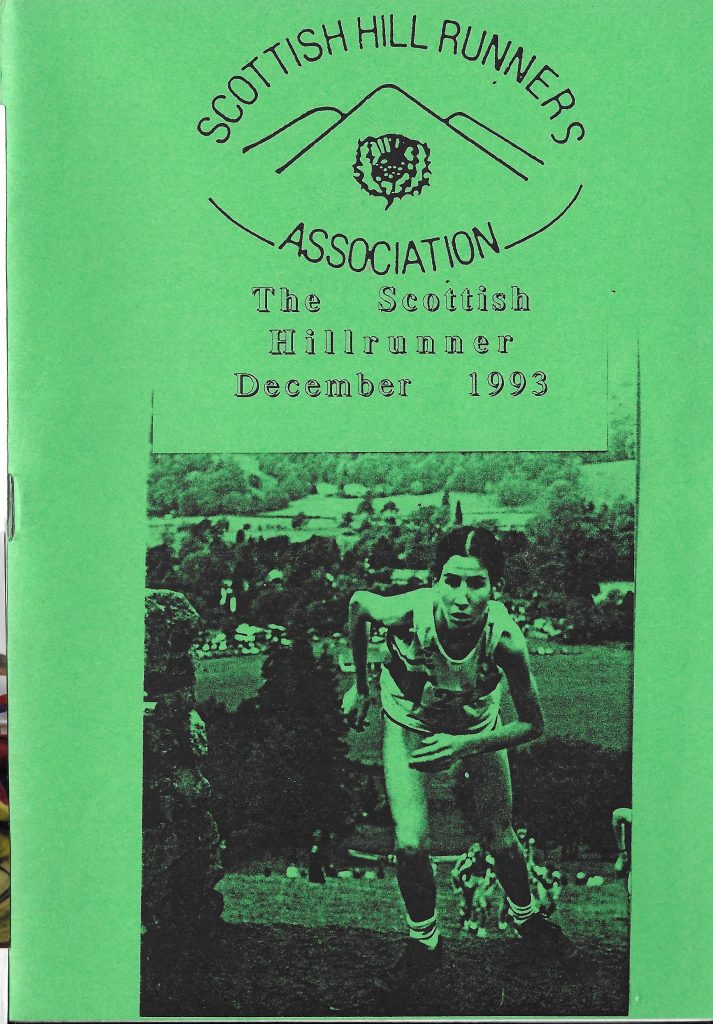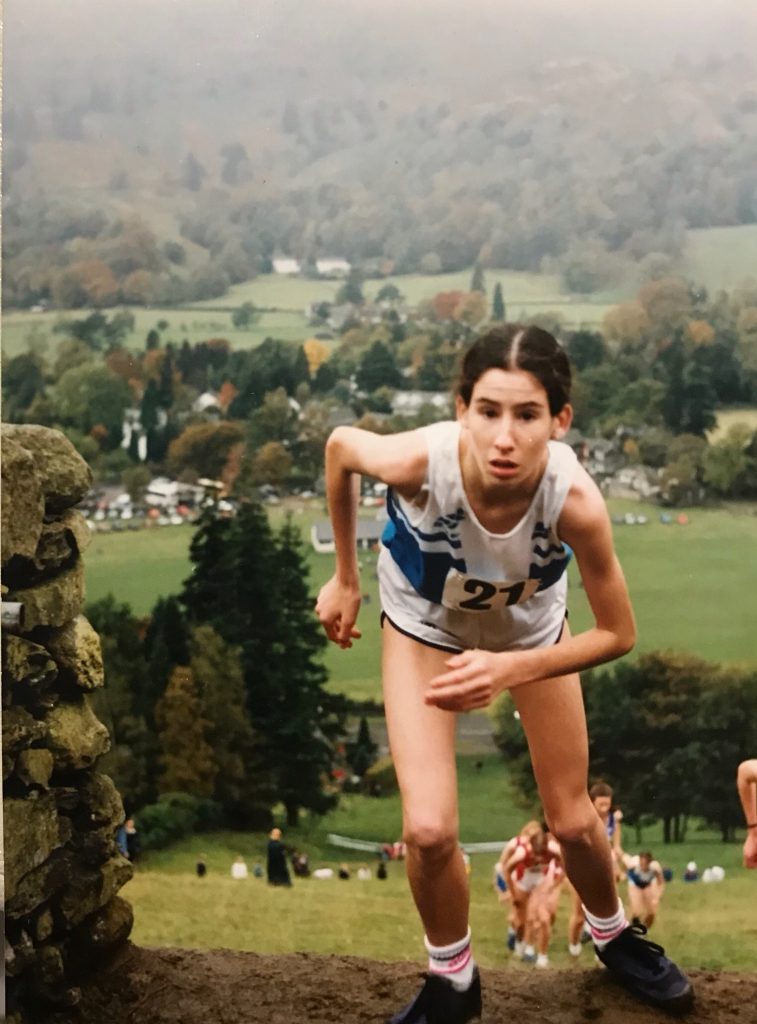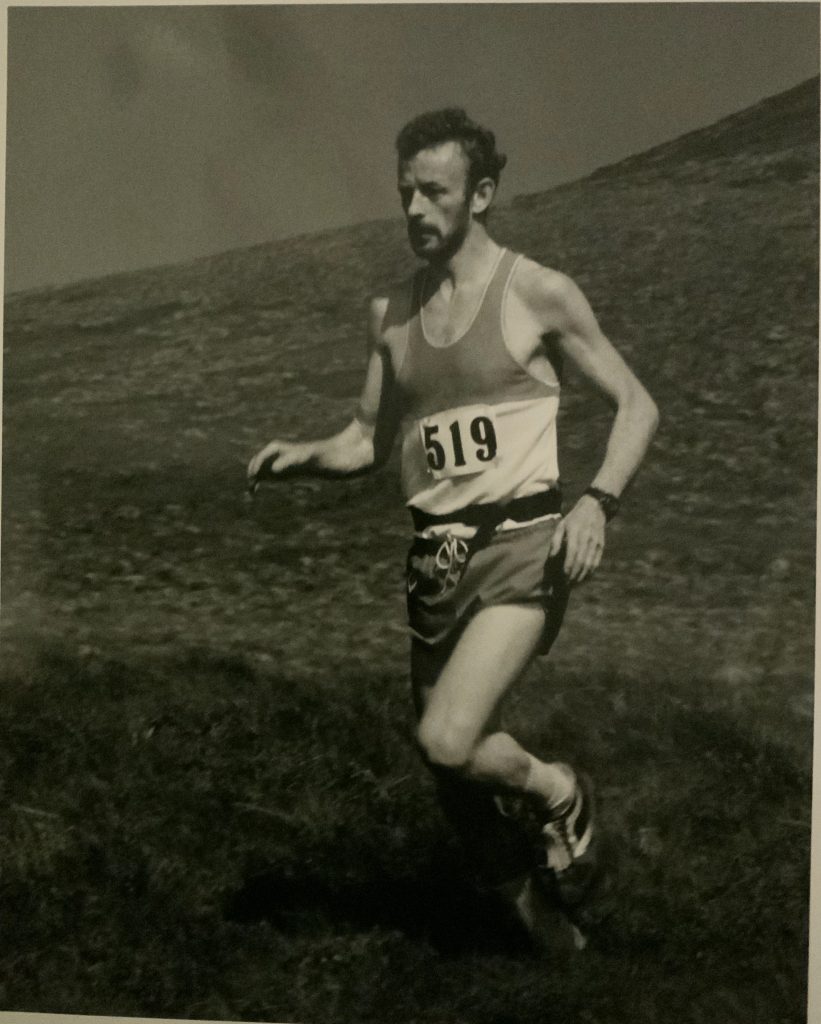
It is possible to look at the career of any sportsman, particularly a successful sportsman in terms of awards. medals or trophies won to miss the big picture because of the focus on the triumphs. Tom McKean was often accused of not racing enough but when time was taken to look at all the racing that he had done over the season, then the numbers contradicted that impression. With that in mind, we can look at Denis’s career as a runner. He himself describes his career in ‘phases’ and accordingly what follows is numbered in chronological sequence. Some have been referred to in the previous page but as a totality the whole is overwhelming.

As a pupil at Knox Academy in Haddington, he remembers doing the junior and senior ‘marathons’ where he thinks that ‘a place’ in first year ‘junior’, and possibly 1st in Jnr in 2nd year.
Then 2nd in senior marathon in 3rd year (behind Drew Donaldson who was probably in his 4-5th year?)
Then 1st, for 4th, 5th, 6th year..
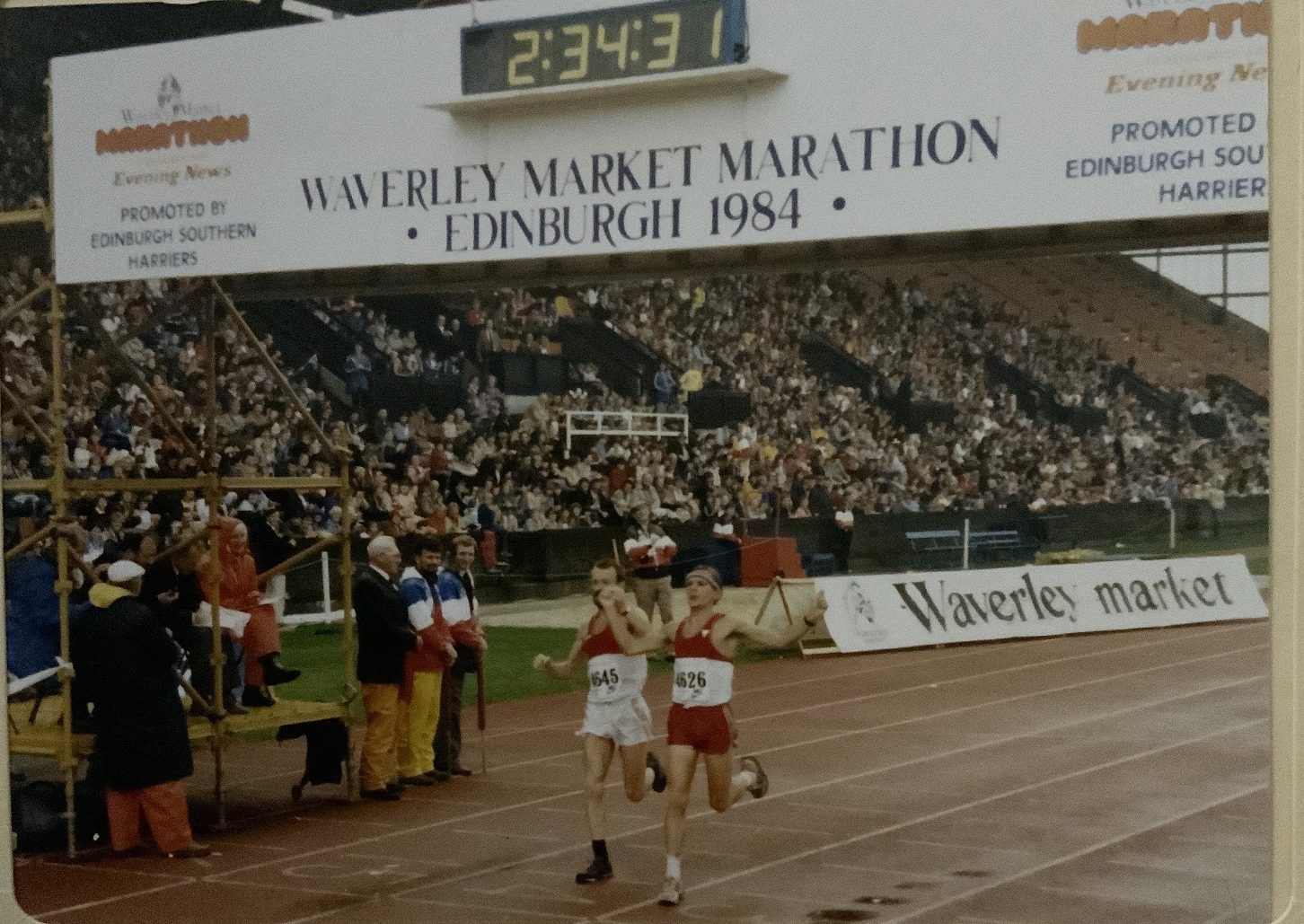
After the school races he joined Haddington East Lothian Pacemakers and started running Marathons – seen above finishing the Edinburgh Marathon. The marathon memories are discussed next>
Marathons : Trial in August on my own course getting 2.36.xx just before my 30th birthday, 15/8/82. [Dad was away a few days later].
Then Edinburgh, 2.34.xx, September 1984, with great running pal Phil Beeson, over the line together. I think we were 26th out of possibly 2,000 runners
Then Snowdonia in October 1984 with the disastrous ‘dehydrated’ finish and 3rd in 2.42.xx behind Mike Neary and Malcolm Jones. [I clearly relate to Callum Hawkins’ desperate failure at the marathon ‘3’years ago when he ‘dnf’ due to dehydration shock].
Finally Galloway in April 1985, 4th in 2.31.xx…another torrid last few miles with heaving stomach, chilled and maybe bad water at last station…
Of course as a member of HELP he ran in Club, District, National and open races and of this period he says, ” In between times I cannot think of anything exceptional in terms of road races or Cross-Country…but I was mightily glad not to lose any places at the Edinburgh to Glasgow relay I ran in (one and only) covering the last leg. in the team that was 14th in 1988. It is interesting to look at the results of the races he ran in, he was relatively better placed, further up the field and running in better company than in the road races.
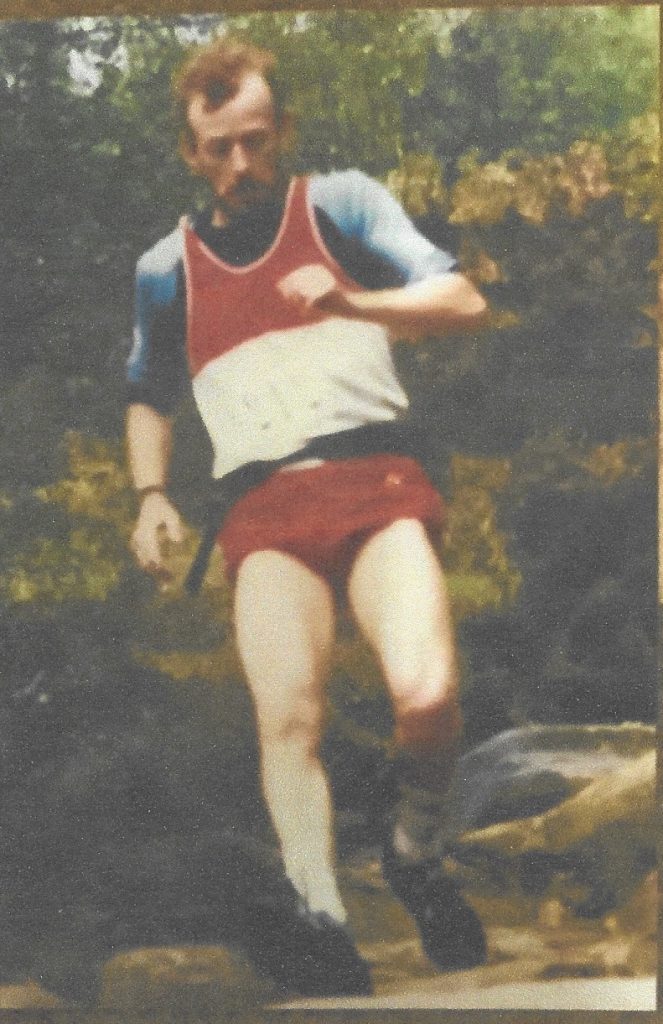
Denis came to hill racing rather late compared to many (most?) of competitors. He says of his hill racing career:
The first year or two were a mighty and serious introduction…
So, 1985 and ‘86 were a bit special and I think Carnethy, Ben Lomond, Bens of Jura (what a classics introduction!!), Chapelgill, Moffat Chase, Two Breweries, Angus Munro’s (old course) ..the Ben….
ALL of these were standouts and I think generally I was very proud to run and survive the big ones with decent results (???) ...so these early ‘apprenticeship years’ were precious…I learned loads from my superb peers, and refined hill-craft!
Other stand-outs have to be the races that helped me clinch my medals, so in Scottish Champs of 6 out-of-9 races I knew that being in the ‘first 6’ of each of those’9’ (if I could manage them all.) I’d highly likely get a medal’; I got bronze, silver and gold (and gold vets) so obviously every one of my Champs races were precious…
I knew I could get gubbed by ‘many’ on the shorts or even mediums, but I knew I had an edge over most on the longs!
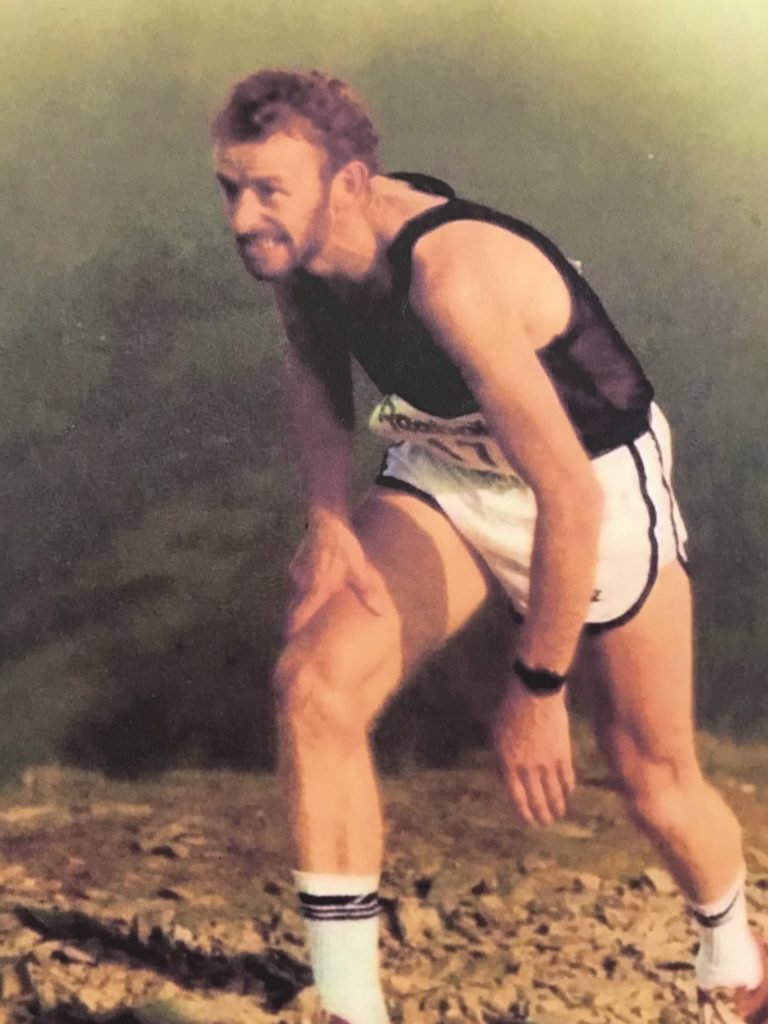
And of course, there were the internationals. Of these he says this.
“Of course ‘selection’ races were precious to put myself into a shortlist…. I think I was favoured from ‘overall racing ability’ for at least 2 or 3 of the 4 vests I got. I maybe ‘scored’ at the Dollar Hill uphill selection race at Tweedsmuir, but I cannot remember. Of course I cherish all my vests, and at the times, believed I had done ‘decently well’ . but used to then think back ‘could I, should I have done a bit better?’ for the Team results. (I think I was in 4th team in Keswick…?).. The internationals were pitched at a different level to the Scottish Champs, and were ‘all-or-nothing’ one-off races, so the pressure was rather different. In the Scottish vests’ I always ‘placed’ (first 3 of 4 to count)…probably reflecting my ‘consistent decent-mediocrity’…!
I would think that he does himself down a bit in the remarks above on selection. I have been involved in team selection and don’t know if there were ever any big favours done. When he says that his overall racing ability was in his favour, it would probably be the case that ‘overall racing ability’ was one of the criteria against which all contenders are measured. Have a look at the face in the picture above – it is the face of a competitor, not the face of a time triallist. Selectors want competitors.
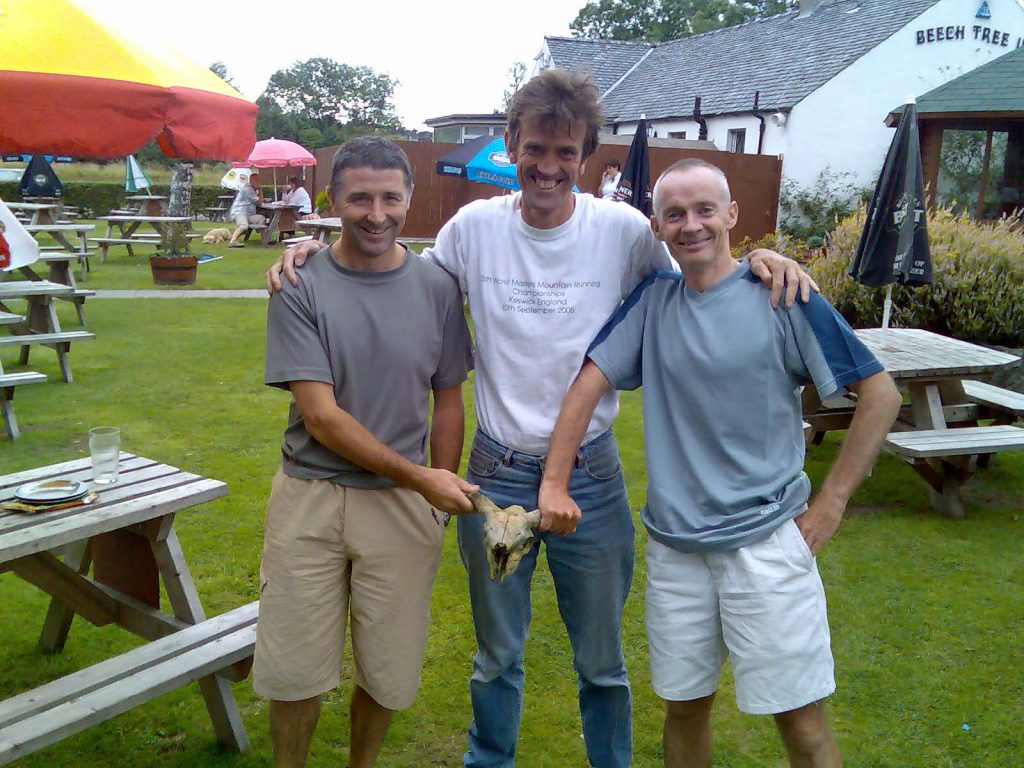
Des Crowe, Malcolm Patterson and Dermot McGonigle
When talking to athletes coaches often urge them to be ‘task focused’ not ‘self focused’. It would seem to be the case that Denis is a natural example of what coaches look for. He says when asked a couple of times for detail of races, “Being honest, I never diarised, – usually a wee note in the race calendar or on the back of my race number. I was not precious about the ‘keeping of racing results’ and I was too busy to be a good personal record keeper. At the end of the day, ‘sights were set on objectives’ and race places (rarely ‘I’m going to win this one’!) I treated every race as history!…what’s the next immediate challenge in front of me? Of course I had to have a good feel for who were close to me and thus ‘could I manage to get a few points off ‘so-and-so’?’ So we have a task focused competitor who didn’t keep diaries. Maybe more on this later, but has taken the trouble to reconstruct many of the key races of his career which looks like this.
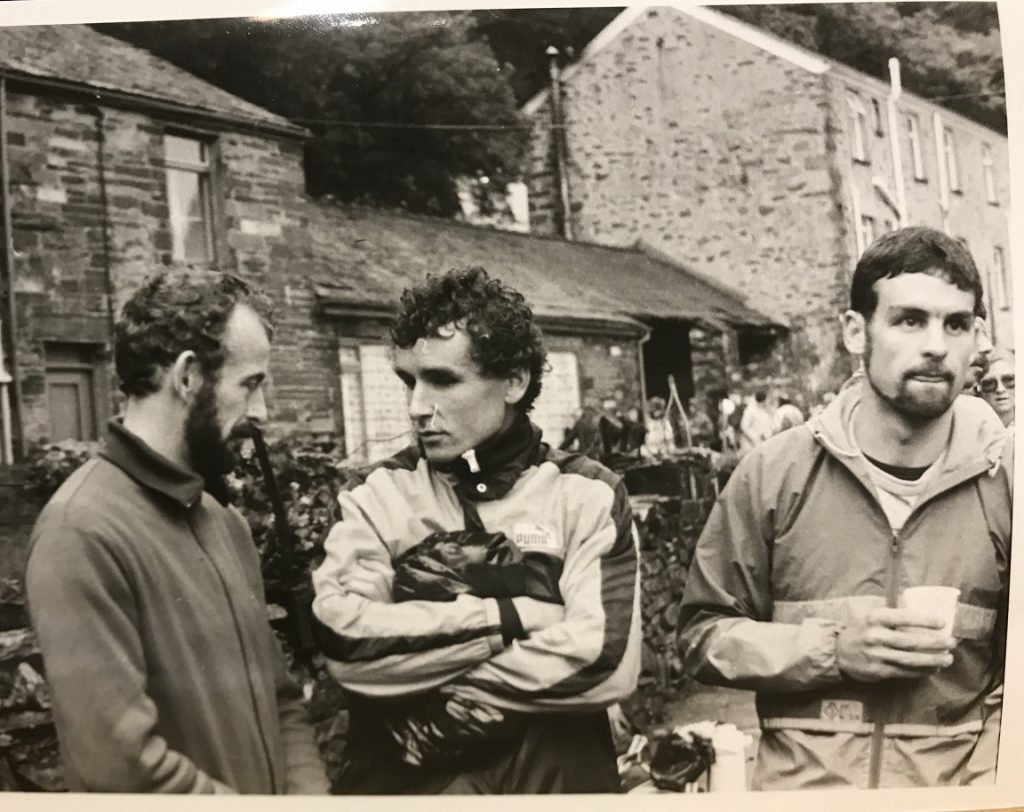
Marathons
Galloway, 28/4/85, 4th [P Howarth, 2.27.10; M Bately 2.31.02; D Thomas 2.31.07; D Bell 2.31.29.
Early races [these are off my race numbers and a few certificates/ race result sheets]
Carnethy, 16/2/85, 11th, 53m 56s (in racing flats!)
Chapelgill, 23/3/85, 8th, 20m 34s, 1 minute behind winner; 68 starters.
Ben Lomond, 4/5/85, 4th, 67m 55s.
Bens of Jura 25/5/85, 8th, 3hr 51m 16s (82 starters; winner 3h 16m !)
Dollar, 8/6/85, 6th, 42m 33s (69 starters)
Eildons 22/6/85, 19th, 29m 24s (6th scot, probably a British Champs race. Winner H Symonds, Kendal, 27m 31s)
Ben Nevis, 7/9/85 , 28thth, 1hr 37m 25s (500 starters/435 finishers) Winner H Symonds, Kendal, 1:28:00
Total (underestimate of the total – doesn’t include club races, cross-country, etc) 7 Hill Races, 1 Marathon.
1986 Sco Champs – 4th @ 82 points, behind D McGonigle 116; A Farningham, 109; A Curtis 89 points.
Carnethy 15/2/86, 8th, 65 mins?? 5th scot.
Chapelgill 22/3/86, 5th, 21m 38s??
Dollar 7/6/86, 5th, 43m37s , 5th scot [D McGonigle 1st, 42m 17s’ A Curtis, A Farningham, R Boswell)
Lomond of Fife 15/6/86, 1st, 1hr 07m 47s. [D McGonigle 2nd, D Rodgers, A Farningham]
Eildons 21/6/86, 10th, 28m 11s, 4th scot.
Snowdon, 19th July 86, 16th, 1hr 09m 47s, 3rd Scot – (C Donnelly 4th, 1.05.16, D McGonigle 15th 1.09.32). (And I think 22nd at top, probably 10th fastest descent)
2 Breweries, ?? Sept 86, 3h 06m 21s, 6th (165 starters)[1st J Maitland, 2h 48m, 2nd A Farningham, 5th A Curtis]
Ben Nevis, 6/9/86, 1 h 36m 11s, 23rd. ‘disaster..legs went at the Green Bank when placed about 14th…!?.’ Winner C Donnelly (Eryri) 1:25:48
Tinto, 8/11/86 , 6th (34.50, same time as Ian Davidson) out of 103 starters ….winner A Curtis, 40 secs ahead.
Total: 9 Races (see note for 1985) Top Ten: 5 + 3 top ten Scots
Carnethy 5 14/2/87, 12th o/a, 4th scot [excl M Patterson, running for Dark Peak FR] 52m 22s.
Criffel ???, 11th o/a, 6th scot 52m 28s
Ben Lomond 9/5/87, 1h 08m 19s, 11th, and 6th scot.
Dollar 12/6/87, 7th, 43m 36s
Lomond of Fife 13/6/87, 4th, 1h 07m 08s
Eildons 20/6/87, 5th, 28m 06s
Edinburgh 7 Hills 21/6/87, 5th, 1h 37m 48s
N Berwick Law ??June, 4th, 18m 33s
Angus Munro’s 9/8/87, 6th, 3h 49m 53s
Caerketton 19/8/87, 5th, 13m 31s
Arrochar Alps 22/8/87, 8th, 3h 31m 34s
2 Breweries 26/9/87, 6th, 2h 48m 06s
Total: 12 Races (9 top ten) + 3 top ten Scots
Carnethy 5, 20/2/88, 3rd, 49.55****
Criffel 13/3/88, 4th, ???m s
Chapelgill 26/3/88, 10th, ??m s
Kaim 15/5/88, 5th, 28m 39s
Bens of Jura 28/5/88, 7th, 3h 22m 35s
Traprain Law 11/6/88, 2nd, 39m 47s (Johnny Ross, 39m 39s)
Lomond s of Fife 12/6/88, 3rd, ??m s
Edinburgh 7 Hills 19/6/88, 2nd, 1h ?m ?s (A Farningham)
Eildons 2 Hills 25/6/88, 3rd, 28m 45s (AFarningham; J Wilkinson)
Moffat Chase 4/7/88, ?????
North Berwick Law 3/8/88, 3rd, 18m 06s (J Wilkinson, A Farningham)
Angus Munro’s 7/8/88, 2nd, 3h 16m 52s (C Donnelly, 3h 10, 3rd A Farningham, 3h 17)
2 Breweries 24/9/88, 9th, 2h 52m ?s (J Maitland, 2h 37m ?s0.
Pentlands Skyline 9/10/88, 2nd, 3h 16m 52s (C Donnelly, 3h 10m 05s; 3rd A Farningham, 3h 17m 02s..)E to G 13/11/88 Rod Stone; Johnny Ross; Joe Forte; Andy Graham; Peter Marshall; John Graham; Scot Mathieson; DB (31m 06s)
Keswick WMRT, ‘Coledale Horseshoe’, 16/10/88, 21st, 74m 48s (C Donnelly 5th, 70m 25s; 13th J Maitland 72m 45s. 4th team on 39 points, 11 behind Switzerland).
Total: 16 races, 1 WMRT, 4 seconds, 4 thirds, 4 more top ten.
And in the WMRT, 17/9/89 [ladies 5th; 6,25,26th :short men 3rd; 2,12,15th ]: Debis was in the long men’s race finishing 8th; 28,31,46th – 10 points behind England in 7th (66 points).
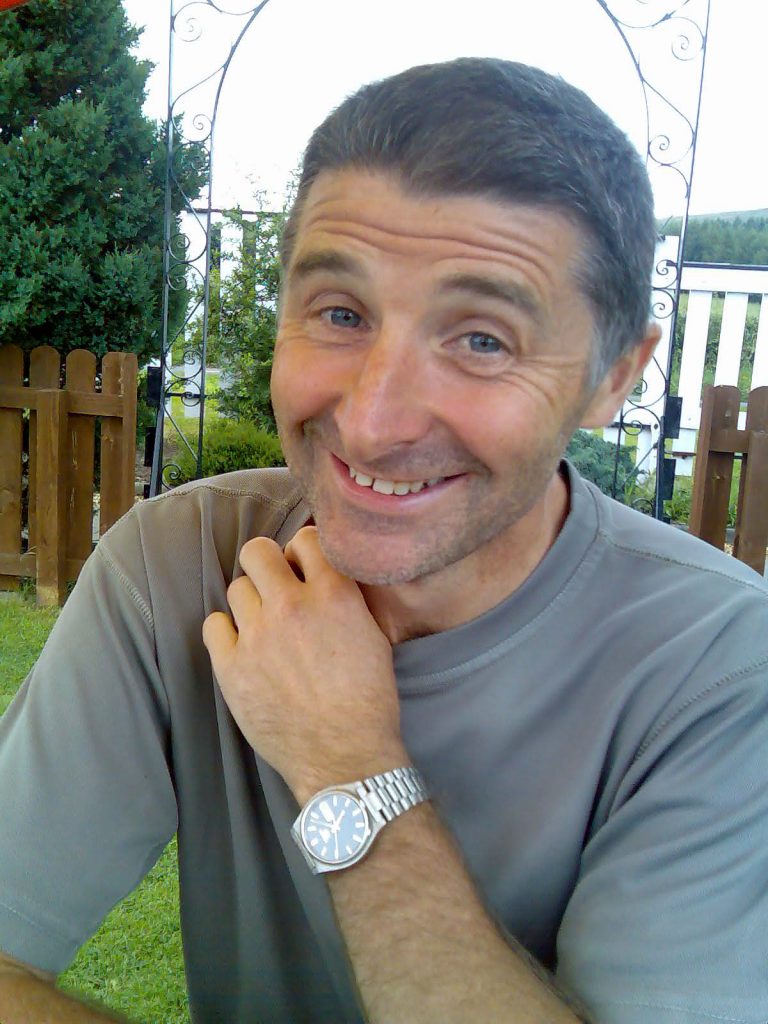
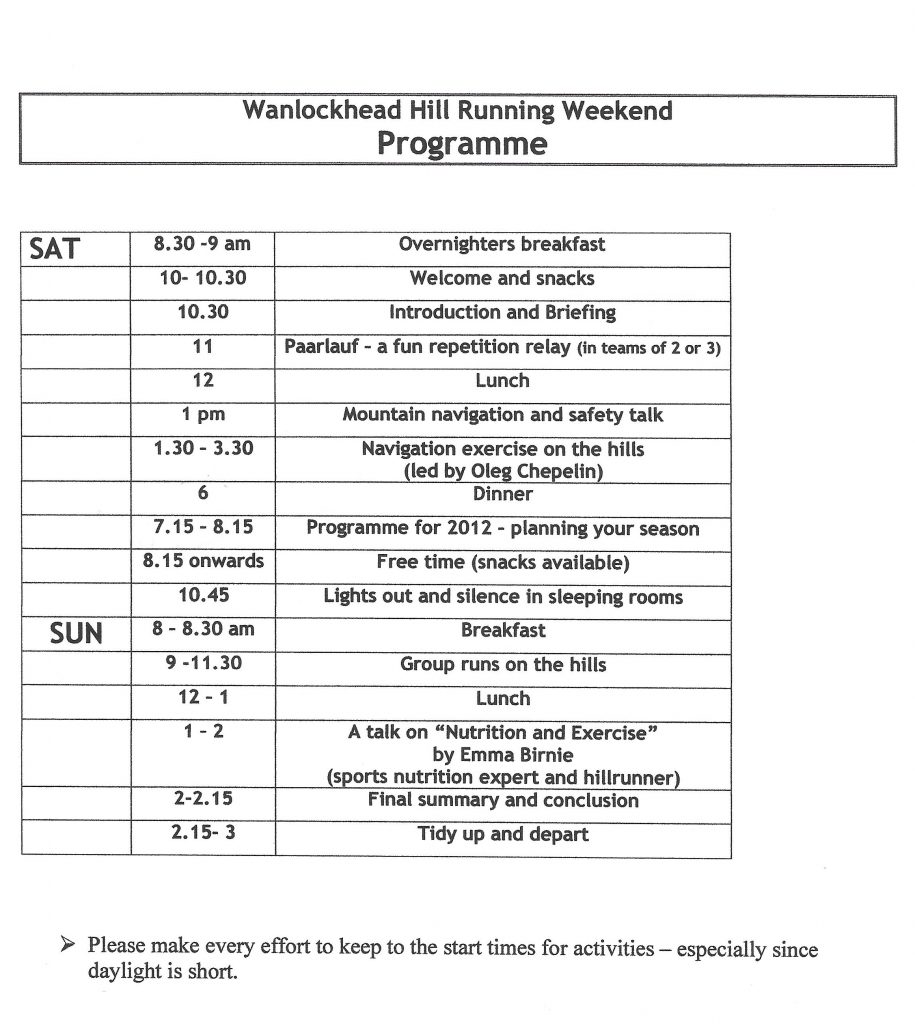 Attached to this information sheet was a list of participants with their details which included their name, phone number, where they were from, whether and how much they had paid and notes which included their age if they were juniors. At this camp, there were 16 juniors and 26 seniors; 15 females and 27 males. There were seven staff members. These were Malcolm Patterson who was a run leader; Mags Turnbull head caterer, Edel Mooney helper and coach, Oleg Chepelin who was an orienteering coach, Jill Horsburgh Caterer, Denis Bell Coach and Martin Hyman who was noted as ‘Wise Old Man’. The weekends were always successful but while talking about Squad Weekends, the Juniors were not left out: how could they be when they had been doing so well on the international scene in the early 90’s? Staying with 1996, there was a very good one at the Comrie Croft Bunkhouse, between Comrie and Crieff. The review below is from the ‘Scottish Hill; Runner’ of June 1996.
Attached to this information sheet was a list of participants with their details which included their name, phone number, where they were from, whether and how much they had paid and notes which included their age if they were juniors. At this camp, there were 16 juniors and 26 seniors; 15 females and 27 males. There were seven staff members. These were Malcolm Patterson who was a run leader; Mags Turnbull head caterer, Edel Mooney helper and coach, Oleg Chepelin who was an orienteering coach, Jill Horsburgh Caterer, Denis Bell Coach and Martin Hyman who was noted as ‘Wise Old Man’. The weekends were always successful but while talking about Squad Weekends, the Juniors were not left out: how could they be when they had been doing so well on the international scene in the early 90’s? Staying with 1996, there was a very good one at the Comrie Croft Bunkhouse, between Comrie and Crieff. The review below is from the ‘Scottish Hill; Runner’ of June 1996. Attached to this information sheet was a list of participants with their details which included their name, phone number, where they were from, whether and how much they had paid and notes which included their age if they were juniors. At this camp, there were 16 juniors and 26 seniors; 15 females and 27 males. There were seven staff members. These were Malcolm Patterson who was a run leader; Mags Turnbull head caterer, Edel Mooney helper and coach, Oleg Chepelin who was an orienteering coach, Jill Horsburgh Caterer, Denis Bell Coach and Martin Hyman who was noted as ‘Wise Old Man’. The weekends were always successful but while talking about Squad Weekends, the Juniors were not left out: how could they be when they had been doing so well on the international scene in the early 90’s? Staying with 1996, there was a very good one at the Comrie Croft Bunkhouse, between Comrie and Crieff. The review below is from the ‘Scottish Hill; Runner’ of June 1996.
Attached to this information sheet was a list of participants with their details which included their name, phone number, where they were from, whether and how much they had paid and notes which included their age if they were juniors. At this camp, there were 16 juniors and 26 seniors; 15 females and 27 males. There were seven staff members. These were Malcolm Patterson who was a run leader; Mags Turnbull head caterer, Edel Mooney helper and coach, Oleg Chepelin who was an orienteering coach, Jill Horsburgh Caterer, Denis Bell Coach and Martin Hyman who was noted as ‘Wise Old Man’. The weekends were always successful but while talking about Squad Weekends, the Juniors were not left out: how could they be when they had been doing so well on the international scene in the early 90’s? Staying with 1996, there was a very good one at the Comrie Croft Bunkhouse, between Comrie and Crieff. The review below is from the ‘Scottish Hill; Runner’ of June 1996.